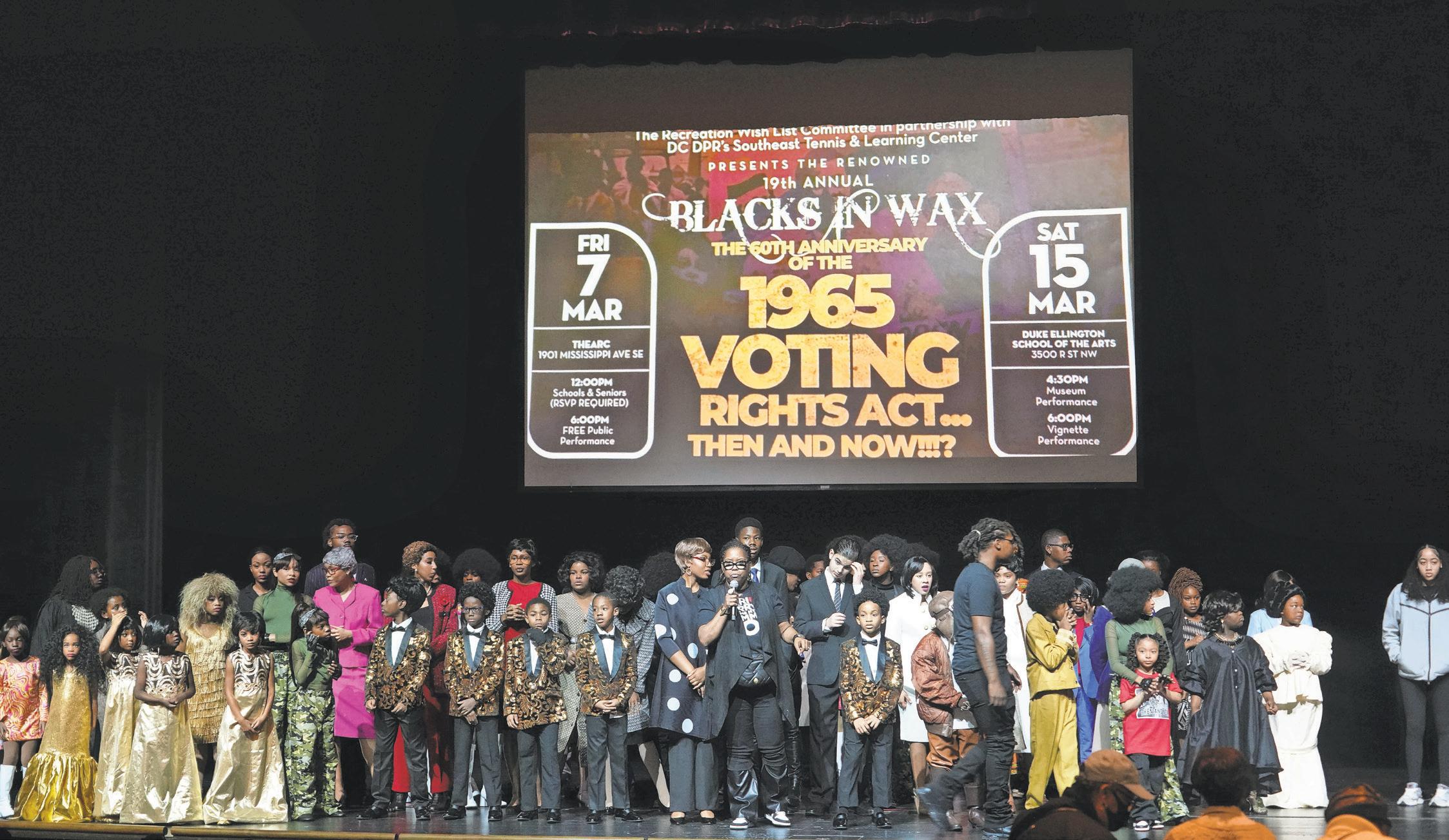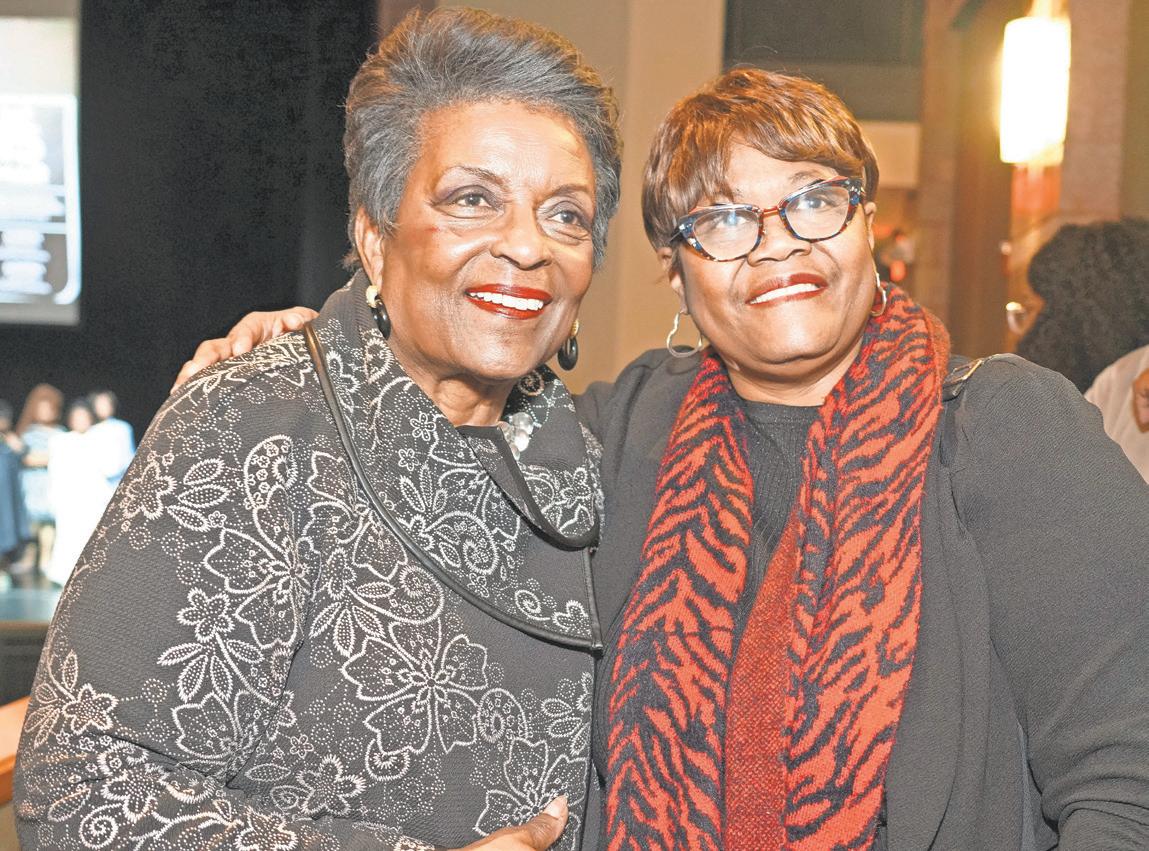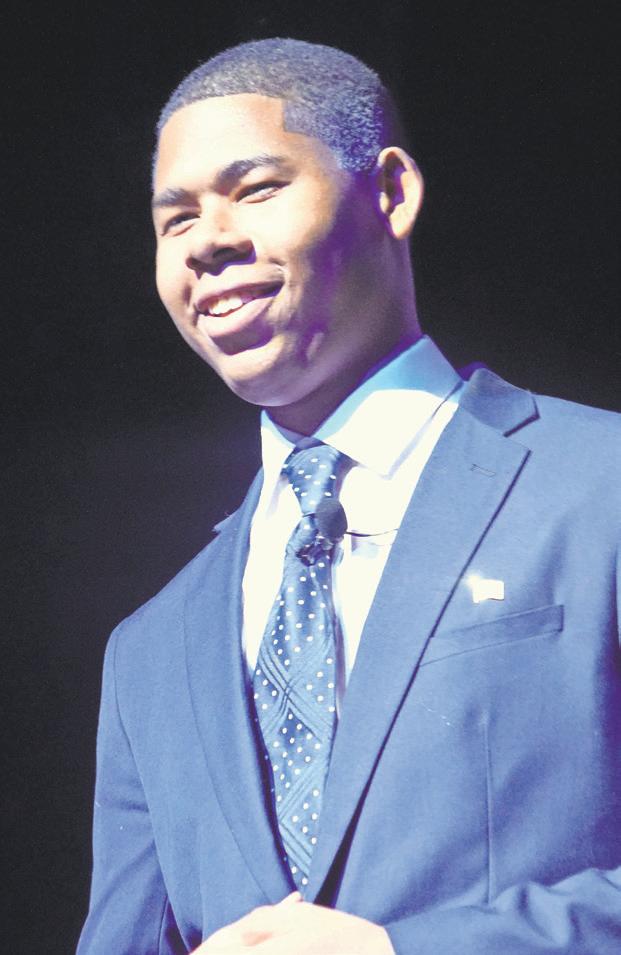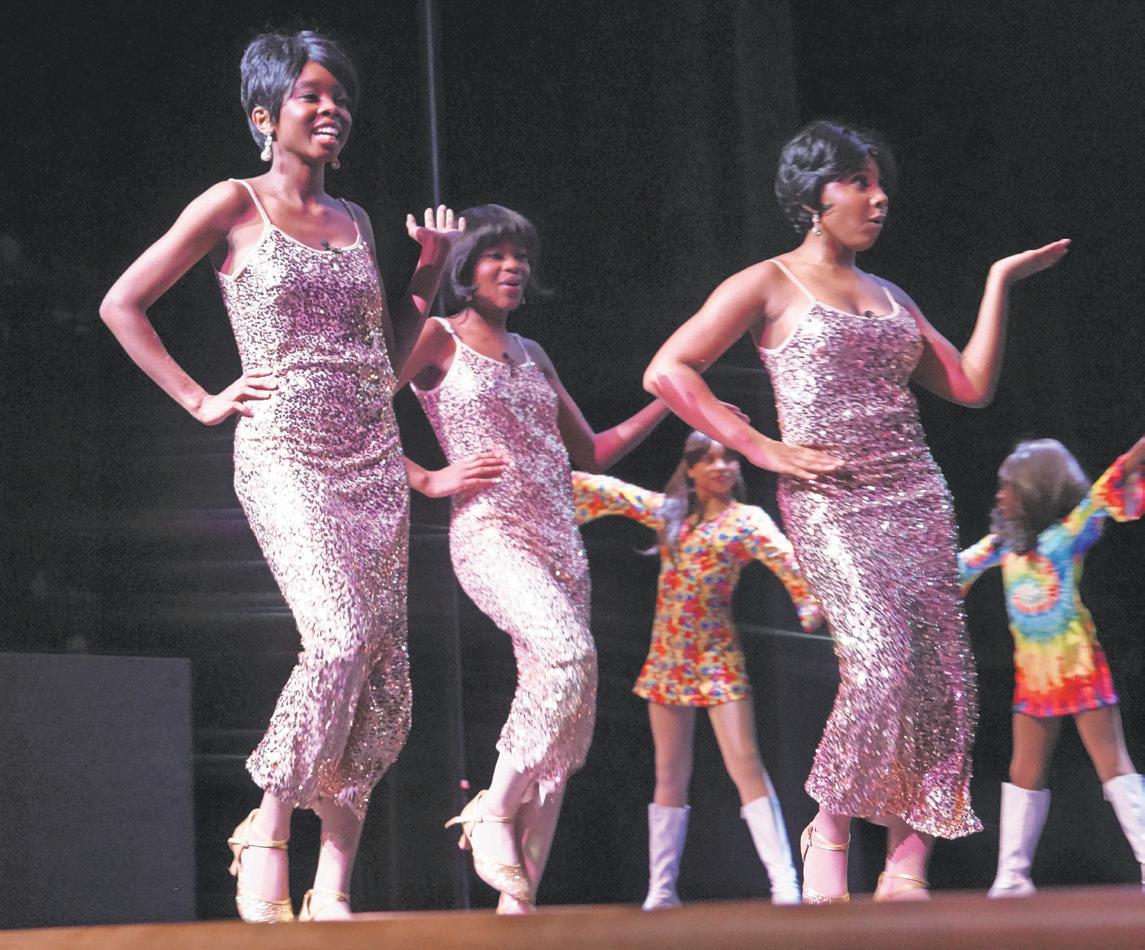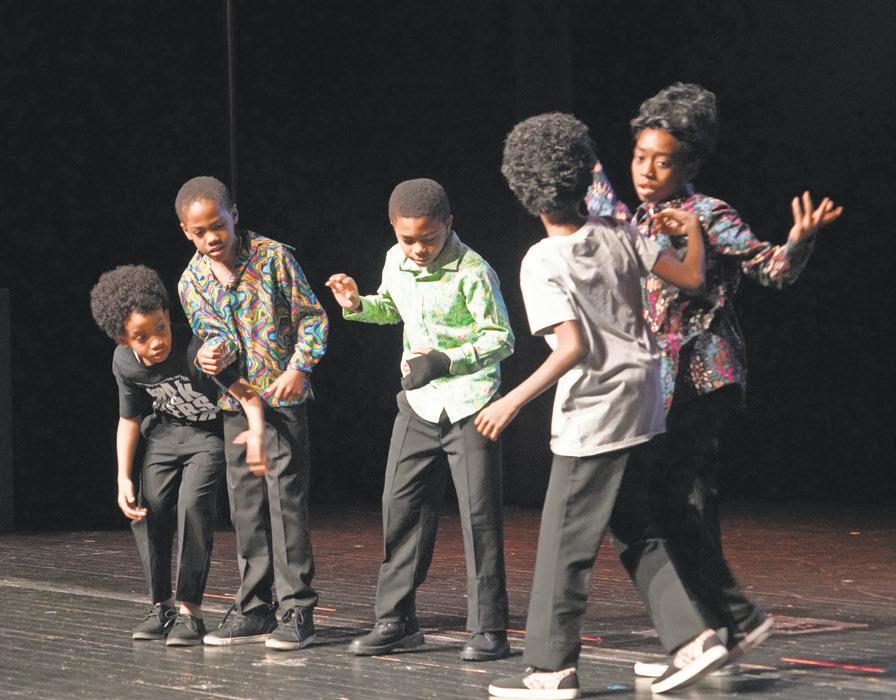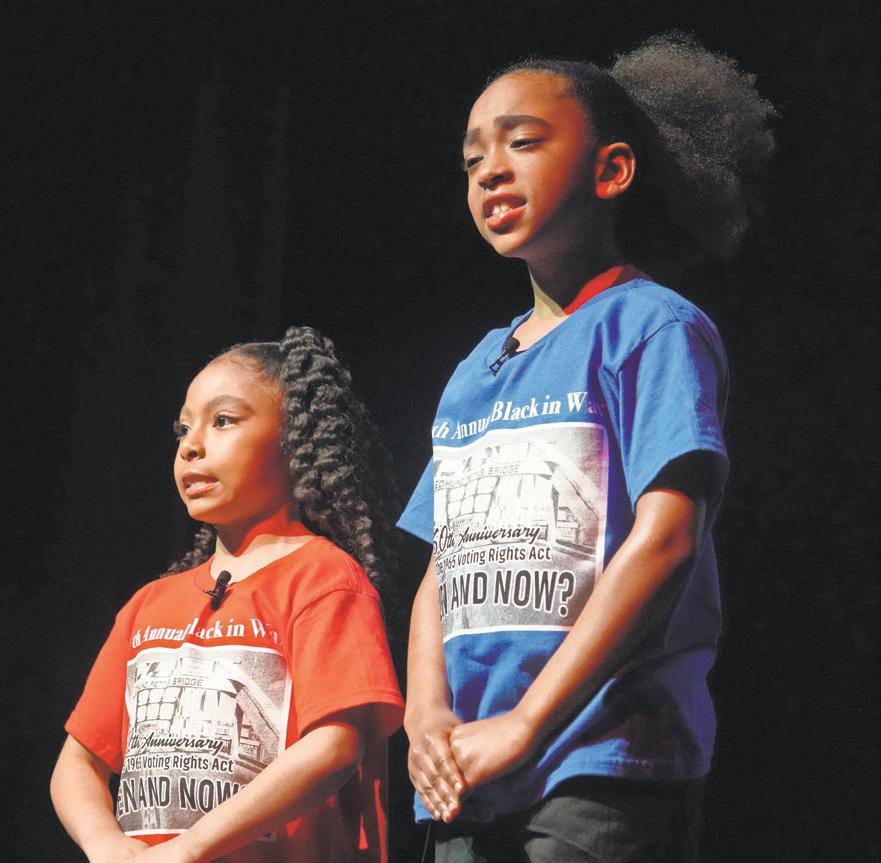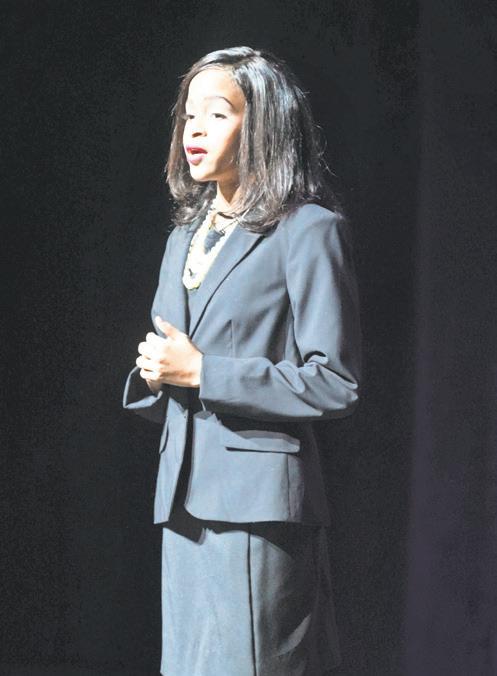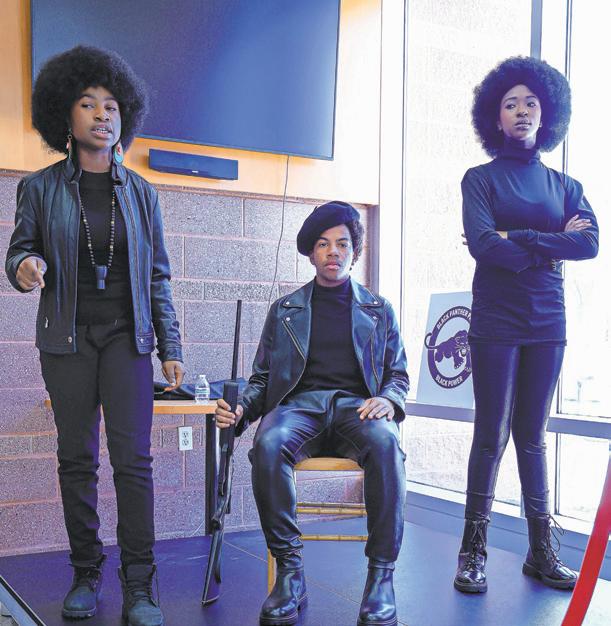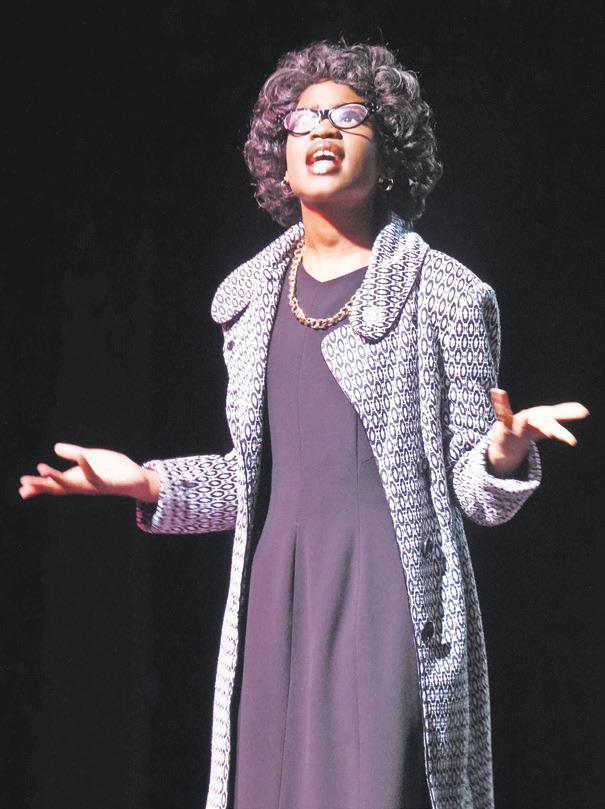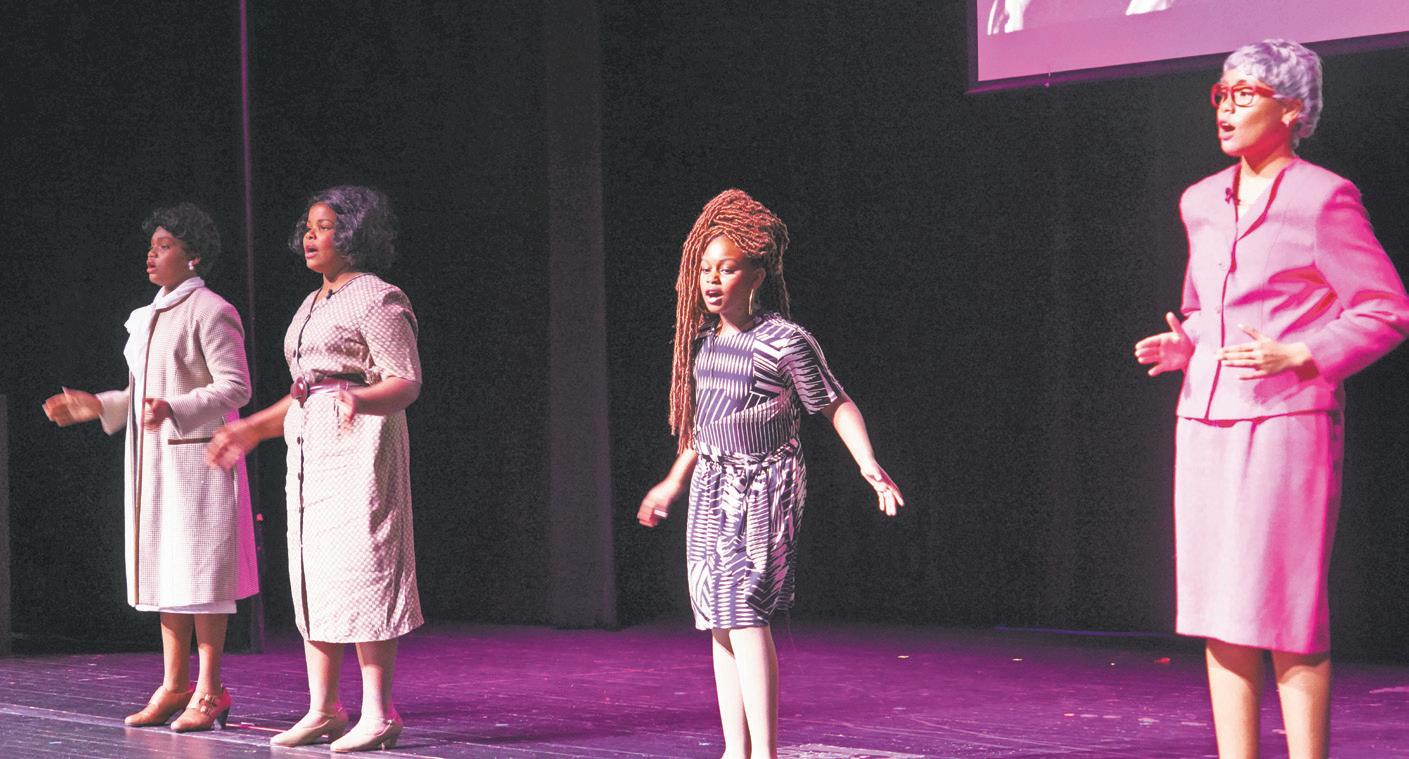
MARCH 15, 2025 - MARCH 21, 2025


The
and



MARCH 15, 2025 - MARCH 21, 2025


The
and

By Maria Sherman
A public memorial service bursting with music, including planned performances by Stevie Wonder and a surprise one by Lauryn Hill and Wyclef Jean of the Fugees, celebrated the life and legacy of the Grammy-winning singer and pianist Roberta Flack.
Flack, whose intimate vocal and musical style made her one of the top recording artists of the 1970s and an influential performer long after, died on Feb. 24 at age 88.
She’s best-known for her transformative covers of “The First Time Ever I Saw Your Face” and “Killing Me Softly With His Song.” Both
were expertly handled by Hill at the ceremony held on the afternoon of March 10 at New York’s Abyssinian Baptist Church in Harlem.
Wonder followed Hill’s performance and the Rev. Al Sharpton gave the eulogy.
Flack “put a soundtrack to Black dignity,” Sharpton said.
As many said in their tributes, Flack’s musical genius stemmed from her ability to seamlessly move between soul, jazz, gospel and beyond.
Her “Celebration of Life” memorial was livestreamed at www. RobertaFlack.com and on YouTube.
Here are some highlights:
For the memory of a singing legend, a historic location
Flack’s memorial was open to
“Her existence was a form of resistance.”
the public at the Abyssinian Baptist Church, a historic Harlem institution. Founded in 1808, it is one of the oldest Black Baptist churches in the United States.
The church was decorated for the ceremony with stunning white and yellow bouquets. Seats filled quickly. At center, a screen showed a young Flack at the piano and played highlights of her career. Later, it would broadcast music industry legends paying tribute to Flack,
including Clive Davis, Dionne Warwick, India.Arie and Alicia Keys.
It was a fitting location for such a celebration: Flack grew up with church gospel and her mother played organ at the Lomax African Methodist Episcopal Church in Arlington, Va. As a teen, she began accompanying the church choir on piano.
The ceremony detoured from a program handed out to attendees. It
By Stacy M. Brown
Target Corporation’s stock plummeted by approximately $27.27 per share by the end of February, erasing about $12.4 billion in market value.
The drop came on Feb. 28, the designated economic blackout day, and coincided with mounting backlash over the retailer’s decision to abandon its diversity, equity and inclusion (DEI) commitments.
President and CEO Dr. Benjamin F. Chavis Jr. “If corporations believe they can roll back diversity commitments without consequence, they are mistaken.”
Reverend Jamal Bryant, pastor of New Birth Missionary Baptist Church in Georgia, has led calls for a “40-Day Target Fast,” urging Black consumers to withhold their spending at the retailer. “Black people spend $12 million a day at Target,” Bryant said. “If we withhold our dollars, we can make a statement that cannot be ignored.”
“Black consumers helped build Target into a retail giant, and now they are making their voices heard.”

The National Newspaper Publishers Association (NNPA) has taken action through its Public Education and Selective Buying Campaign.
“Black consumers helped build Target into a retail giant, and now they are making their voices heard,” said NNPA
The NAACP also issued a Black Consumer Advisory in response to Target’s DEI rollback, warning Black consumers about corporate retreat from diversity initiatives. The
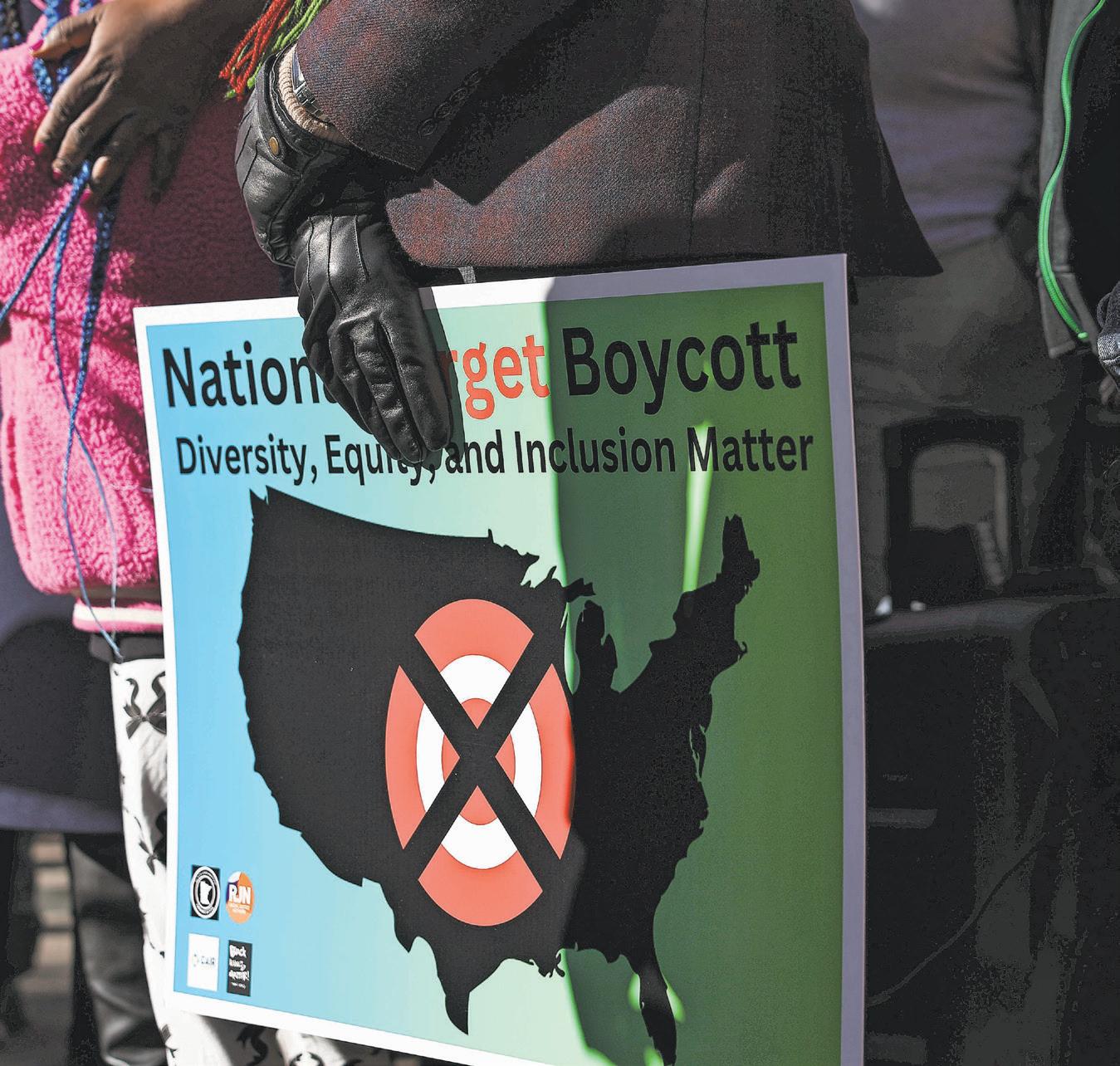

tioned itself as a national leader in education equity and school funding. However, new data shows that Black K-12 students in the Golden State are so far from reaching
and
The Ed Trust-West’s Black Minds Matter report released last week also found that only 17 percent of Black students in California have teachers who look like them compared to 87 percent of White students who have White teachers.
Given the slow pace of change, according to the report, generations of Black students will pass through a state education system that continues to fail them.
Dr. Christopher Nellum, executive director of EdTrust-West, the organization behind the report, said the findings weren’t surprising, but that doesn’t make them any less infuriating.
“How are we still doing this?” Nellum says. “How are these still the numbers we’re seeing? And why is no one else seemingly as upset about this as we are?”
What’s holding Black students back?
The BMM 2025 report highlights alarming academic disparities for Black students in California’s K-12 public school system, one of the largest in the nation. According to its findings, Black students won’t reach
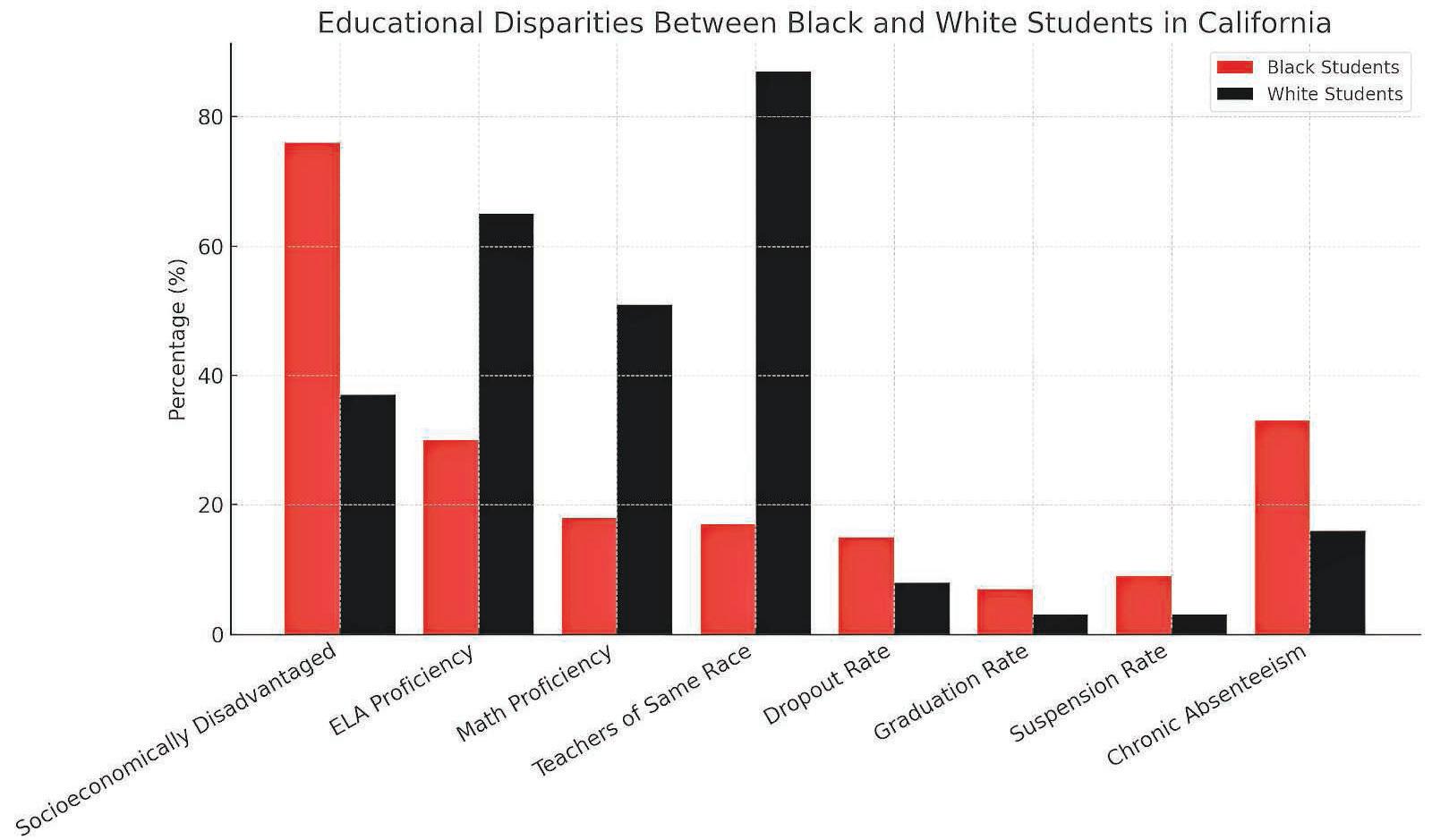
reading proficiency until 2070 and math proficiency until 2089 due to a range of issues, including poverty and other persistent disparities.
The data portrays a separate, unequal school system with a range of problems. 76 percent of Black K-12 students in California are socioeconomically disadvantaged; just 3 in 10 met English language arts standards, and only 18 percent are proficient in math.
In addition, Black students have a 15 percent dropout rate compared to 8 percent for White students and a 7 percent graduation rate compared to 3 percent for White students, according to the report.
Moreover, Black students in the state are still three times as likely to be suspended as White students — just like a decade ago — and chronic absenteeism increased for them in
the 2023-2024 academic year from 21 percent to 33 percent compared to 16 percent for White students.
The key takeaway is that these disparities are not a reflection of Black students’ abilities but of systemic failures in California’s schools.
With the sixth-largest Black population in the United States, California’s education system is a microcosm of how public education is failing one of its most vulnerable student groups, despite having some of the strongest state-level equity policies in the country such as the 2011 Local Control Funding Formula which reformed the state’s school system to allocate extra resources to high-needs students, and the 2023 Mathematics Framework that helps reduce tracking and increase math equity for low

proficiency math students.
That raises a critical question: If California, a state with resources and a progressive agenda, is still seeing such slow progress, what does that mean for Black students in conservative, less wealthy states?
“If folks—no matter where they are in this country—are interested in supporting Black students and Black communities, California should be on their mind,” Nellum says.
California also plays a crucial role in the nation’s economic future. Its $3.9 trillion economy, the largest of any state and 5th largest in the world, significantly impacts the U.S. as a whole. Nellum says if the state fails to bridge the divide between Black and White students, it could affect everyone.
“If we don’t figure out how to close these gaps, sure, California might continue to be an economic powerhouse,” he says. “But we can’t continue to be a powerhouse and allow such gaps to remain. That’s not just a California problem—that’s a problem for all the states that rely on us.”
Dismantling the DOE will surely worsen these projections
Despite the state’s wealth, Black students disproportionately attend Title I and Title III schools, which rely






“If folks—no matter where they are in this country— are interested in supporting Black students and Black communities, California should be on their mind.”
heavily on federal funding. Without those resources, the achievement gaps identified in the report could stretch well beyond the already dire projections of 2070 and 2089.
Recent proposals to dismantle the Department of Education could worsen these projections. If that happens, Nellum says, Black students could fall further behind.
“The Department of Education’s role is to provide oversight, accountability and protect civil rights,” Nellum says. “There’s no part of dismantling the agency that will make any of this better. It will only make it worse — and Black students will bear the brunt of it.”
The call to action: What needs to change?
One of the report’s most urgent policy recommendations is to create a state Commission on Black Education Transformation, a dedicated body with the power to transform education on behalf of Black students. In addition to allocating resources to Black student achievement, the commission would hold districts accountable for Black student progress (or lack thereof) and prioritize Black students in education funding and policy decisions.











By Jack Brook
Two more arrests have been made in connection with the death of a 20-year-old Southern University student who was repeatedly punched during an off-campus fraternity hazing ritual, Baton Rouge police announced March 11.
Kyle Thurman, 25, and Isaiah Smith, 28, have been arrested and face charges of felony criminal hazing for their role in the death of Caleb Wilson, a mechanical engineering junior at the school who died Feb. 27.
On March 6, police arrested Caleb McCray, 23, who faces charges of criminal hazing and manslaughter. He allegedly punched Wilson four times before the pledge collapsed unresponsive and appeared to suffer a seizure, police say.
Smith was seen on surveillance video removing Wilson from his vehicle and bringing him to a hospital, according to a police arrest warrant affidavit reviewed by The Associated Press.
The group that brought Wilson to the hospital initially told medical staff that Wilson collapsed while playing basketball at a park and left the hospital before police arrived, Baton Rouge Police Department Chief Thomas Morse Jr.
told reporters last week. Wilson died as a “direct result” of the hazing, Morse Jr. said.
Smith held the title “Dean of Pledges” and was in charge of the ritual during the hazing, the affidavit states. He turned himself in on March 11, police say.
Smith’s lawyer, Franz Borghardt, said it is important to note that Smith is not accused of making physical contact with Wilson and that no one was aware of any underlying medical conditions he may have had.
“This was a freak accident; we’re not talking about force-feeding alcohol,” Borghardt said. “To be sure, everyone in that fraternity cares about Caleb. Our hearts go out to the Wilson family.”
Both Smith and Thurman participated in punching some of the nine pledges, but they are not described as hitting Wilson, according to police arrest warrant affidavits.
Smith’s father, Todd Smith, runs a flooring company where the hazing incident occurred, Borghardt said.
Todd Smith did not immediately respond to a request for comment.
Thurman could not be reached for comment, and police and court officials were


not able to provide information for his legal representation.
McCray’s lawyer, Phillip Robinson, said he is innocent and urged the public to withhold judgment.
In Louisiana, hazing can be a felony under the Max Gruver Act, which passed in 2018 and was named after a Louisiana State University student who died of alcohol poisoning after hazing at the Phi Delta Theta fraternity house.
Under the act, if a person being hazed dies or is seriously injured, violators face up to a $10,000 fine and five years in prison. Organizations, representatives and officers of an organization, and educational institutions can also face penalties.
The fraternity Wilson was pledging, Omega Psi Phi, could face civil penalties under the act. A fraternity spokesperson said it is cooperating with authorities.
The fraternity’s campus chapter has been ordered to cease activities and Greek life organizations have been barred from taking on new members for the remainder of the academic year, Southern University President Dennis Shields told reporters last week.

Hundreds of people turned out in early March for a vigil in honor of Wilson, a passionate trumpet player in the university’s
Continued from A1
featured a powerful quote from Flack on the back that Arie would include in her message.
“Remember: Always walk in the light,” Flack once said. “If you feel like you’re not walking in it, go find it. Love the Light.”
Celebrating a life in music — through music
“Her existence was a form of resistance,” Hill said in her speech, holding back tears.
Hill’s appearance was unexpected but fitting. In the 1990s, her hip-hop trio the Fugees did a masterful take on Flack’s cover “Killing Me Softly With His Song.” It won the group a Grammy, two decades after Flack took home the record of the year trophy for the song.
“I adore Ms. Roberta Flack. Roberta Flack is legend,” Hill said before launching into song. Hill performed with the Fugees’ Wyclef Jean — and Wonder joining in on harmonica.
A legend who needed no introduction but certainly received one with roaring applause, Wonder followed up.
“The great thing about not having the ability to see with your eyes is the great opportunity of being able to even better
see with your heart. And so I knew how beautiful Roberta was, not seeing her visually but being able to see and feel her heart,” Wonder said. He performed his song “If It’s Magic,” accompanied only by a harpist. Then he sat at the piano to sing with the harpist a song he wrote for Flack, “I Can See the Sun in Late December.”
“I love you, Roberta. And I will see you,” Wonder said at the end.
Earlier, songwriter and performer Valerie Simpson of Ashford and Simpson played piano and sang an extended take of “Ain’t Nothing Like the Real Thing” interspersed with recollections of her friend.
- Kevin E. Peck Dana Peck
Receptionist - Wanda PearsonDirector of Operations
Andrè DraperDirector of Finance Bonnie Deanes -
Lenora Howze - lhowze@afro.com
Diane W. HockerEditorial Alexis TaylorAma Brown-Parson - Savannah Wood-
Andrè Draper -
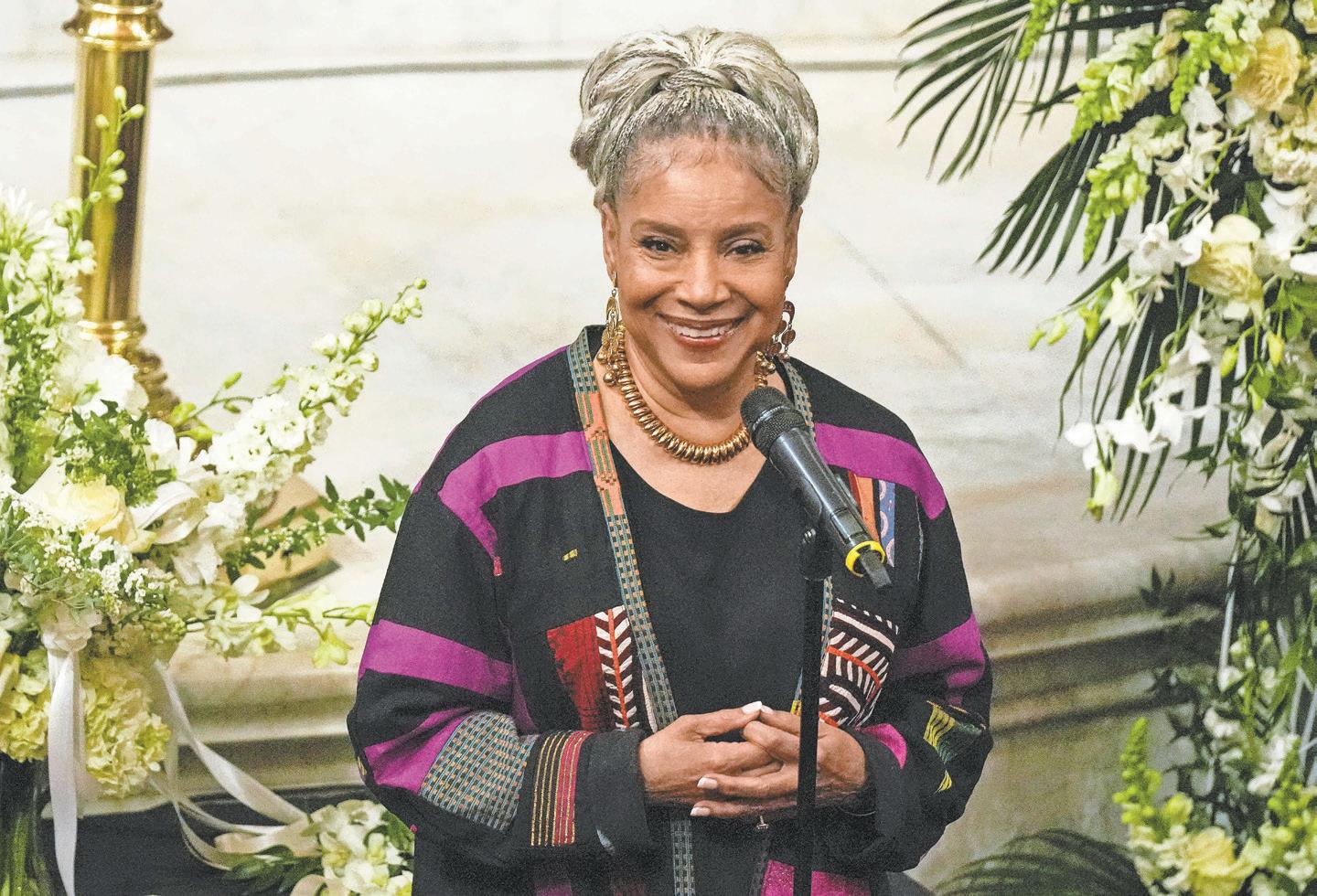
“But that voice. Aw, she’d just grab you in the heart. And then when she touched the keys, she knew how to dig down deep,” Simpson said.
Simpson recalled being tapped to perform in “Chicago” for her 2018 Broadway debut and how she told Flack she wasn’t sure if she could act.
“She looked at me and said, ‘Girl, where’s the script? Bring it over here. We’re going to work on this thing. We’re going to do this,’” remembered Simpson. New Orleans singer and piano player Davell Crawford performed a soulful version of Flack’s song “Just When I Needed You” to celebratory shouts and cheers.
A legendary artist remembered
“Many of us are here today because she has touched not just our hearts but she also touched our souls,” said the Rev. Dr. Kevin R. Johnson, the senior church pastor who led the service.
Frances L. Murphy II)
Director of Operations - Andrè Draper -
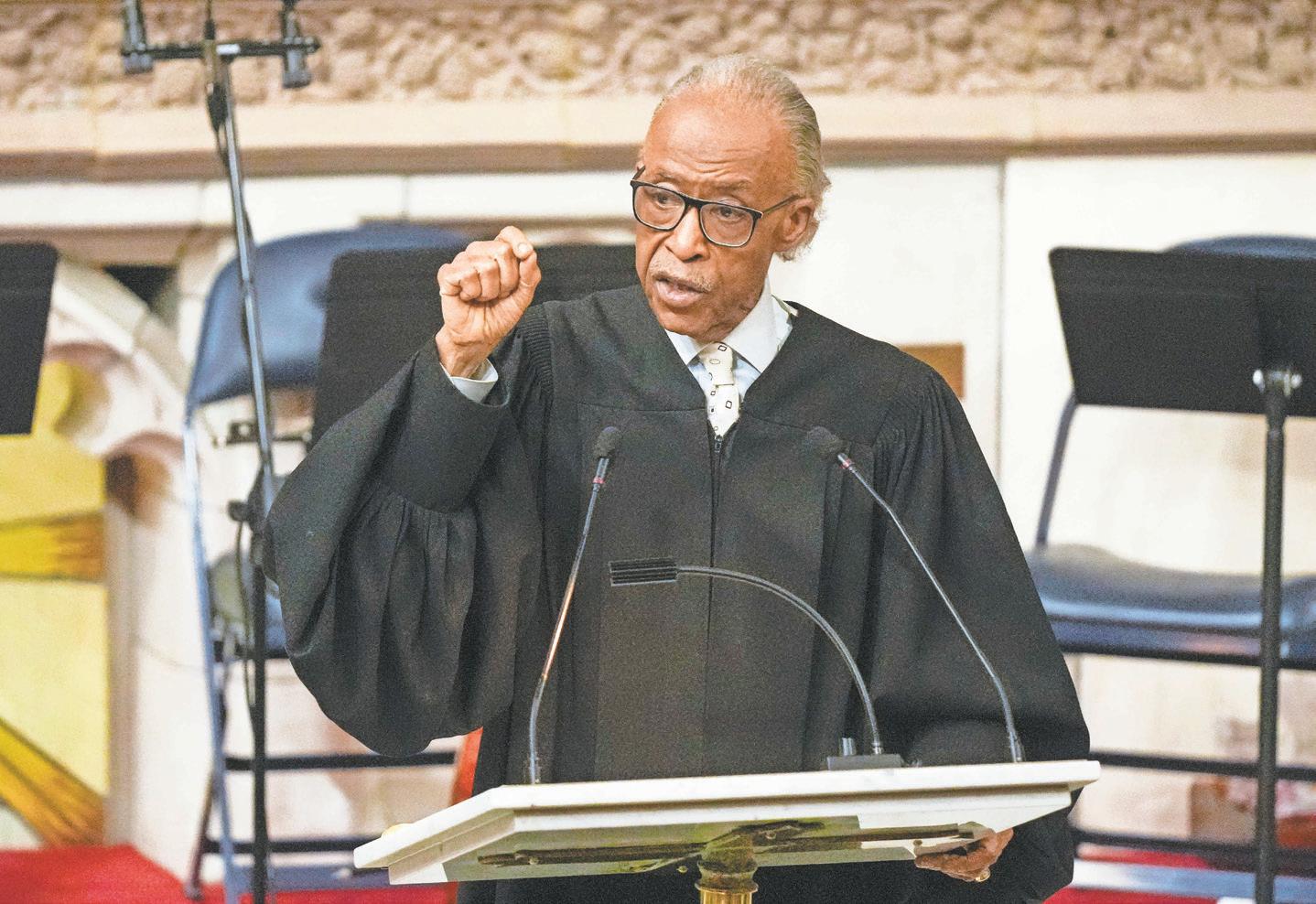
Choir performances including a rousing rendition of “Amazing Grace” came in between a video recollection of Flack’s life and scripture readings.
“The reason we’re here is because she made a difference,” Sharpton said. And we should all ask ourselves when it comes our time, will they pack a church for you? If Roberta were here tonight, she would tell you, ‘Don’t just praise me, emulate me.’”
Actor Phylicia Rashad remembered first seeing Flack perform when she was a student at Howard University — to an audience that grew rapt by her quiet, steady voice.
Flack lived comfortably with her genius and without having to proclaim it to people, Rashad said.
“She wore that like a loose fitting garment and lived her life attending to that which she cared for most: music, love and humanity,” Rashad said.
This article was originally published by The Associated Press.

By Candrese Jones
Cervical cancer is one of the most treatable cancers if detected early. No one should die from this disease, however, an estimated 4,360 women in the United States died from cervical cancer in 2024. In Mississippi, Black women are almost one and a half times more likely to die of the disease than White women, with disparities increasing at alarming rates as they age.
As one of nine community-based researchers with the Southern Rural Black Women’s Initiative for Economic and Social Justice (SRBWI) and Human Rights Watch, I conducted 21 interviews with Black women from Bolivar County about their experiences accessing reproductive healthcare, as well as their knowledge about the cervical cancer disease and prevention. One interview I continue to revisit in my mind was with Renee N. (pseudonym), who recounted her tragic tale about her difficulties paying for critically reproductive healthcare services.
Renee went without it for five years. As a working woman, she made too much for Medicaid and the health care expenses were too high. As one may imagine she faced difficult choices between paying for medical care or covering essential household expenses. As a result during her time without insurance, she missed some of the signs of complications with her reproductive health. This later led to a complete hysterectomy. Despite now having insurance, she was unable to afford follow-up appointments and co-pays. Her insurance only covered certain treatments and tests –and the high cost of medicine and the high deductible were also problematic.
Renee’s story reflects the widespread struggles of many women, and is

them. At times, she had to choose between buying groceries or paying her light bill just to cover her healthcare costs.
Even when programs do exist—like the hypertension program Renee participated in—there’s a significant lack of awareness about other programs that could assist women, particularly when it comes to reproductive health.
Renee had no idea of any resources that could have helped her manage her medical expenses, leaving her to forgo critical follow-up healthcare she needed.
Expanding access and awareness
included in “No Excuse: Inadequate Cervical Cancer Prevention and Care for Black Women in the United States Mississippi Delta,” a report published by SRBWI and Human Rights Watch. Even women like Renee –who have insurance– find themselves burdened by copayments, high premiums and uncovered medical expenses. Many don’t qualify for Medicaid or Medicare, and struggle to afford the care they need. The issue isn’t just a lack of coverage—it’s the cost of maintaining care as in the case of Renee, and the gap in available resources for working women.
The invisible burden
The interviewee highlighted a stark reality: the hardship of paying copayments every time she visited the doctor. These small but significant payments add up, creating financial strain for many. She described how she avoided necessary treatments and check-ups simply because she couldn’t afford
It’s time to address the healthcare gap that working women like this interviewee face. There’s no excuse. These working women aren’t poor enough to qualify for government programs like Medicaid, but they aren’t wealthy enough to comfortably afford the cost of critically needed medical services. We need to increase awareness of and access to programs such as the Mississippi Breast and Cervical Cancer program that provides financial assistance for reproductive health care and other medical services.
Too many women are unaware of the resources that could help them—resources that could potentially save lives by preventing medical conditions from going untreated. Every county and state should have accessible, well-publicized information on programs that can provide financial relief for reproductive healthcare costs.
Working women are falling through the cracks of our healthcare system. We must act now to close this gap, ensuring they don’t have to choose between their health and their basic needs.
This article was originally published by American Forum.

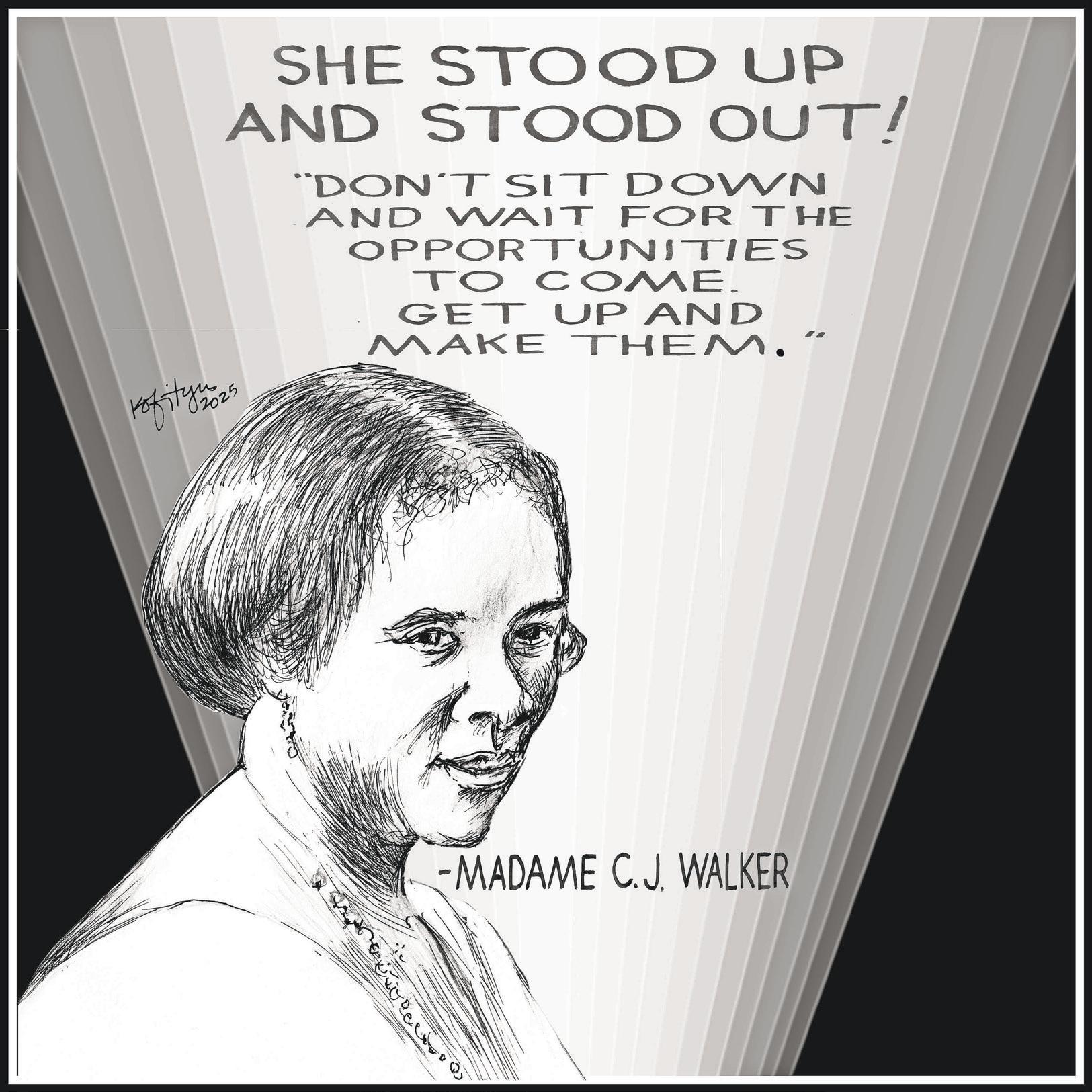
Our legacy of standing tall in the face of oppression
There comes a moment, somewhere between yesterday and today, when it feels like tomorrow may never come. I used to complain to my Nana about all the things that I had to do tomorrow, and she would shake her head, put down whatever book she was reading, and remind me that today’s burdens, if handled properly, could be yesterday’s victories and not tomorrow’s plans. She also believed that tomorrow was a day that never came. Tomorrow, she said, was a North Star, a place to hide things and hold dreams. It was not a place where you planned to pay bills, or lose weight, or grieve properly. She said that waiting for tomorrow was like waiting for a special moment to use the good dishes or take the plastic off the living room couch. I liked to watch my Nana when she talked like this, mixing laughter with wisdom, her eyes twinkling and squinting at the dust trails of her life and the pathways for my future. I think I was already a mother, two times over, on the day I showed up at the house, and she was sitting at the kitchen table, tapping her fingers and humming along to her beat. She cocked her head when I walked through the door and started talking even before I sat down. Her eyes, I noticed, were no longer brown, like summer almonds, but milky blue, like a cold winter morning. And, when I did not say anything, she asked me to take her hand.
I knew it was coming. My great-grandmother, her mother, went blind from cataracts and glaucoma, and her eyes turned blue. She told me years before that she would fight it with everything she had but that, in the end, she was only going to see me in her dreams. My great-grandmother lost her sight long before she met me, and I grew up with her touching my face or grabbing my arm. She said she fought it for as long as possible because fighting and resisting are what we do; it’s who we are. I come from a long line of
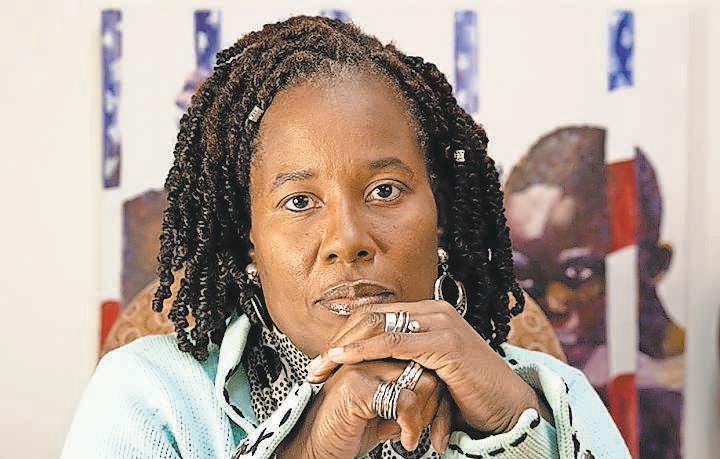
Study of African American Life and History (ASALH). This week, she discusses the long line of resistors in her family history and the importance of speaking the truth even in the face of adversity.
fighters and resisters. See, in 1906, when my great-grandmother was six months old, the Ku Klux Klan knocked on their front door and asked her mother to ask her husband to step to the door. In a matter of seconds, he stepped to the front door, and they shot and killed him. I was told that my great-great-grandfather, Moses, was well known in the Olar, S.C., community, as he was trying to convince Black people to actively exercise their constitutional right to vote. He organized meetings at the local church and in his living room.
According to Ancestry. com, he was born in 1878 and grew up in and around Gaston, S.C. He married my greatgreat-grandmother, Bannah Dickinson and they had four children: Moses Jr., Louise, Leola, and my great-grandmother Lumisher. Little else is known about him other than the fabric pieces that I tried to pull together before my Nana (Lumisher’s oldest daughter) passed away.
I was told that he was part Cherokee and then I was told he was actually from Jamaica. My mother said he was probably very tall because my great-great grandmother Bannah was over 6 feet tall and would never have married a shorter man. I know she never remarried and that she died of congestive heart failure
at the age of 74. They said he was a fighter, a resister. One great-uncle said that he was told that Moses never believed what White people told him if he could not verify for himself. Although the family could not agree on most of the facts of his life, they all agreed on one thing: He was lynched by the local KKK because he was a force who refused to be silenced or ignored.
We are at a moment right now where all we have left is our ability to fight. We are witnessing the collapse of democracy and the creation of a fascist regime that is trying to break us, trying to silence us, and trying to erase us. Similar to glaucoma and cataracts, Trump 2.0 is a disease seeking to take away sight and convince us to believe what they are telling us and not what we see. It is during these moments that we must go back to what we know to be true. We know who we are. We know whose we are. And we know what it feels like to be under attack and what it feels like to fight. It is during these moments when we have to go back to the truth of who we are, cutting through the noise and pushing through the haze to stand tall on truth. That is what we teach because that is who we are. We are fighters. We are resisters. And we are cleareyed survivors.
By Jennifer Porter Gore Word In Black
The braided hairstyles many Black women and children wear are popular for their beauty and ease of maintenance.
But a consumer watchdog’s laboratory analysis has found that the synthetic hair frequently used for box braids and faux locs may carry a price beyond the stylist’s fee.
A study from Consumer Reports found that each of the 10 most popular synthetic hair braiding products sold in the $2.7 billion market contained chemicals linked to cancer. Several of the test samples also tested positive for lead as well as harmful substances like acetone, which is used to strip paint.
Black women are the primary users of these products, and people of African descent are the largest group of consumers of hair wigs and extensions. The brands tested included Magic Fingers, Sassy Collection, Sensationnel, Shake-NGo, and many others.
Commonly called “protective styles,” braids are an attractive style option for Black women because they can be worn for weeks at a time and
“The smell wouldn’t go away even after washing my hair multiple times.”
the wearer can have a durable hairstyle that doesn’t need styling every day. One of the brands, Kaneka, became so popular that its Kanekalon product was name-checked in a song that went viral on TikTok.
All of the samples had chemicals linked to cancer.
Two years ago, Chrystal Thomas, a student at the Albert Einstein College of Medicine and the City University of New York, began to wonder if the Kanekalon product, and synthetic hair in general, was actually good for her hair.
“I couldn’t sleep well, my throat felt irritated, and I had trouble focusing on any type of work I was doing because of the smell,” she told Consumer Reports. “The smell wouldn’t go away even after washing

Nappy.co/ Courtney Young
A Consumer Reports study has found that popular synthetic hair used in Black women’s braided hairstyles contains harmful chemicals, including lead and carcinogens. The findings raise health concerns for the millions who rely on these products for beauty and convenience.
my hair multiple times.”
Although women typically wear braids for around six weeks, Thomas removed her braids after roughly 10 days. A public health student, she decided to research possible health issues tied to braiding hair. Her findings were published in a commentary article
about the risks of carcinogenic materials in hair products for Black women.
“What is unique about braid extensions is the length of exposure users have to them,” Thomas says. “Synthetic braids are typically worn for about four to six weeks. Black women and other individuals who use synthetic hair are, therefore, exposed to those ingredients consistently during that time.”
In a statement, the Kaneka Co., said it “only manufactures the Kanekalon fibers that are used in various hair products, such as synthetic hair braids and wigs, and does not produce any of the final products.”
The company told Consumer Reports that other companies then take the Kanekalon fibers and process, dye, customize and distribute the actual final products that consumers then purchase.
James E. Rogers, head of CR’s product safety testing, led a team that tested the synthetic hair using samples from 10 of the most popular products. The team tested the samples for heavy metals and volatile organic compounds, with disturbing results.
This article was originally published by Word in Black.
advisory urges them to support businesses that remain committed to investing in Black communities.
Target is also facing legal battles. Shareholders have filed lawsuits challenging the company’s DEI policies, arguing that the commitments hurt financial performance. Meanwhile, conservative groups have sued over Target’s diversity efforts, claiming they discriminated against White employees and other groups.
“Consumers have the power to demand change, and Target is learning that lesson the hard way,” Chavis said. This article was originally published by NNPA Newswire.
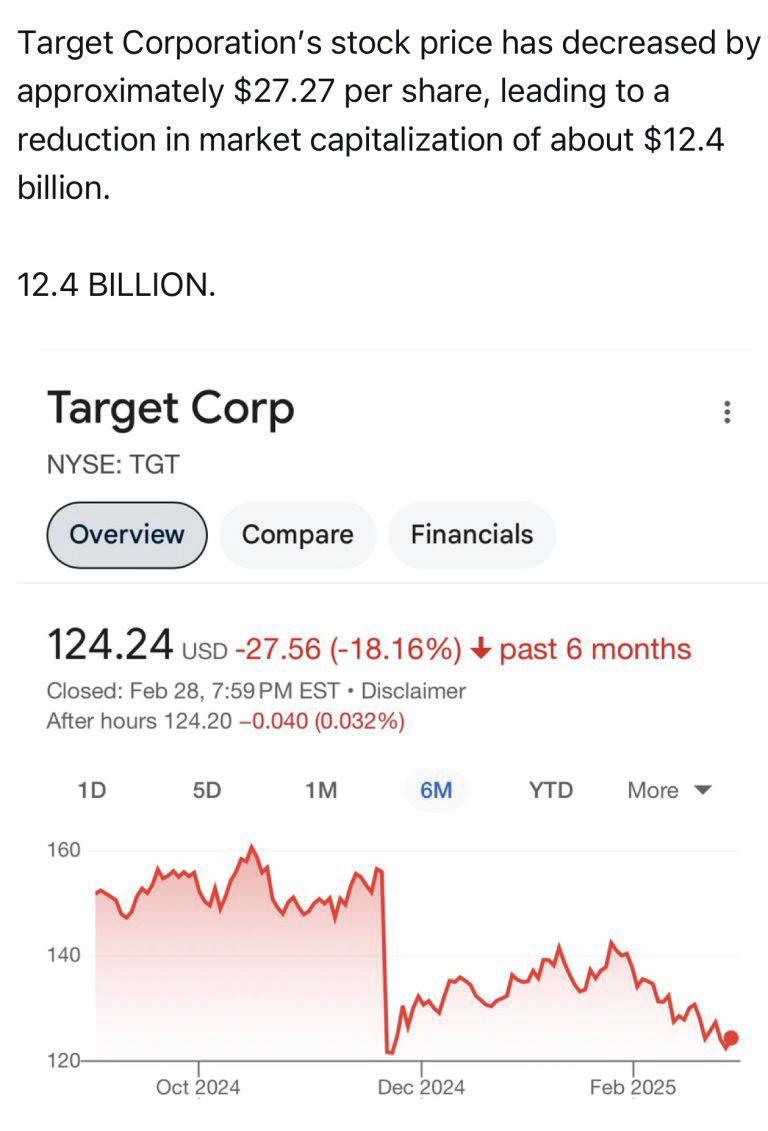
By Jessica Kutz
In 2006, Kareena Lynde was working in Shasta Lake, Calif. on a hotshot crew—a group of highly trained wildland firefighters— when she started to notice a sharp pain in her abdomen. At first she chalked up the discomfort, plus symptoms like bloating and nausea, to the nature of her work, with its long, arduous hours and unhealthy backcountry meals.
After one of her shifts, she headed to the nearest town of Reddington to visit an urgent care. She was referred to an OB-GYN, and an ultrasound detected a large tumor on one of her ovaries. At the age of 22, she was diagnosed with an aggressive form of ovarian cancer.
Lynde had insurance but it had a sky-high deductible—she would have to pay $10,000 out of pocket before insurance would pick up expenses, with added costs for things like hospital stays and specialty testing. She raised $45,000 through a GoFundMe to cover costs. After three years of treatment that included surgery, chemotherapy and radiation, she went into remission. About a year later, she received yet another diagnosis: cervical cancer. She was able to beat that, too. She’s been cancer-free since 2009.
compensation program while granting coverage for testicular and prostate cancer. Ever since, advocates have been working with Godfrey’s office to ensure that women firefighters received similar protections. Prior to the policy in 2022, firefighters had to provide evidence that their cancer was caused by their occupation, a task that was hard to do and was judged on an individual basis. Now if their cancer is on the presumptive cancer list, they won’t need that burden of proof.
For Lynde, who has been in the field for 22 years, it was not only a win for women firefighters and their health, but also, “the acknowledgement that we are a part of the workforce as well,” she said. “Our cancers that affect us should be acknowledged, just like any cancers that only affect men.”
“Our cancers that affect us should be acknowledged, just like any cancers that only affect men.”
Firefighters like Lynde are at a heightened risk for some reproductive cancers, including breast, ovarian and uterine cancers, due to exposure to hazardous chemicals and erratic, stressful shift work. Now, thanks to a new policy, the Federal Employees Compensation Program is including these cancers as part of its presumptive cancer coverage. Now, any federal firefighter, like those working for agencies like the U.S. Forest Service, who is diagnosed with these cancers and has worked for at least five years in the field will qualify for compensation to cover treatment. This change came nearly three years after cancers typically impacting men got coverage. The Office of Worker Compensation Programs, or OWCP, has also set up a special claims unit to process requests specific to firefighters.
“This policy change acknowledges the unique occupational hazards faced by women firefighters and ensures they receive the care and support they deserve,” Christopher Godfrey, director of the OWCP, said in a statement. “This advancement represents a transformative shift toward equity and recognition of women’s contributions and the protections they deserve given the risks they take and the exposures they face.”
A 2022 policy left cancers that disproportionately impact women out of the
To enact this policy change, there needed to be enough research backing up the connection between these cancers and firefighting. But because there are so few women in firefighting, the impacts of the work on their bodies has been difficult to study.
About 12 percent of wildland firefighters and 5 percent of all career firefighters are women, according to the U.S. Fire Administration.
“I think why there’s been a delay in recognizing some of these reproductive cancers in women is that there is an extremely low rate of women in the fire service, so they’ve been very underrepresented in terms of research,” said Sara Jahnke, senior scientist and director at the Center for Fire, Rescue and EMS Health Research.
In recent years, that has begun to change,

After
of
with reproductive cancers are finally eligible for federal compensation, closing a critical gap in coverage.
with an “explosion of research on health and women firefighters,” Jahnke said. The Federal Emergency Management Agency and the National Institute for Health have both funded research on women firefighters in recent years.
“I think that’s probably underlying why some of these advances are being made,” she said.
So far, studies point to a lot of different factors that could increase the risk of cancer for firefighters regardless of gender, including the chemicals they are exposed to in smoke, their sleep cycles, and the impact of shift work. This article was originally published by Stacker Media.


By
— especially young, non-col
lege-educated men, Blacks and Latinos — swung towards the Republicans. Democrats know they must change course if they don’t want to become a permanent minority party that appeals only to those with college or higher degrees.
Of course, the debate about what went wrong, and how to right it, has taken a turn — yes, many people did not vote for Kamala Harris because she was a woman and Black. However, we must dig further, and there are individuals who believe the Democrats have abandoned working and middle class families.
I strongly believe Democrats must tone down their very heavy focus on issues that do not affect their base – abortion, illegal Immigration, transgender issues, sanctuary cities, etc. That isn’t to say that these are not important issues. Shouldn’t women have control over their own bodies? Is it really an issue of who a person loves or if illegal immigrants who are criminals should not be removed from the country?
Instead, Democrats must return to their economic roots and focus on helping the working and middle classes thrive in America. But these roots must grow in a different economic climate from that of the 20th century. While raising
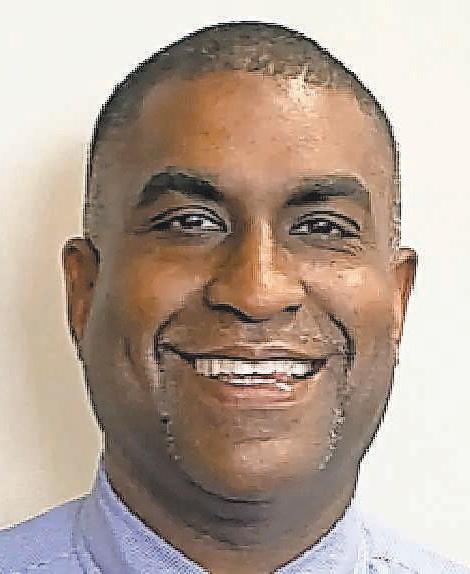
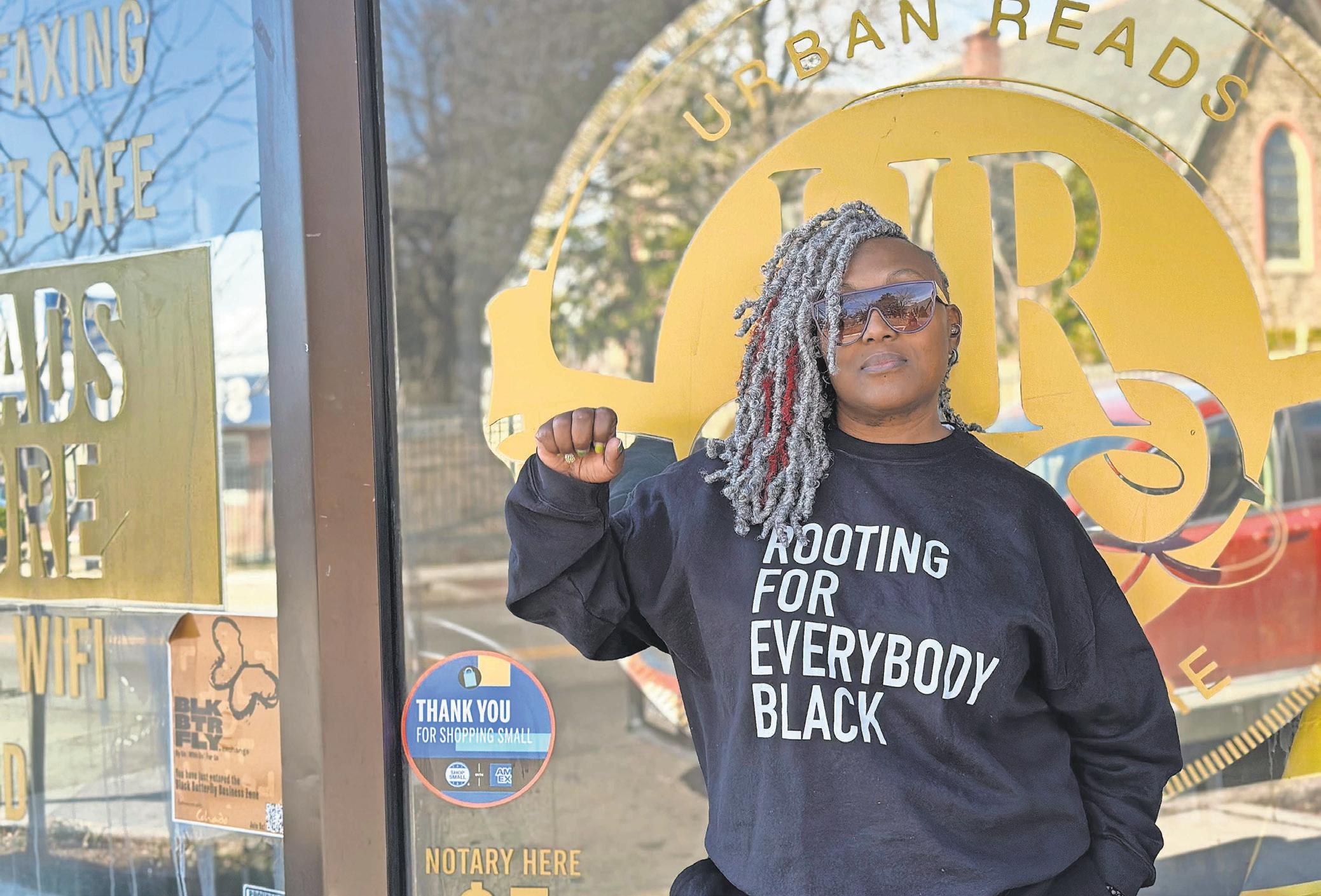
minimum wages and promoting unions remain worthwhile, helping people thrive in a primarily post-industrial economy requires a somewhat different approach. Anti-trade and anti-immigrant actions (separate from having a secure border) are also self-defeating and will only raise costs and inflation down the road — exactly what hurt the Democrats so much in the past election.
Instead, Democrats should focus on the following three factors that distress voters, especially the young and nonWhite. First, they must help working and middle class Black Americans have a higher quality of life. Second, they must help reduce the cost of living in certain key sectors, starting with
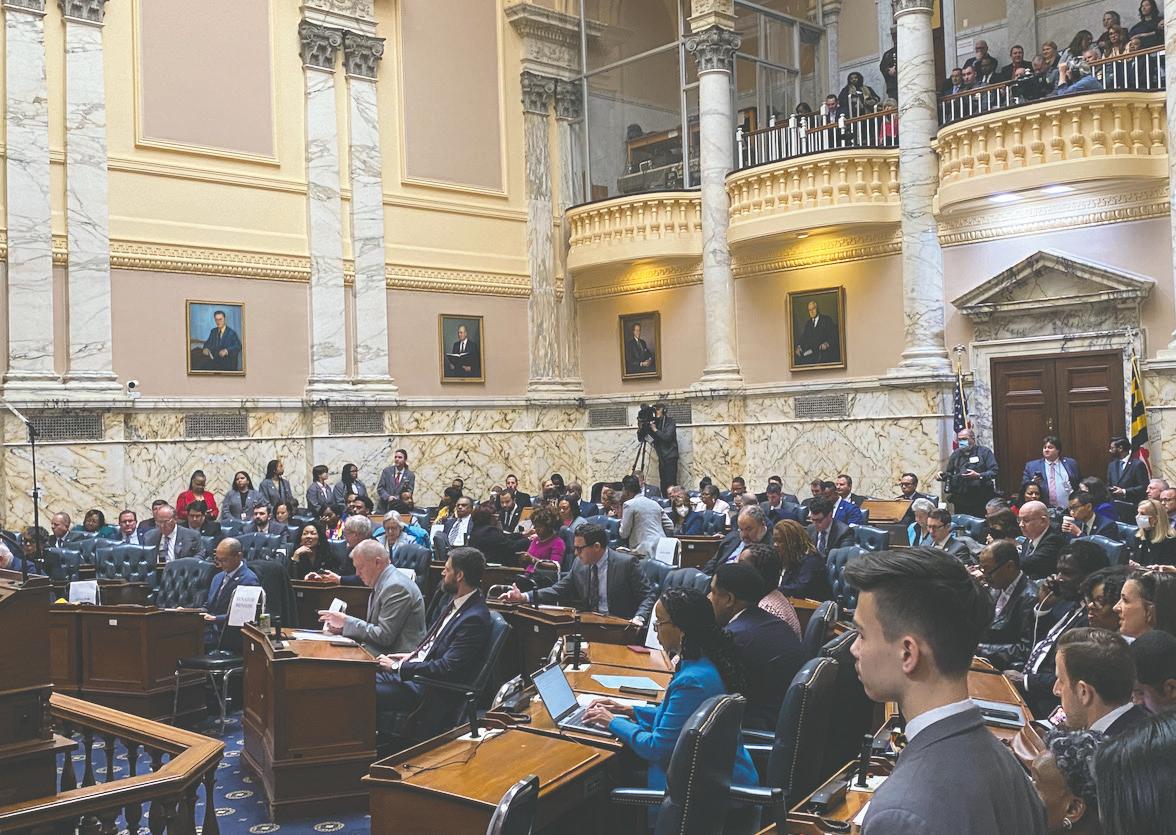
By Andrea Stevens AFRO Staff Writer astevens@afro.com
Urban Reads, a bookstore owned by Tia Hamilton, has received a slew of racist messages from people across the country.
The company is located in the 3000 block of Greenmount Avenue in Baltimore. Over the past three weeks, the bookstore and its employees have been harassed and threatened, prompting calls for Maryland officials to intervene on behalf of the business.
“All of this is because of my magazine, “The State vs. Us Magazine,” which highlights high-profile cases and wrongful convictions,” Hamilton said, in an interview with the AFRO. “I talk about the corruption that goes on in prison, [with the] police and government.”
Hamilton, a Baltimore native, believes she has been subjected to harassment because her work sheds light on issues some would prefer to remain hidden. While she is accustomed to threats, she said the situation has escalated, with people driving by her store and sending disturbing racial images via email.
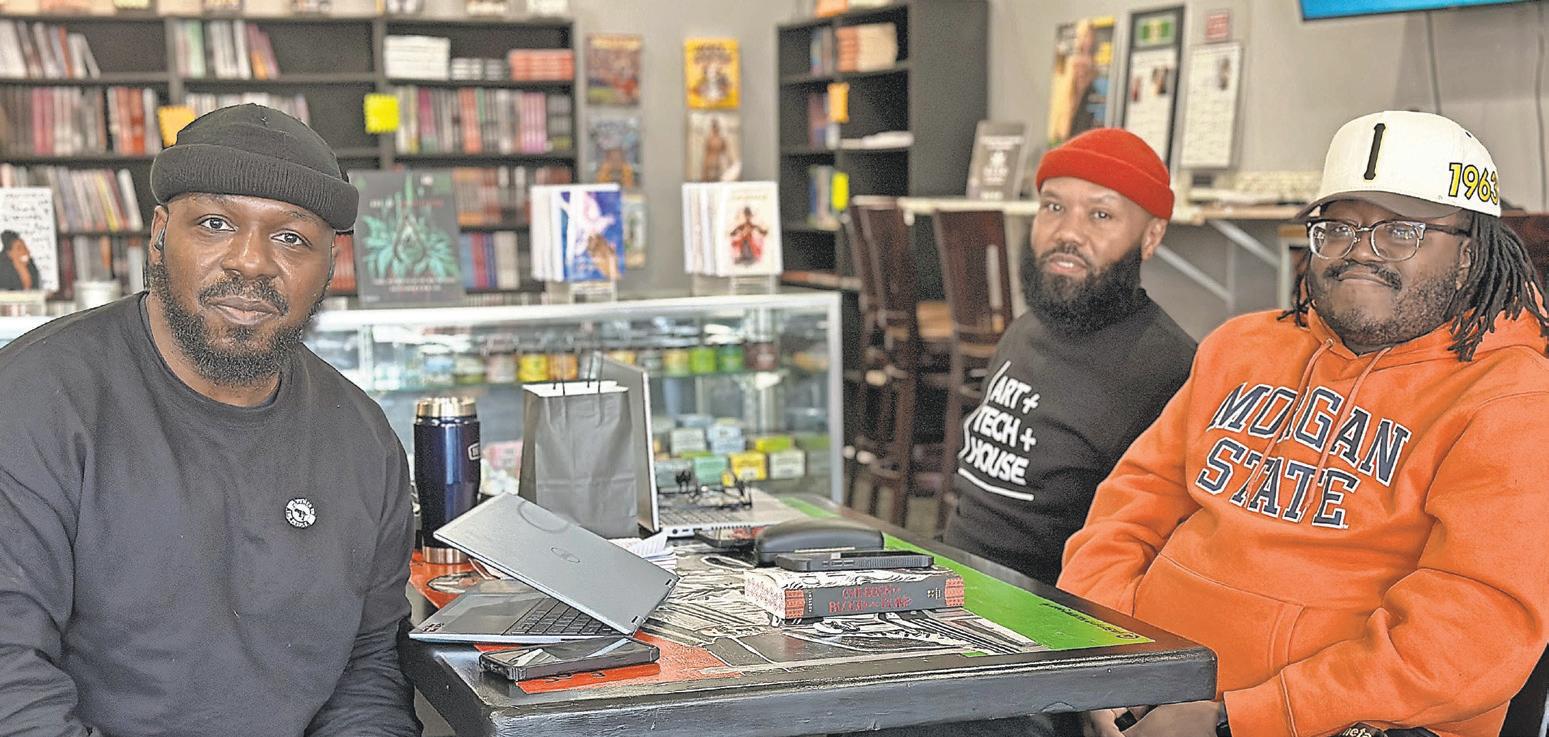
community members have stepped in to support and protect the store and its employees.
Will Hug, a college professor, visited the bookstore in a show of solidarity as an ally to the Black community.
“I’ve had a lifetime of witnessing people stand up as allies,” Hug said. “I’ve been educated as an anti-racist, and one thing White folks have to do is listen to people of color–particularly African Americans– when they are telling us what they need.”
“It’s unfortunate that in 2025 we still have to deal with issues as blatant as hate crimes, or the attempt of hate crimes”
By Tashi McQueen AFRO Staff Writer
State Del. Jazz Lewis (D-Md.-24) and State Sen. Nick Charles (D-Md.-25) are pushing legislation to help federal workers laid off by the 47th president’s initiative to cut “wasteful” federal spending.
The bill has been cross-filed in both chambers. Lewis is leading the House version,
while Charles sponsored the Senate version. Cross-filing can speed up the legislative process. “Senate Bill (SB) 683 builds upon the federal government employee assistance loan fund by extending support beyond government shutdowns to include financial hardships caused by federal agency closures or mass layoffs by making these adjustments,” said Charles on March 6. “What this bill
“I helped bring home nine lives, and it’s archived in the Schomburg Center for Research in Black Culture in Harlem, New York, and at Johns Hopkins University,” she said. “They just don’t like what I do, and I always get threats, but it’s never been to this magnitude. It’s an influx— DMs (direct messages), calls to me and the store, even emails to my assistant. It’s intimidation—somebody sent me a picture of a noose.”
The harassment is coming from across the country, including from Little Rock, Ark., Florida; and Louisiana.
As the threats have escalated,
“I’ve gotten to know Ms. Hamilton over the years. I understand how important her work is and what she does. And I can understand how it would be a lightning rod for white supremacists and racists,” Hug said.
Armando Evangelista, a criminal justice professor and a member of the Psi Omega Chapter of Iota Phi Theta Fraternity, called the situation troubling.
“It’s unfortunate that in 2025 we still have to deal with issues as blatant as hate crimes, or the attempt of hate crimes,” Evangelista said. He attributed the current racial climate to politics, saying it emboldens people to act in hateful ways.
Evangelista was joined
by two other brothers of his fraternity who also came out to show their support. Andre Fulton, a master’s-level social worker and graduate of Morgan State University, emphasized the role of Black men in protecting their communities.
“I feel that it’s important for us, as men of our community and culture, to support each other– especially Black women, when they are feeling unsafe in their own homes and businesses,”
Fulton said. Despite the threats, Hamilton remains resolute in her mission. The outpouring of support from the community has reinforced the importance of her work, proving that she is not alone in the fight for justice. As local advocates and allies stand by her side, Urban Reads continues to be more than just a bookstore— it is a beacon of resistance, education and empowerment in the face of adversity.

By Megan Sayles AFRO Staff Writer msayles@afro.com
Established in 2004, the Maryland Small Business Reserve (SBR) Program was created to supply small business owners with opportunities to compete as prime contractors in the state’s procurement ecosystem.
At its inception, 10 percent of state spending was set aside for small businesses. Today, 20 percent of all open government procurement opportunities are designated for small businesses.
Having the ability to compete as a prime on a contract gives small businesses greater financial control and security, according to Lisa Mitchell Sennaar, compliance manager for the SBR.
“It’s beneficial to most businesses to be a prime contractor because you enter directly into the relationship with the agency buyer. There’s no delay in getting the money,” said Mitchell Sennaar. “You get to really understand the contract terms, and you are the direct beneficiary of those payments.”
The key to certification for SBR is the eMaryland Marketplace Advantage (eMMA) platform, according to Mitchell Sennaar. On eMMA, businesses can self-certify for the program.
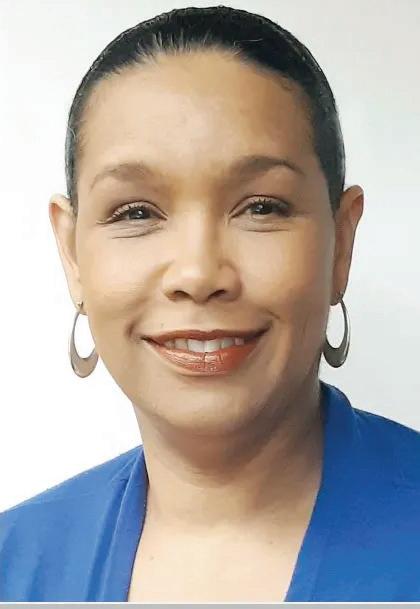
Though the SBR is a gender- and race-neutral program, businesses must meet certain size requirements to qualify. These standards are tailored to each industry, and businesses only need to satisfy one of the conditions.
For example, a wholesaler can have no more than 50 employees, or it can have averaged less than $4 million in sales over the past three years. A retailer can have no more than 25 employees, or it can have averaged less than $3 million in sales over the past three years. A construction firm can have no more than 50 employees, or it can have averaged less than $7 million in sales over the past three years.
“eMMA is the state’s procurement portal. Any solicitations or procurement over $15,000 are advertised on it. All state agencies that participate advertise their
“State agencies buy just about everything and they pay their bills. If you’re the prime contractor, that’s just a nice way of diversifying your customer base.”
procurements on eMMA,” said Mitchell Sennaar. “The great thing about eMMA is that it is free to create a vendor profile.”
Taking advantage of procurement enables entrepreneurs to attract more business, according to Mitchell Sennaar. State agencies become customers to business owners. They have a constant need for a range of services, and they are reliable, according to the compliance manager.
“State agencies buy just about everything, and they pay their bills,” said Mitchell Sennaar. “If you’re the prime contractor, that’s just a nice way of diversifying your customer base. State government contracting is not for everyone, but if you’re willing to do the work of learning the rules and cultivating relationships, you’re more than likely going to be successful.”
Last fiscal year, the setaside for the SBR totaled more than $400 million. Mitchell Sennaar said this number will only grow in the future.
She encouraged entrepreneurs to make use of eMMA. The platform features a frequently asked questions
section and a quick reference guide that covers fundamentals, like vendor registration, navigating eMMA, searching solicitations and submitting bids.
As the Governor’s Office of Small, Minority and Women Business Affairs is responsible for the SBR program, the agency holds monthly webinars curated for entrepreneurs to familiarize themselves with contracting. The office also holds a quarterly “Meet the Buyers” workshop to introduce business owners to the state agencies that have solicitations.
“For Maryland businesses, the fact that you participate in this program and receive those dollars is a multiplier in terms of the benefit to your community and the larger Maryland community,” said Mitchell Sennaar. “You’re creating jobs, you’re generating revenue through local spending, you’re fostering innovation and you’re revitalizing our neighborhoods. All of this, [including] the diversity and resilience of our community, is directly tied to small businesses participation in the Maryland state economy.”
Continued from B1
ensures is that Maryland residents who have dedicated their careers to federal services are not left without financial support during unforeseen circumstances.”
The Senate Budget and Taxation Committee heard the bill on March 6. The House version of the bill was heard on Feb. 25. The House version is on the third reader.
The Protect Our Federal Workers Act, SB0683, would allow laid-off workers to apply for financial resources.
During a floor debate regarding the House version of the bill, State Del. Jason Buckel (R-Md.-1B) proposed an amendment to the bill. that would “remove the powers granted to the attorney general under this bill to bring lawsuits against the federal government on behalf of private individuals who lost their job.”
“The amendment very simply says save your $1.5 million and let these folks, particularly those that have a legitimate cause of action, let them go get legitimate lawyers,” said Buckel on March 5. “There are tons of them that will be happy to take this case.”
Lewis argued that the amendment would weaken
“What
Maryland’s ability to protect laid-off workers.
“This amendment says that Maryland’s going to fight with our arms behind our back,” said Lewis.
Buckel’s amendment was rejected by a 39-97 vote.
On March 4, U.S. Rep. Kweisi Mfume (D-Md.-7), ranking member of the Subcommittee on Government Operations, introduced a Resolution of Inquiry (ROI) in Congress. The resolution seeks to investigate mass layoffs under the TrumpMusk administration.
“Donald Trump and Elon Musk are destroying this country and unfortunately the Republican majority in Congress has been sitting by idly while they do it,” said Mfume in a statement. “Our constitutional duty is to provide oversight of the executive branch and this resolution of inquiry is part of that work.”
The ROI would require the administration to provide documents, communications and information about federal layoffs and its coordination with Elon Musk and the Department of General Efficiency. The committee has 14 legislative days to act on and report the resolution to the House. If not, the resolution becomes privileged on the House floor.
this bill ensures is that Maryland residents who have dedicated their careers to federal services are not left without financial support during unforeseen circumstances.”

By Tashi McQueen AFRO Staff Writer tmcqueen@afro.com
Maryland House Speaker Adrienne A. Jones (D-Md.-10) laid to rest her eldest son, Brandon, on March 7. The state lawmaker was supported by an audience composed mostly of Jones’ family, peers in the state legislature and other officials.
The service was filled with hymns, expressions of love, loss and support for Speaker Jones and her relatives as she funeralized her 44-year old son just days after his Feb. 27 death.
“Please know that everyone here supports you, is here for you,” said Lt. Gov. Aruna Miller (D) to Speaker Jones at the funeral. “Thank you for your leadership to the people of Maryland.”
Brandon Jones was born on March 26, 1981, the son of Adrienne A. Jones and the late Robert Lee Jones Jr. in Baltimore, Md., but he was raised mainly in Randallstown, Md. He attended Baltimore County public schools, graduating from Towson High School. He attended Baltimore County Community College, where he studied business. He went on to receive an associate of science degree in information technology-multimedia from ITT Technical Institute. He began working for the county at its 911 Call Center and later transitioned to the Department of Corrections.
Jones enjoyed gaming, watching movies and television shows featuring science fiction.
In addition to his mother, he leaves behind his brother, Daylan Jones; nephew, Jalen Jones; niece, Janelle Jones and many more relatives and friends. His father preceded him in death.


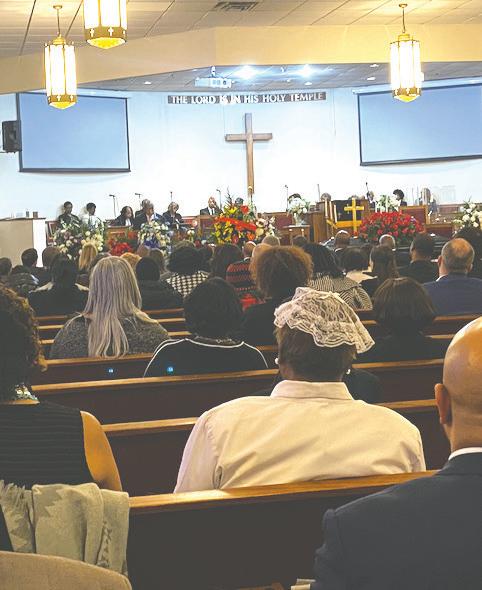
Continued from B1
housing. Third, they
At the current pace of societal change, it would take Black Americans 180 more years to achieve true equality in America, according to an assessment by one of the country’s premier Black civil rights organizations. That would mean Black Americans would achieve the same level of pay, police protection and home homeownership enjoyed by White people 339 years after the Civil War ended and 236 years after the assassination of the Rev. Martin LutherKing Jr. Democrats must focus on improving the quality of life for Black Americans, and that requires addressing health, education and economic factors. This includes reparations, improving access to resources, better healthcare, better academic outcomes, and addressing systemic racism.
thoughtful housing analysts have devised a number of policies and practices by which the federal government could assist and incentivize state and local jurisdictions to ease the regulations that now strangle residential construction and reduce housing supply. If Democrats trumpet these practices, their appeal to young people will grow.
Finally, there is no doubt that more support for child care would help more workers — especially young mothers — join the workforce; while providing more paid family leave would ease the strain on Gen-Xers and Millennials who must often care for both children and elderly parents. Of course, child care and paid leave cost more money, and we want to do so in a way that will not further grow our public debt. But, here too, creative approaches involving federal and state governments could generate more support for working families with politically acceptable financing mechanisms.
Lastly, the Democrats must stop any new taxes or fees that affect the working and middle class. These groups have no appetite for taxes or fees even for worthwhile causes.
“All of my siblings became an aunt or an uncle before I did,” said Williams.
“It wasn’t until Brandon was born did I become an uncle.”
Stephen Verch, Brandon Jones’ coworker at Baltimore County Department of Corrections, described him as punctual, and serious about his duties and work policies. Jones’ uncles also spoke at the funeral, recollecting their fond memories of him. His uncle, Barry F. Williams, spoke fondly of the fact that Jones was his first nephew.

“Outside of becoming a parent and grandparent, I thought that becoming an uncle was the best thing to be,” he added. “I learned from him as much as he learned from me.”
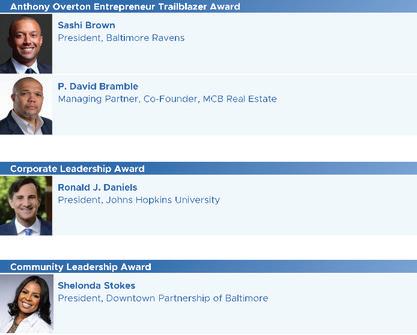



Jones’ other uncle Darrin Williams shared some blessings for his departed nephew.
“May heavens’s light shine upon you. We

Promoting more affordable housing, very simply, requires us to build more homes. Yet this is a hard goal for the federal government for two simple reasons: first, the barriers to more housing primarily lie in state and local regulations that stymie and complicate residential construction; second, these regulations benefit current homeowners, since restrictions on the supply of housing raise the value of the current housing stock.
At the same time,
Reducing its reliance on unpopular non-mainstream politics, while refocusing its rhetoric and actions on practical economic needs would give Democrats a platform with broad appeal to young people, the working and middle class while they fight to limit the damage being caused by the White House. They should start refocusing and rebranding as soon as possible.






By AFRO Staff
Ghanaians and members of the African Diaspora worldwide recently celebrated the African country’s 68th Day of Independence.
In Baltimore, the Teaching Artist Institute, which frequently hosts trips to Africa, offered an event at the Sankofa Children’s Museum, located in the 1300 block of Pimlico Road. The program featured African dancers,
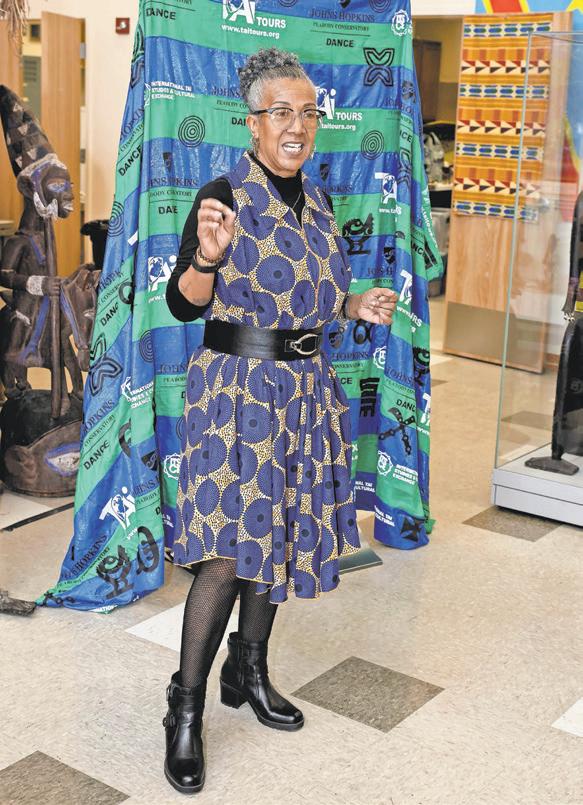
food and a community awards recognition program. Attendees were able to experience the wonders of Ghana, known for its color, energy and flavor.
Ghana gained its independence from the United Kingdom on March 6, 1957 and has a capital city named Accra. The country is bordered by Burkina Faso to the north, the Ivory Coast, or Cote d’Ivoire, to the west, and Togo to the east. The country has a population of roughly 35 million people.
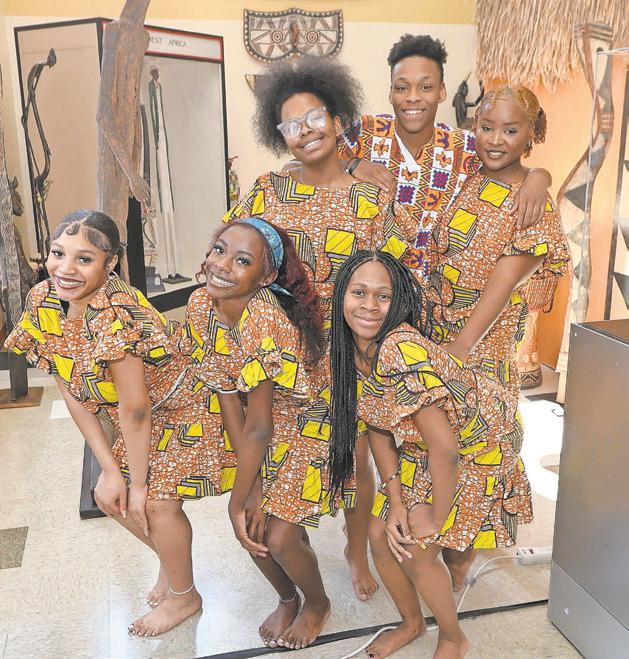
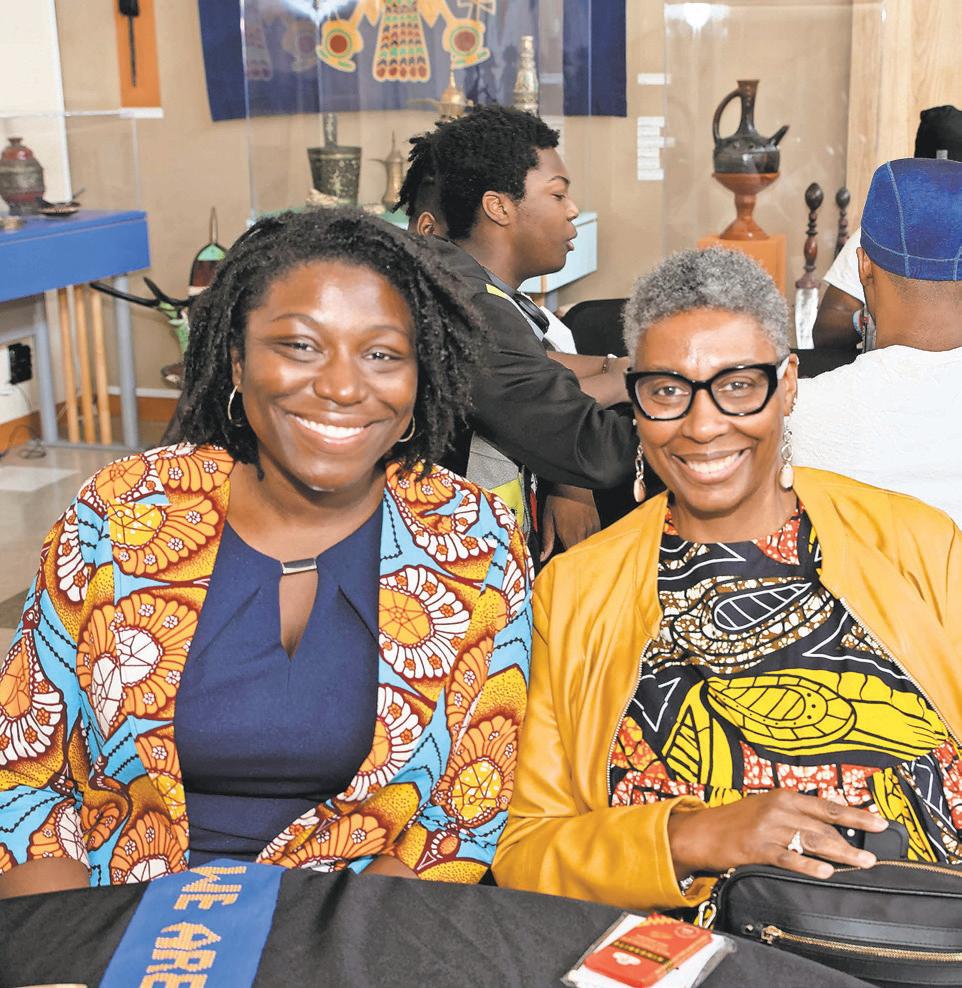
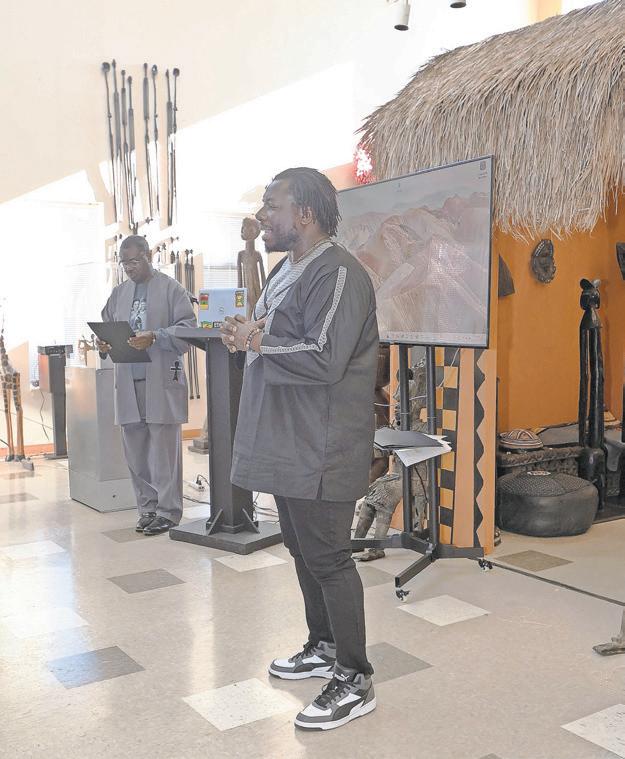

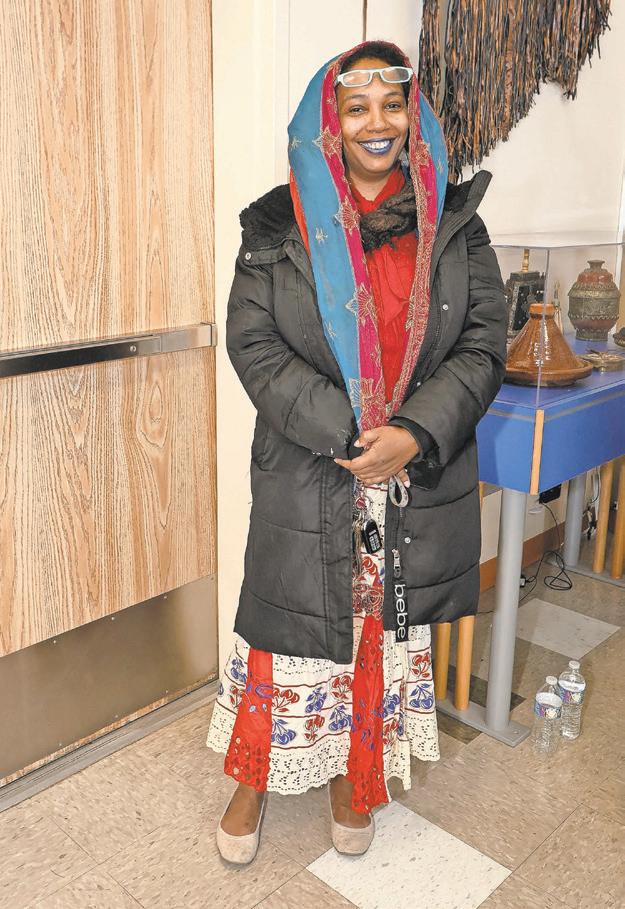
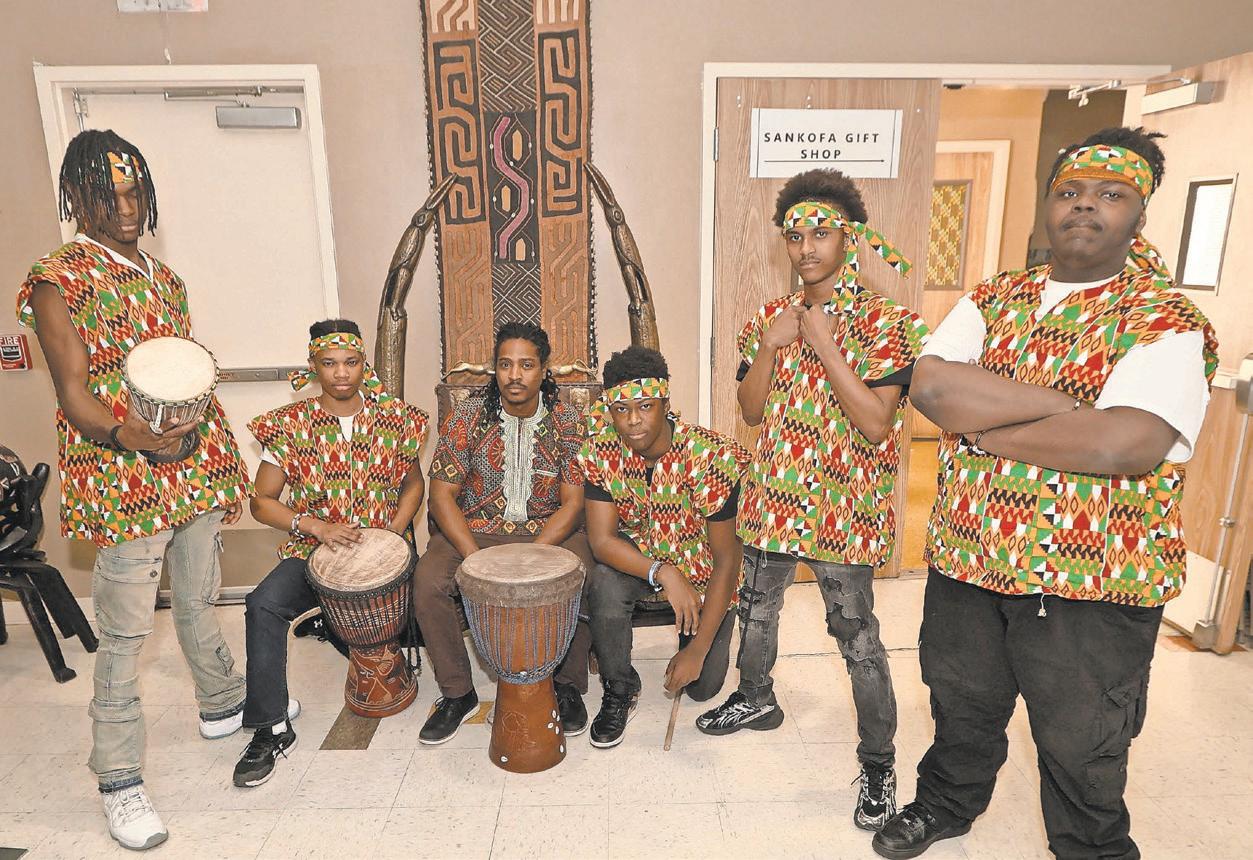
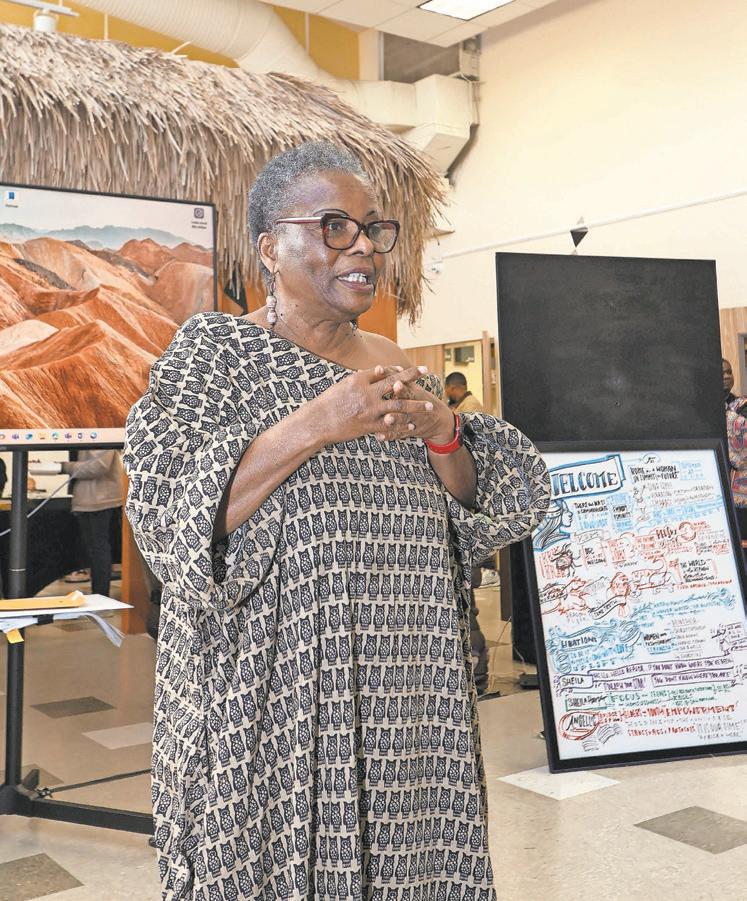
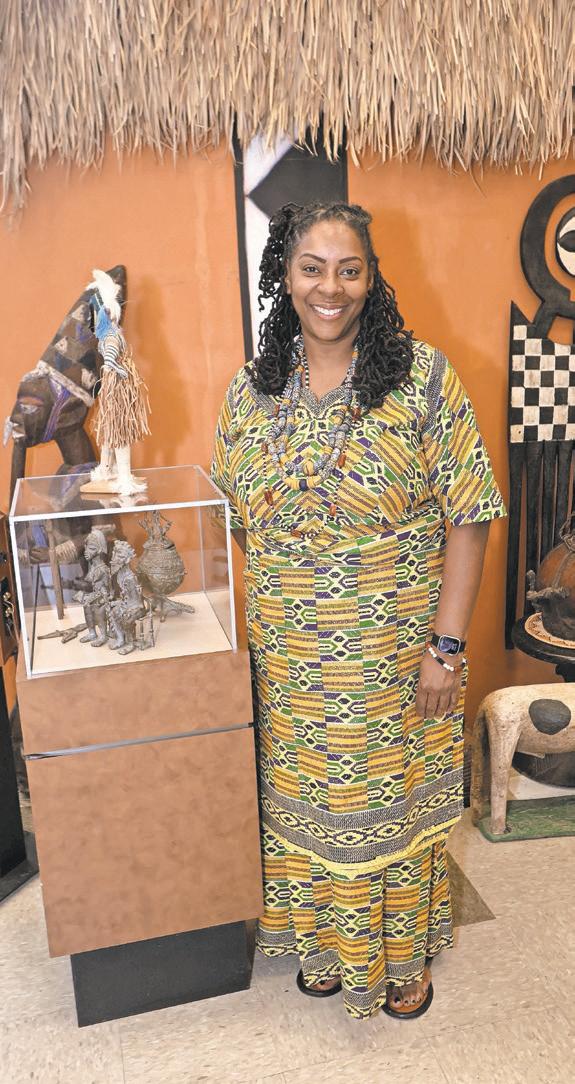
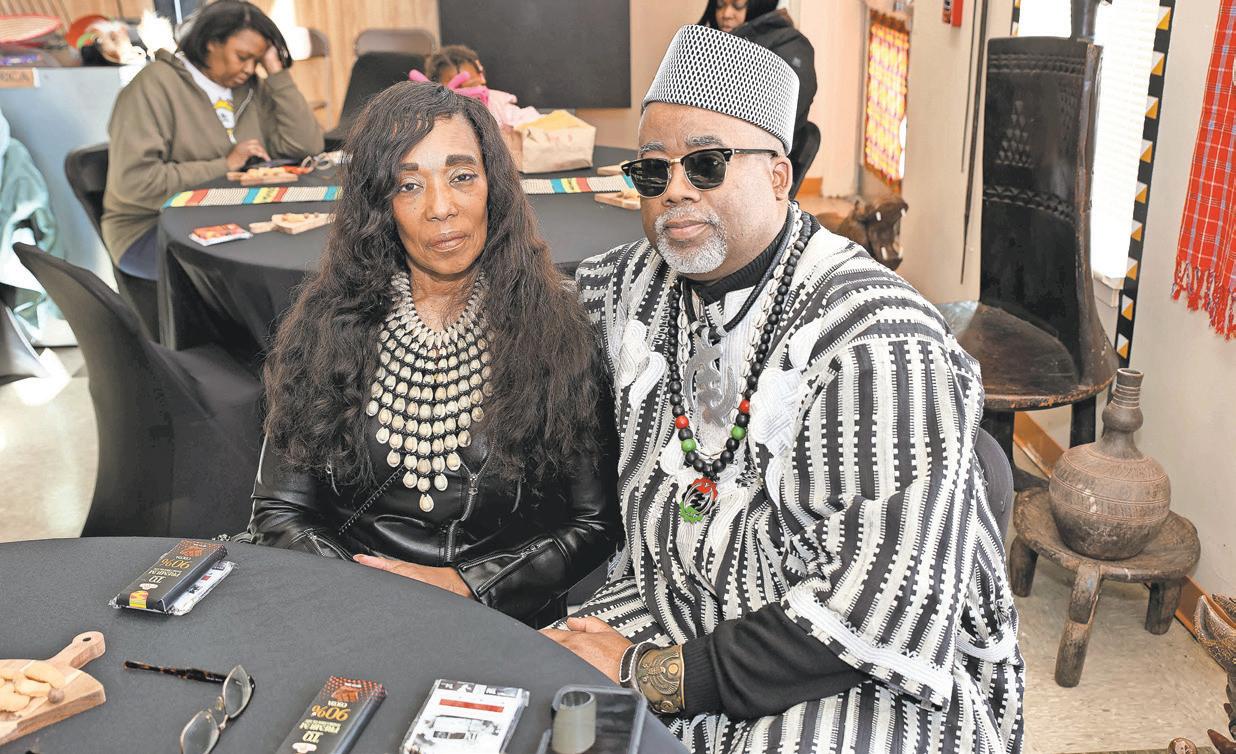
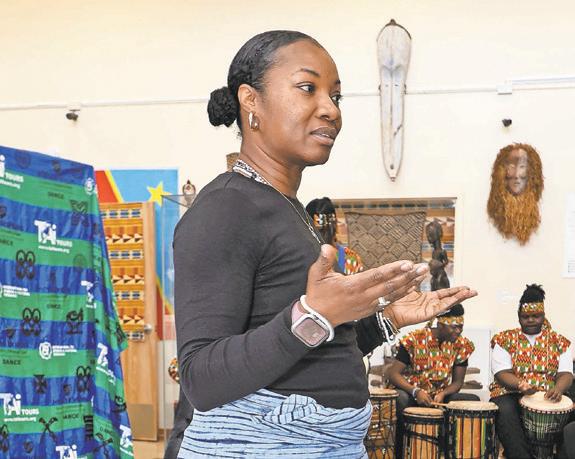
Diedre Dawkins, dance director for
Community Based Arts School, addresses the
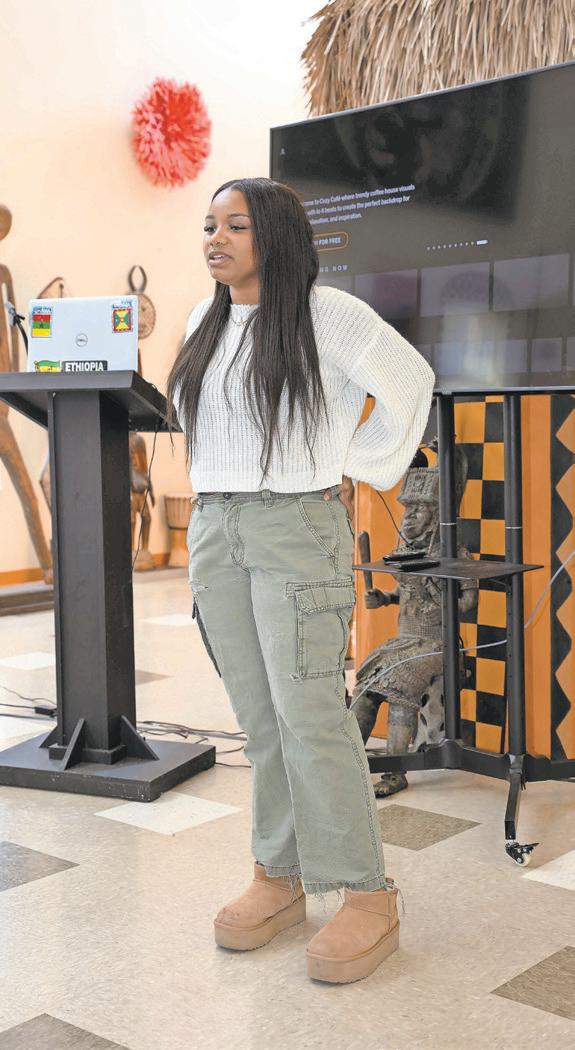
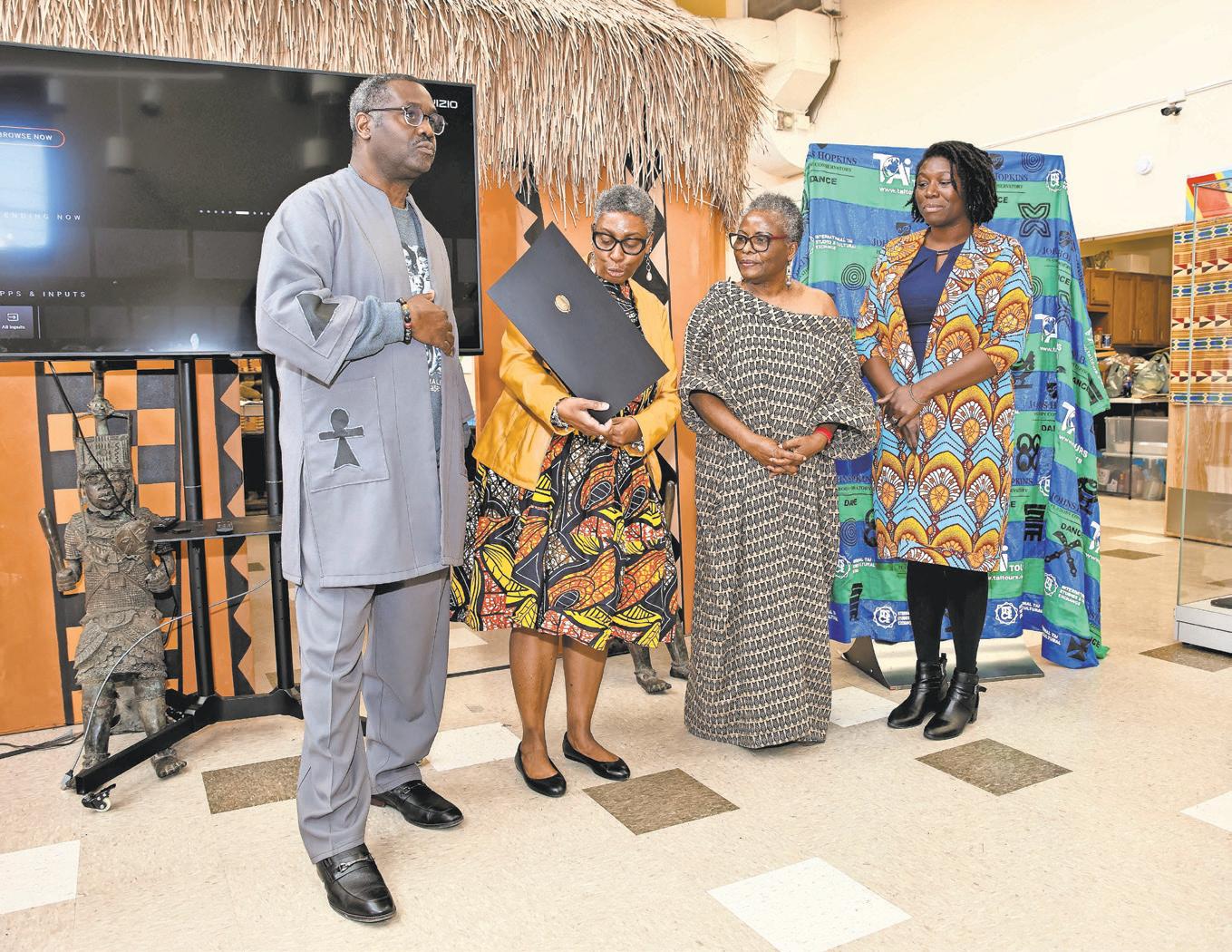
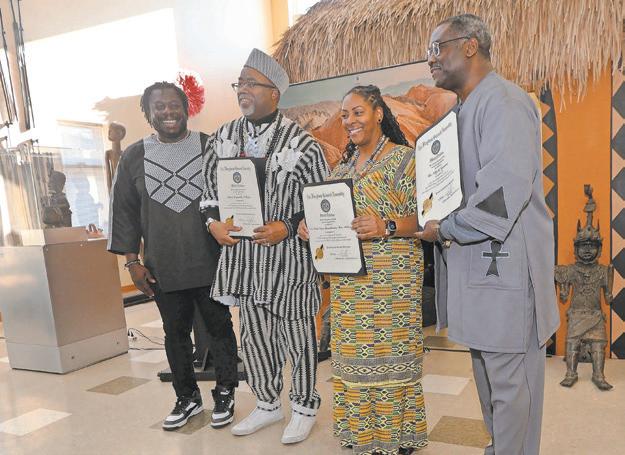

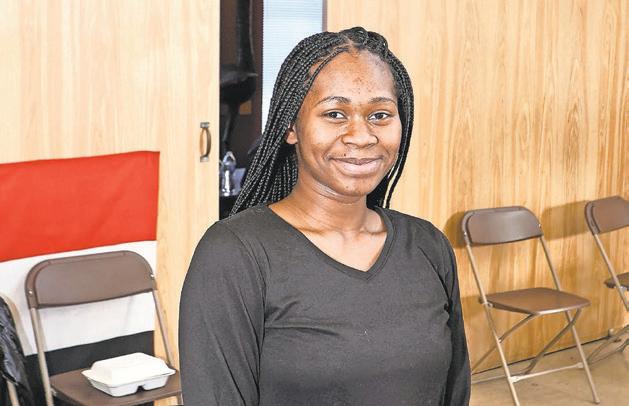
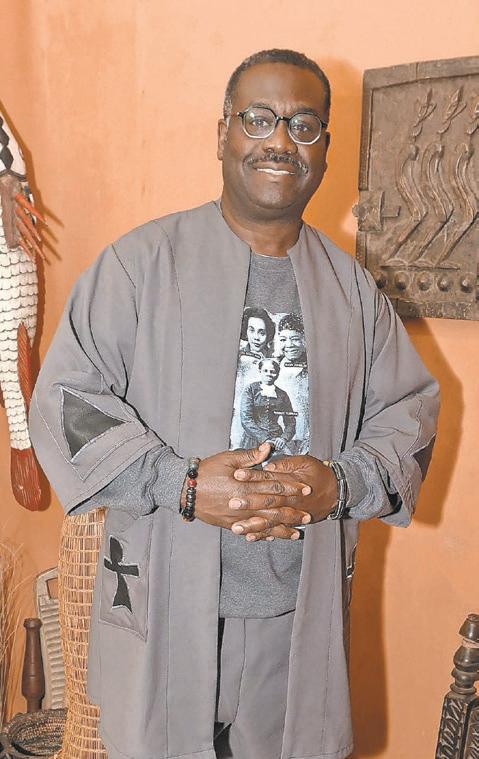
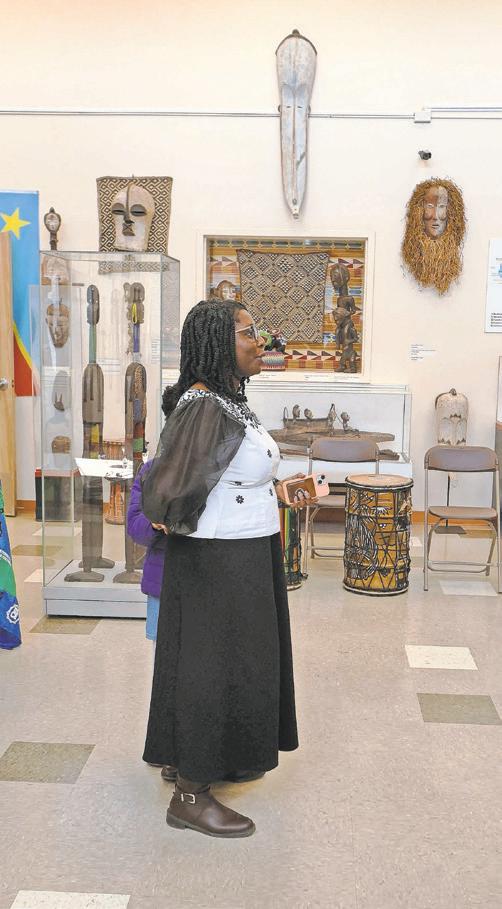


This week's C Section of the AFRO is dedicated to understanding and recording the experiences of the Black nurses, business owners, and educators who survived the coronavirus pandemic. On March 11, 2020, the World Health Organization declared a global pandemic as a result of rampant coronavirus infections. On March 13, 2020, leadership in the United States announced a state of emergency. Five years later, these are the stories of resilience, loss, and perseverance—and a look at how their journeys continue today.
By Alexis Taylor AFRO Managing Editor
Five years ago today, the United States came to a screeching halt. As a new disease spread around the globe, borders closed, schools switched to online learning and the entertainment industry pivoted to living room jam sessions and online concerts.
Pastors struggled over the decision to close their doors, entrepreneurs sought ways to keep their businesses viable, but for one group- the nurses holding up the front lines- the decision was much more complicated: Should they risk their lives and the wellbeing of their family members to serve those in need of medical attention?
Five years later, the world is forever indebted to the millions of healthcare professionals around the world who responded with a resounding “yes.”
The year 2020 kicked off as what the World Health Organization (WHO) deemed the “Year of the Nurse and Midwife.” Though the pandemic had not yet begun when the theme was chosen, the leaders were more on target than they ever could have hoped to be.
“I first realized I was living through a pandemic when the news kept talking about massive numbers of COVID cases… hospitals were filling up…everyone was scrambling trying to find a mask,” said Tyrane Herriott, 59.
Herriott vividly remembers her experience five years ago this month.
“We stopped sitting next to each other at work. You couldn’t find toilet paper and there were discussions to close churches,” recalls Herriott. “I was very scared for my family. My husband had so many health challenges during that time– COPD, on oxygen– my daughter, multiple lung collapses; My father and aunts –elderly…everyday I was fearful I would bring COVID home and make them sick, or I would get sick and not be able to care for them.” Herriott still showed up to work each day, even as the bodies piled up around the country.
“I felt that someone had to be around to provide as much support, knowledge and care as possible for the patients because we didn’t know
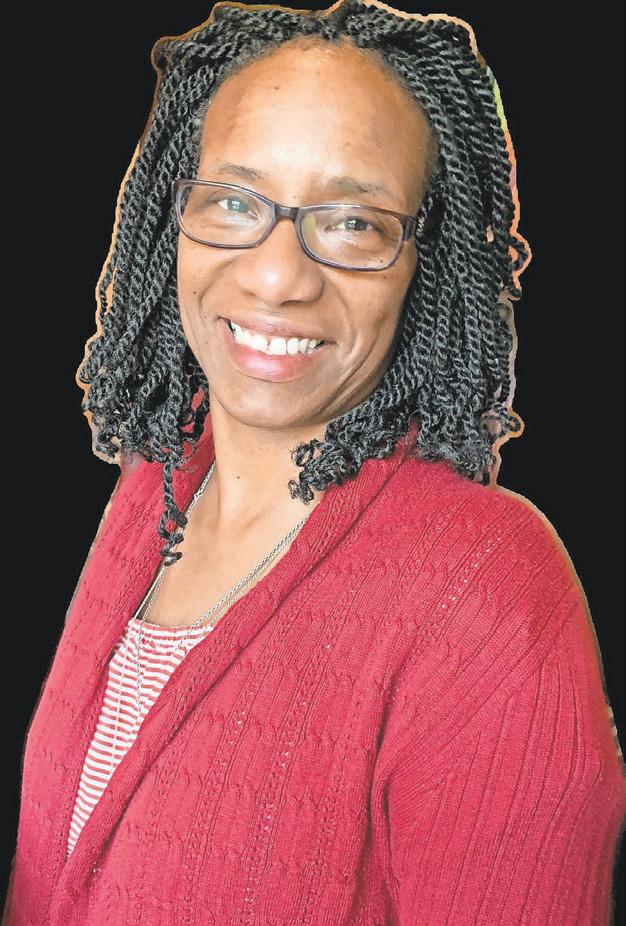
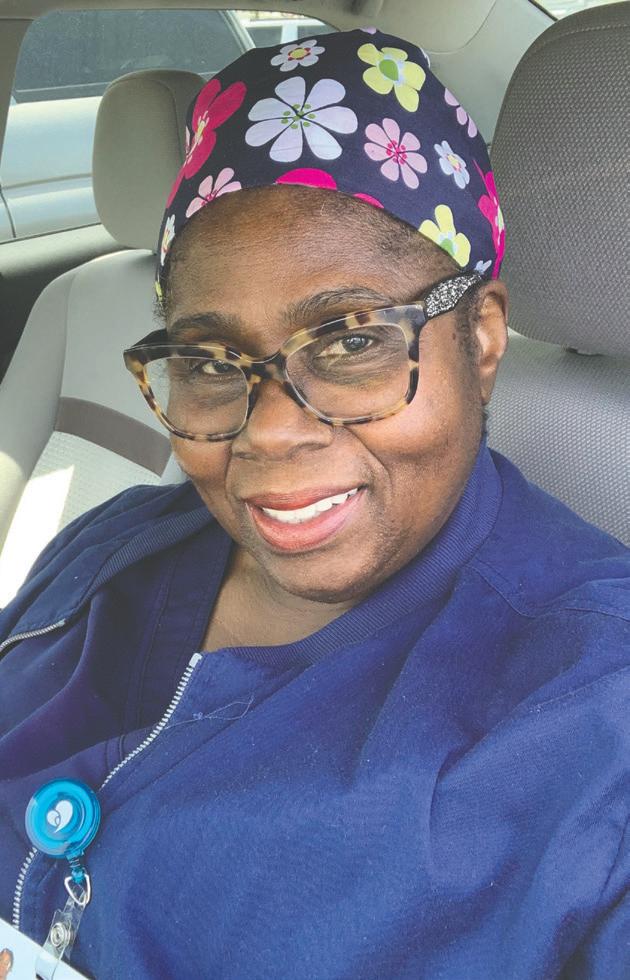
veteran
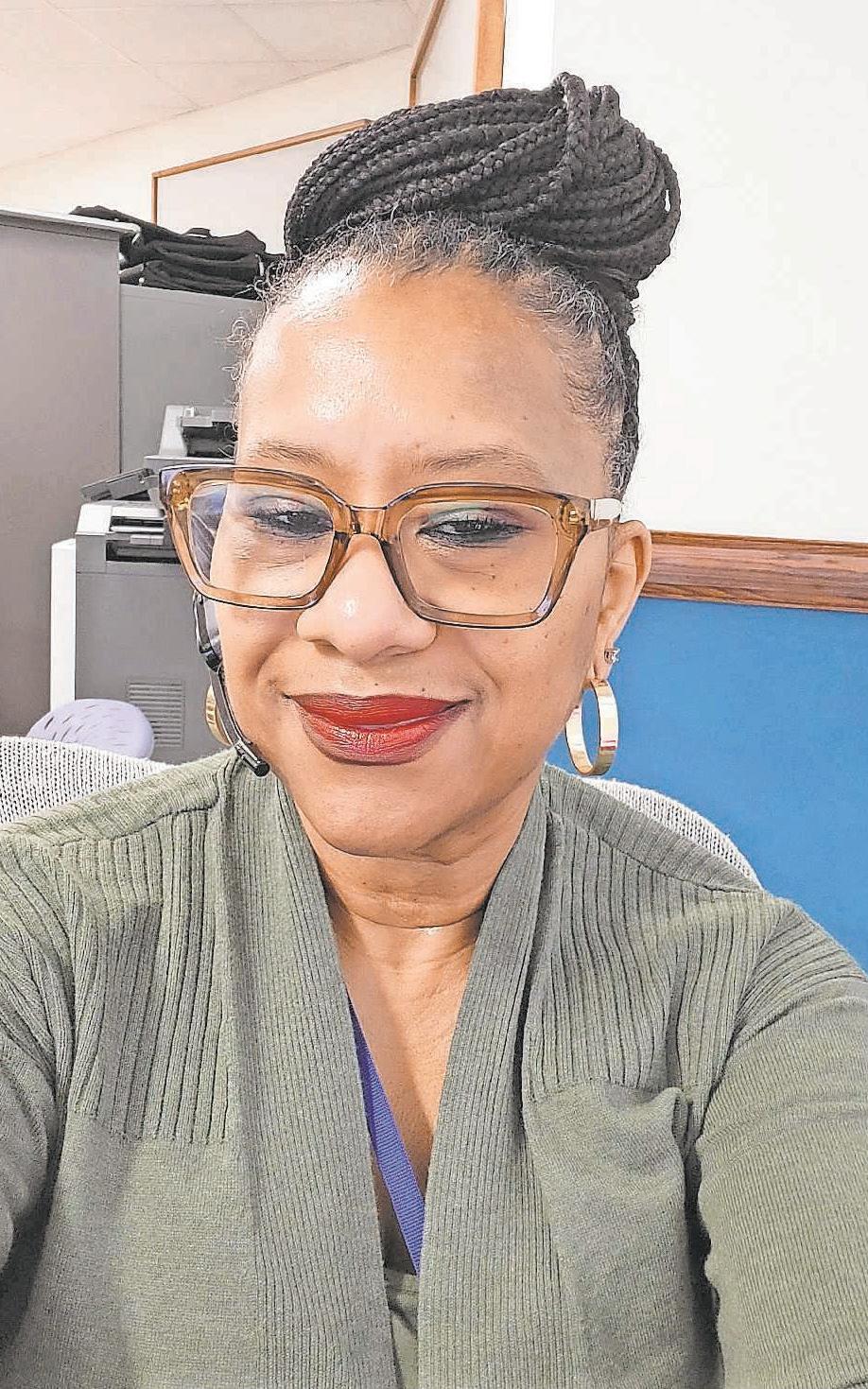
and National Black Nurses Association board member. She initially stepped away from the hospital scene during the pandemic due to health risks, but continued her work as a telephonic triage nurse. She later returned to in-person care to help administer vaccines.
WHO officials report an estimated 7.1 million people perished from COVID-19 as of Feb. 23. Americans account for more than one million of the lives lost in the pandemic thus far.
Back in 2020, the Centers for Disease Control and Prevention reported thousands of deaths each week. The week ending on March 21, 2020 saw 588 deaths involving COVID-19; The week ending on April 18, 2020 saw 17, 221.
As activity ramped up in hospitals and medical centers, the world came to a standstill. Each country had to decide how to combat the virus. In America, many found themselves restricted by curfews. Only essential workers could be on the road at certain times, depending on the state and intensity of response to the health emergency.
much about it,” she said. “It was really hard seeing so much death.
[I] tried really hard to stay busy… working, praying…tried not to think about it. [I] stopped watching the news…It was always sadness. Even thinking about it now I still feel sadness.”
“My neurology group typed up our ‘permission’ documentation, so if we were stopped for being out we could prove that we were medical providers and had a legitimate reason to be on the road,” recalls nurse practitioner Chandra Hall. “This was a surreal experience– to be one of only a handful of cars on the
roadways. Even the animals understood after a while that we had to stay inside. I started seeing animals such as a large group of wild turkeys resting out in the open because there was no fear of being interrupted by humans.”
Hall first heard of the coronavirus in late December 2019, when the disease began to spread overseas. By January the first American cases were confirmed. By March, the country was shut down. Life rapidly changed.
Though her journey to work may have been blanketed in an eerie calm, the early days of the pandemic offered Hall nothing but chaos as a health professional.
“COVID broke me as a provider,” she said. “No matter what I did, I was losing my patients left and right. I went home crying each and every night second guessing myself on if I did everything possible to try and save them…wondering if I missed something.”
Hall, now 55, says she “battled on” for her patients because she knew “they all meant something to someone, somewhere.”
“If I had to trade places with their loved ones, I [would] want to know that someone like me was on the front lines fighting for them just as fervently as if they were my own loved ones,” she said.
Like too many medical professionals across the country, the losses at work were compounded by losses at home.
“I lost several family members… two uncles, one cousin,” she said. “It was absolutely devastating to experience so much death.”
Hall decided to cope with it all by taking a two year mental break, she says, “because an empty pitcher cannot pour into others.” She returned to the field with fresh energy and a new dedication to serve.
Like Hall, Trilby Barnes-Green, a board member of the National Black Nurses Association NBNA, had to step away from the career she had built over the years. Barnes-Green, now 69, became an RN in 1976. In 2020 she was working at a hospital and doing telephonic triage nursing. She was also traveling, due to her activity in NBNA.
“I was working two jobs, hearing things, but not really stopping to hear it, you know? My husband is a
news connoisseur. He was in it. And he said, ‘Trilby, you know you’re traveling.’”
On a trip to Capitol Hill to advocate on behalf of Black nurses, Barnes-Green’s husband gave her and her travel partner masks and sanitizer.
“Looking back at that, several times we’ve thanked him. It was in February of 2020. Everybody thought if you were wearing the mask, you probably had something,” recalls Barnes-Green.
Within weeks she realized how dire the situation was– especially given her own pre-existing health conditions.
“I felt like I was too much of a high risk…I removed myself from the hospital scene,” Barnes-Green told the AFRO
Though she stepped away, she knew she had to go back.
“The hospital was short for nurses doing that,” Barnes-Green said. She told herself, “‘Get in there and help! You know they have it as safe as it can possibly be.’” “And so I did, said Barnes-Green. “I went back to the hospital to help get the vaccinations rolling.”
Since WHO leaders declared a global coronavirus pandemic on March 11, 2020, and every day since, it has become clear just how important nurses are.
In the past five years nurses have helped patients understand the virus. They have alleviated fears regarding COVID-19, helped people process positive coronavirus tests and dealt with conspiracy theories. And while doctors certainly have certainly done their part, the nurses that helped millions around the world take their final breath and beyond that- comforted family members left– behind can never be forgotten.
Today, Barnes-Green has one message to the nurses who had to take a break during the COVID-19 pandemic.
“Come back!” she said. “We need you! You can always leave again, you know. Give a day– give two days– or come back to home health…to education. Come back and be that clinic nurse for students, because the universities need clinical instructors.”
“We need every nurse that left to come back,” she said. “That’s my message, really and truly.”

By Megan Sayles
AFRO Staff Writer msayles@afro.com
It’s been five years since the COVID-19 pandemic forced businesses to temporarily and, in some cases, permanently close their doors. With lockdowns and social distancing protocols sweeping across the nation, entrepreneurs had to adapt or risk losing their livelihoods.
In some cases, the push to pivot enabled business owners to expand their operations.
In others, sales took a hit.
As a professional in cleaning services, Antanius Fields said he was alert to the pandemic early on. The virus first began to spread overseas in late 2019, but began to ravage the American population–and economy– in March 2020.
“I was very familiar with the coronavirus, but I knew my clients were not,” said Fields. “I was very concerned that they would take the approach of cutting back on services instead of attacking the issue by continuing services that would ensure their environment was safe and healthy.”
Fields’ Jacksonville, Fla.-based business, Next Level Cleaning, was created in 2009. The enterprise serves both residential and commercial clients, ensuring their spaces stay clean and well-maintained.
When shutdowns started, he had a mix of emotions.
“I was nervous initially for some of my smaller clients because I knew their foot traffic would be down considerably, which, in turn, would shrink budgets. Traditionally, the first areas to be cut are the cleaning staff,” said Fields.
“With larger clients being more involved in the overall landscape of their environment, it made it a little easier to continue service with the added level of urgency to keep those who had to work outside of their homes healthy in the workplace.”
He explained that social distancing guidelines did
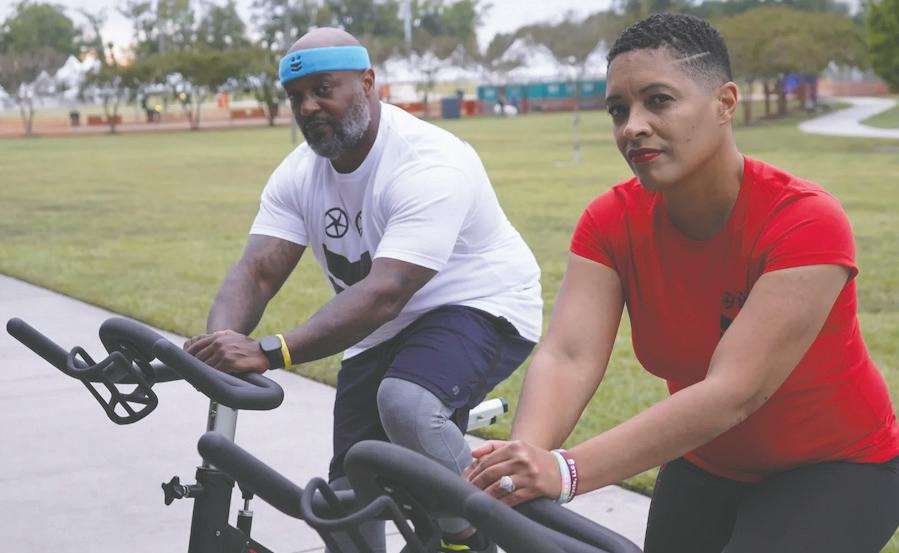
not really affect his operations. Cleaning crews typically work overnight or very early in the morning when most people are still at home. He added that this enabled essential employees to step into a clean environment each day.
Though the commercial aspect of his business remained stable, residential services suffered.
“From the residential side of services that we offer, we took about a 50 percent loss at minimum,” said Fields.
“People just could not afford to continue with services at that time. It made it very difficult to sustain that side of the business during that period.”
As a result of this, Fields stayed focused on his work with commercial clients. He said it paid off.
“We had an extremely low percentage of clients missing

“The biggest take-away has been [about] being flexible and prepared to pivot when necessary.”
work due to Covid,” said Fields. “This allowed for those clients to not decrease the frequency of services, which was a fear because it was happening in so many service-based industries.”
His commercial operations returned to normal in the middle of 2021, but residential services continue to be a challenge.
“The biggest lesson I learned is that staying focused on what you can control is extremely important to sustain you in tough times and being proactive in diversifying the niches of your business can be the best way to be sustainable in lean times,” said Fields.
For functional medicine practitioner Sequoyah Lindsey-Taylor, the pandemic presented an opportunity to scale her business, ASE Wellness. The alternative and holistic health organization, based in Florida, helps families determine the root causes of their children’s ailments and illnesses, including attention deficit hyperactivity disorder (ADHD) and anxiety.
“It ended up being a blessing in disguise. We were doing a lot of business that was local and attempting to reach clients outside of our local area,” said Lindsey-Taylor. “With Covid, we had to pivot to online health care.”
Before the public health
crisis, Lindsey-Taylor’s practice was forward-facing. The transition to telehealth and other virtual services meant she could reach more clients.
But, she also had to find a platform that was compliant with the Health Insurance Portability and Accountability Act (HIPPA).
“Once we did that, we were able to serve clients not only locally but it allowed us to be able to expand nationally and, now, internationally,” said Lindsey-Taylor. “Now, we’re able to see our clients from anywhere.”
Being in the health and wellness space, she said the business also benefitted from the uncertainty people were facing during the pandemic. She could suggest vitamins and other supplements for health boosts and maintenance.
She also had more time to focus on reaching people through social media.
“We went from hundreds of views to thousands, and now we’re in the ten thousands. The more eyes you have helps to increase patient load,” said Lindsey-Taylor. “It also helped that when there is uncertainty there is money to be made. People had questions, and we were already set and ready to give them answers.”
Husband and wife team
Mark and Anissa Davis’
current business model was born out of the COVID-19 pandemic. They run WARcycle, a veteran-owned wellness company in Lexington Park, Md. that provides group fitness classes.
Before the virus shut down the country, the pair had been renting cycling rooms and equipment in gyms to serve their clients. A few months before lockdown, the Davis’ were able to purchase 22 cycling bikes of their own.
“Up until the pandemic, we were not doing anything with the bikes. They were sitting in storage, and we were still paying to rent space to conduct classes,” said Mark Davis. “Once all the gyms and most other businesses closed their doors, it came to us that we had an opportunity to do something that no one else was doing. That was to start doing outdoor classes and become a
mobile fitness company.”
Today, WARcycle travels through Maryland, Virginia and D.C. The company partners with local businesses to host outdoor and indoor classes on location. It’s also expanded its services, adding a hip-hop step class and community walking group to the lineup.
Most recently, the Davis’ launched a nonprofit, CycleBack, to deliver fitness services to community members who cannot afford gym memberships or do not have adequate access to gyms.
“We’ve actually seen an increase in sales, not just from an uptick in customers but also in eliminating overhead charges that we were paying before the pandemic,” said Mark Davis. “The biggest take-away has been [about] being flexible and prepared to pivot when necessary.”
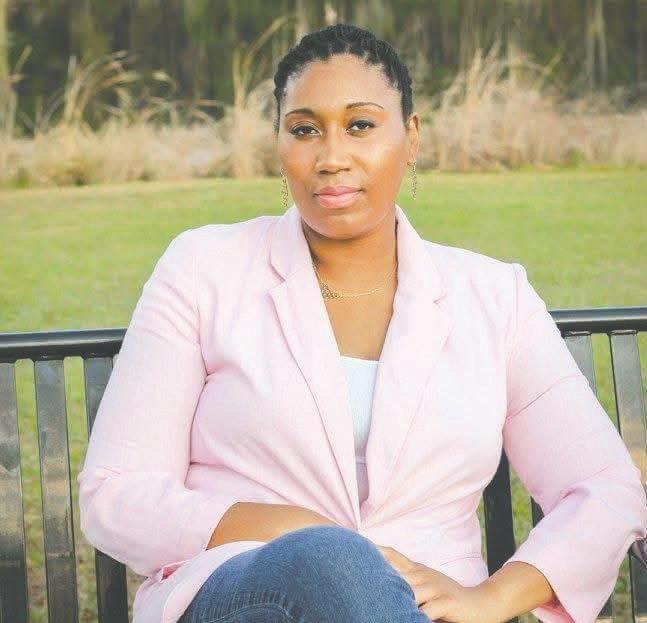

By Special to the AFRO
By Gene A. Lambey
On Friday, March 13, 2020 teachers and members of the school community had their last normal day in the workforce. As fear of a deadly virus spread, infection rates traveled faster.
In recognition of the fifth anniversary of the start of the coronavirus pandemic, the AFRO reached out to education professionals to understand how students and teachers in the current 2024-2025 school year have progressed since the pandemic and what else can be done to accommodate academic success in the aftermath.
Belicia Reaves, executive director of Two Rivers Public Charter School (Two Rivers PSC) , said five years later, the learning community in Washington, D.C. is on a strong rebound.
“I do see our teachers managing much better here at Two Rivers, than directly after the pandemic,” she said.
“Continued investment in supports that are working is necessary to return to pre-pandemic levels and improve outcomes even further.”
“We have resources and tools that are being utilized. We have set up wellness days and professional development days for our staff,” said Reaves. “We’ve had high impact tutoring over the last five years for our students, which enhances and gives our teachers the opportunity to have students at different levels continuing to progress.”
In the wake of the pandemic, disparities and gaps in the education system became all the more clear. Students with no access to the internet struggled to keep up with an in-person system thrown suddenly into the virtual world.
Teachers had to figure out how to work new platforms and

create engaging lessons for students at home with multiple school-aged children who may or may not have materials needed to learn.
The task, for educators and stakeholders, was daunting.
According to the Brookings Institute, a non-partisan nonprofit focused on research to inform policy at all levels, “teachers had to adapt to unexpected conditions, teaching in unprecedented ways, using synchronous and asynchronous instruction, while also being challenged to establish connections with students, families and colleagues.”
The National Center for Education Statistics (NCES) reports that “In the 2020–2021
school year, there were 3.5 million full-time and part-time traditional public school teachers, 251,000 public charter school teachers, and 466,000 private school teachers.”
Roughly “8 percent of teachers in public schools exited the profession between the 2020-2021 and 20212022 school years, but “this departure rate was unchanged from nearly a decade earlier,” according to NCES data.
The reasoning however, was completely different.
RAND, a think tank that focuses on research and development, reports that “almost half of the public school teachers who voluntarily stopped teaching in public schools after March 2020 and before their scheduled retirement left because of the COVID-19 pandemic.”
Still, a majority made sure to log in each day, intent on teaching and supporting their students the best they could in a global health emergency.
Reaves spoke on relationships between teachers and
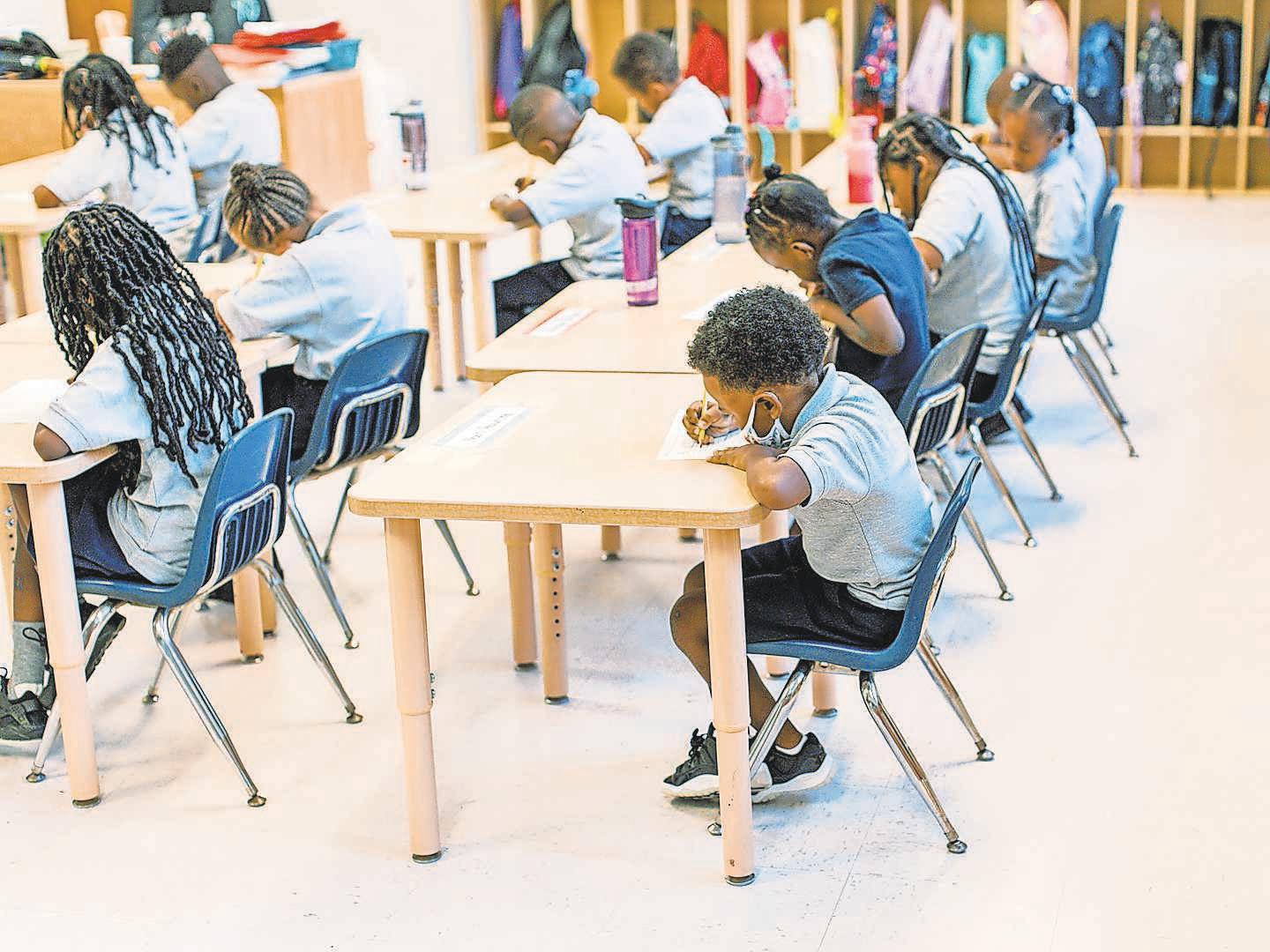
parents post COVID. She said parents are “more appreciative” of the work that teachers do after having their children at home during the heights of the pandemic.










“That has led to our parents [having] strong relationships,” said Reaves. “[They] are willing to volunteer at Two Rivers in the classroom and for activities that our kids are participating in,” now that in-person learning is back in full swing. Reaves added there are room parents in the classroom throughout the lower grades. Parent volunteers engage in reading clubs with students in the upper levels of third through fifth grade.
Innovative platforms are being used to gauge where students are and how to get them to where they need to be academically.
“It is our duty to make sure that every student is served,” she said. “In order for us to do that, [we use] learning programs like Zearn or Lexia, both in math and reading, for students to see where they are academically, at grade level, above grade level or below.”
“Teachers can use those programs to send or assign students lesson plans through learning projects. It’s not a cookie cutter, one size fits all. It is targeted and specific,” stated Reaves.
Still, one of the biggest challenges remains in the area of social development. The mental health of students at every level suffered during the pandemic.
“As students were returning to in-person learning, there was a period of time where an adjustment had to be made for staff and students. For students in particular, the biggest piece that I’ve seen is that different kids have different levels of responsibility as well as the social dynamic,” said Reaves. “When dealing with elementary and middle school, being in the community is a life skill that they are learning as well as the social curriculum outside of the academic curriculum. They both feed into one another. We had to build back and the amusement grew overtime into what it meant to be a part of a community.”
“To be in a classroom with 17 other kids and all their personalities, those social skills are really important in terms of what they are learning and
how to engage, how to walk from one place to the next.” Reaves told the AFRO that Two Rivers PSC began using the crew system from the middle school, a system that functioned as a home room for the students. This space gave students a break for “emotional relief” and “celebration.” This space was called “crew time” because students interacted with each other and their teacher, or their “crew leader.”
Enrollment trends are up
As a result of major recovery efforts and funding, a 2025 March study from the D.C. Policy Center showed a positive gain in enrollment for D.C. Public Schools (DCPS) in the 23-24 school year. The data showed enrollment increased 2.3 percent in pre-kindergarten (PK) through 12th grade to 90,608 students. 63 percent Black students, 19 percent Latino, 14 percent White, and five percent other races or ethnicities. Remaining data showed 17 percent of students with disabilities and 13 percent English learners. 49 percent of students were designated as “at-risk.” 17,225 students attended private and parochial schools last year.
The report showed 74 percent of D.C. teachers returned to their same school and role last school year.
In the report, 34 percent of students met or exceeded expectations in English Language Arts (ELA). Another 23 percent met or exceeded expectations in math. Learning outcomes in both subjects were still lower than pre-pandemic, by 3 percentage points in ELA and 8 percentage points in math.
Hannah Mason, senior education research analyst for the D.C. Policy Center, says five years later, the recovery process from the pandemic is a work in progress.
“The COVID-19 pandemic is proving to have enduring effects on students’ academic, mental well-being, and attendance along with different impacts for parents (increased concerns on student safety and transportation challenges) and teachers (burnout and staffing shortages),” she said, in a statement to the AFRO “Continued investment in supports that are working is necessary to return to pre-pandemic levels and improve outcomes even further.”

SUPERIOR COURT OF THE DISTRICT OF COLUMBIA PROBATE DIVISION ADMINISTRATION NO. 2024ADM000737 TIMOTHY ELLIOTT Name of Decedent
TYECHIA L. WHITE, ESQ.
300 NEW JERSEY AVE, NW SUITE 300 WASHINGTON, DC 20001 ATTORNEY Notice of Appointment, Notice to Creditors and Notice to Unknown Heirs
JOSEPH BRISCOE ANDREA HARPER Personal Representatives
SUPERIOR COURT OF THE DISTRICT OF COLUMBIA PROBATE DIVISION ADMINISTRATION NO. 2025ADM000140 EDNA L WILLIAMS AKA EDNA LUVENIA WILLIAMS
RONNIE
1629
N.W. #300 WASHINGTON,
and
JEANETTE WILLIAMS SPRIGGS-CLARK whose address is 7109 SUNRISE DRIVE, LANHAM, MD 20706 was appointed Personal Representative of the estate of EDNA L WILLIAMS AKA EDNA LUVENIA WILLIAMS who died on OCTOBER 20, 2024, with a Will and will serve without Court supervision. All unknown heirs and heirs whose whereabouts are unknown shall enter their appearance In this proceeding. Objections to such, appointment shall be filed With the Register of Wills, D.C., Building A, 515 5th Street, N.W., 3rd Floor, Washington, D.C. 20001, on or before SEPTEMBER 14, 2025, Claims against the decedent shall be presented to the undersigned with a copy to the Register of Wills or filed with the Register of Wills with a copy to the undersigned, on or before SEPTEMBER 14, 2025 or be forever barred. Persons believed to be heirs or legatees of the decedent who do not receive a copy of this notice by mail within 25 days of its publication shall so inform the Register of Wills, including name, address and relationship. Date of first publication: MARCH 14, 2025 Name of newspaper and/or periodical: Washington Law Reporter AFRO American Newspapers
JEANETTE WILLIAMS SPRIGGS-CLARK Personal Representative TRUE TEST COPY REGISTER OF WILLS 3/14, 3/21, 3/28/25
KARIMAH WARE EDWARDS whose address is 1522 PROSPECT AVE # 1402, MILWAUKIE, WI 53202 was appointed Personal Representative of the estate of TIMOTHY ELLIOTT who died on SEPTEMBER 26, 2023, without a Will and will serve without Court supervision. All unknown heirs and heirs whose whereabouts are unknown shall enter their appearance In this proceeding. Objections to such, appointment shall be filed With the Register of Wills, D.C., Building A, 515 5th Street, N.W., 3rd Floor, Washington, D.C. 20001, on or before SEPTEMBER 14, 2025, Claims against the decedent shall be presented to the undersigned with a copy to the Register of Wills or filed with the Register of Wills with a copy to the undersigned, on or before SEPTEMBER 14, 2025 or be forever barred. Persons believed to be heirs or legatees of the decedent who do not receive a copy of this notice by mail within 25 days of its publication shall so inform the Register of Wills, including name, address and relationship. Date of first publication: MARCH 14, 2025 Name of newspaper and/or periodical: Washington Law Reporter AFRO American Newspapers
KARIMAH WARE EDWARDS
Personal Representative TRUE TEST COPY REGISTER OF WILLS 3/14, 3/21, 3/28/25
SUPERIOR COURT OF THE DISTRICT OF COLUMBIA PROBATE DIVISION ADMINISTRATION NO. 2025ADM000123
ORA MARCELLA HAYNES Name of Decedent Notice of Appointment, Notice to Creditors and Notice to Unknown Heirs
WILLIAM HAYNES, whose address is 5025 BLAINE ST. NE WASHINGTON, DC, 20019 was appointed Personal Representative of the estate of ORA MARCELLA HAYNES who died on DECEMBER 5, 2024 without a Will and will serve without Court supervision.
All unknown heirs and heirs whose whereabouts are unknown shall enter their appearance In this proceeding. Objections to such, appointment shall be filed With the Register of Wills, D.C., Building A, 515 5th Street, N.W., 3rd Floor, Washington, D.C. 20001, on or before SEPTEMBER 7, 2025, Claims against the decedent shall be presented to the undersigned with a copy to the Register of Wills or filed with the Register of Wills with a copy to the undersigned, on or before SEPTEMBER 7, 2025 or be forever barred. Persons believed to be heirs or legatees of the decedent who do not receive a copy of this notice by mail within 25 days of its publication shall so inform the Register of Wills, including name, address and relationship.
Date of first publication: MARCH 7, 2025
Name of newspaper and/or periodical: Washington Law Reporter AFRO American Newspapers
WILLIAM HAYNES
Personal Representative
TRUE TEST COPY
REGISTER OF WILLS 3/7, 3/14, 3/21/25
SUPERIOR COURT OF THE DISTRICT OF COLUMBIA PROBATE DIVISION ADMINISTRATION NO. 2025ADM000123 ORA MARCELLA HAYNES Name of Decedent Notice of Appointment, Notice to Creditors and Notice to Unknown Heirs WILLIAM HAYNES, whose address is 5025 BLAINE ST. NE WASHINGTON, DC, 20019 was appointed Personal Representative of the estate of ORA MARCELLA HAYNES who died on DECEMBER 5, 2024 without a Will and will serve without Court supervision. All unknown heirs and heirs whose whereabouts are unknown shall enter their appearance In this proceeding. Objections to such, appointment shall be filed With the Register of Wills, D.C., Building A, 515 5th Street, N.W., 3rd Floor, Washington, D.C. 20001, on or before SEPTEMBER 7, 2025, Claims against the decedent shall be presented to the undersigned with a copy to the Register of Wills or filed with the Register of Wills with a copy to the undersigned, on or before SEPTEMBER 7, 2025 or be forever barred. Persons believed to be heirs or legatees of the decedent who do not receive a copy of this notice by mail within 25 days of its publication shall so inform the Register of Wills, including name, address and relationship.
Date of first publication: MARCH 7, 2025 Name of newspaper and/or periodical: Washington Law Reporter AFRO American Newspapers
WILLIAM HAYNES Personal Representative
TRUE TEST COPY REGISTER OF WILLS 3/7, 3/14, 3/21/25
SUPERIOR COURT OF THE DISTRICT OF COLUMBIA
PROBATE DIVISION ADMINISTRATION NO. 2025ADM000129
WILLIE LESTER, JR Name of Decedent
IZU I AHAGHOTU 3724 12TH STREET NE WASHINGTON, DC 20017 ATTORNEY Notice of Appointment, Notice to Creditors and Notice to Unknown Heirs
MONICA BATRICE DURHAM whose address is 5901
FEDERAL COURT, UPPER MARLBORO, MD 20772 was appointed Personal Representative of the estate of WILLIE LESTER, JR who died on NOVEMBER 02, 1992, without a Will and will serve with Court supervision. All unknown heirs and heirs whose whereabouts are unknown shall enter their appearance In this proceeding. Objections to such, appointment shall be filed With the Register of Wills, D.C., Building A, 515 5th Street, N.W., 3rd Floor, Washington, D.C. 20001, on or before SEPTEMBER 14, 2025, Claims against the decedent shall be presented to the undersigned with a copy to the Register of Wills or filed with the Register of Wills with a copy to the undersigned, on or before SEPTEMBER 14, 2025 or be forever barred. Persons believed to be heirs or legatees of the decedent who do not receive a copy of this notice by mail within 25 days of its publication shall so inform the Register of Wills, including name, address and relationship. Date of first publication: MARCH 14, 2025 Name of newspaper and/or periodical: Washington Law Reporter AFRO American Newspapers MONICA BATRICE DURHAM Personal Representative TRUE TEST COPY REGISTER
SUPERIOR COURT OF THE DISTRICT OF COLUMBIA
PROBATE DIVISION ADMINISTRATION NO. 2025ADM000124
DEBORAH LYNN LEE Name of Decedent Notice of Appointment, Notice to Creditors and Notice to Unknown Heirs
NAKIA LEE BROWN whose address is 7310 SERENADE CIRCLE, CLINTON, MD 20735 were appointed Personal Representative of the estate of DEBORAH LYNN LEE who died on DECEMBER 29, 2024, with a Will and will serve without Court supervision. All unknown heirs and heirs whose whereabouts are unknown shall enter their appearance In this proceeding. Objections to such, appointment shall be filed With the Register of Wills, D.C., Building A, 515 5th Street, N.W., 3rd Floor, Washington, D.C. 20001, on or before SEPTEMBER 7, 2025, Claims against the decedent shall be presented to the undersigned with a copy to the Register of Wills or filed with the Register of Wills with a copy to the undersigned, on or before SEPTEMBER 7, 2025 or be forever barred. Persons believed to be heirs or legatees of the decedent who do not receive a copy of this notice by mail within 25 days of its publication shall so inform the Register of Wills, including name, address and relationship. Date of first publication: MARCH 7, 2025 Name of newspaper and/or periodical: Washington Law Reporter AFRO American Newspapers
NAKIA LEE BROWN Personal Representative
TRUE TEST COPY REGISTER OF WILLS
3/7, 3/14, 3/21/25
SUPERIOR COURT OF THE DISTRICT OF COLUMBIA PROBATE DIVISION ADMINISTRATION NO. 2025ADM000098
MICHAEL KEITH LOMAX Name of Decedent Notice of Appointment, Notice to Creditors and Notice to Unknown Heirs
periodical: Washington Law Reporter AFRO American Newspapers
JAMES L. RICHARDSON Personal Representative TRUE TEST COPY REGISTER OF WILLS 2/28, 3/7, 3/14/25
SUPERIOR COURT OF THE DISTRICT OF COLUMBIA PROBATE DIVISION ADMINISTRATION NO. 2025ADM000109 MARY BRENDA WITHERSPOON Name of Decedent Notice of Appointment, Notice to Creditors and Notice to Unknown Heirs SHELDON WITHERSPOON whose address is 4410 QUILLEN CIRCLE WALDORF,MD 20602 was appointed Personal Representative of the estate of MARY BRENDA WITHERSPOON who died on JANUARY 28, 2025, without a Will and will serve without Court supervision. All unknown heirs and heirs whose whereabouts are unknown shall enter their appearance In this proceeding. Objections to such, appointment shall be filed With the Register of Wills, D.C., Building A, 515 5th Street, N.W., 3rd Floor, Washington, D.C. 20001, on or before AUGUST 28, 2025, Claims against the decedent shall be presented to the undersigned with a copy to the Register of Wills or filed with the Register of Wills with a copy to the undersigned, on or before AUGUST 28, 2025 or be forever barred. Persons believed to be heirs or legatees of the decedent who do not receive a copy of this notice by mail within 25 days of its publication shall so inform the Register of Wills, including name, address and relationship.
Date of first publication: FEBRUARY 28, 2025 Name of newspaper and/or periodical: Washington Law Reporter AFRO American Newspapers
SHELDON WITHERSPOON Personal Representative TRUE TEST COPY REGISTER OF WILLS 2/28, 3/7, 3/14/25



KEITH ANTHONY LOMAX whose address is 1723
ERIE ST SE WASHINTON DC 20020 was appointed Personal Representative of the estate of MICHAEL KEITH LOMAX who died on MARCH 01, 2023, without a Will and will serve without Court supervision. All unknown heirs and heirs whose









Payment Policy for legal notice advertisements.
Effective immediately, The Afro American Newspapers will require prepayment for publication
accepted in the form of checks, credit card or money order. Any returned checks will be
result in the suspension of any future advertising at our discretion.
HOUSING AUTHORITY OF BALTIMORE CITY INVITATION FOR BIDS MAINTENANCE WORK ORDERS
IFB NUMBER: B-2036-25
The Housing Authority of Baltimore City (“HABC”) will issue an Invitation for Bids (“IFB”) for interested and qualified contractors to provide qualified technicians to complete a variety of maintenance work orders, including electrical, plumbing, carpentry, painting, drywall repair, etc. at various HABC scattered site dwelling units throughout Baltimore City BIDS WILL BE DUE no later than 2:00 p.m. Eastern Time on Friday, April 11, 2025
A non-mandatory pre-bid conference will be held on Wednesday, March 26, 2025 at 10:00 a.m., which will be scheduled as a virtual meeting. The entire IFB can be viewed and downloaded by visiting https://habc. bonfirehub.com/projects on or after Monday, March 17, 2025. Questions regarding the IFB should be directed in writing to the address and individual indicated below and must include the reference: HABC IFB Number B-2036-25.
Housing Authority of Baltimore City Division of Fiscal Operations, Procurement Department 417 E. Fayette Street, Room 414 Baltimore, Maryland 21202
Attention: Mary Kate Gagliardi, Senior Buyer Tel: 410-396-3105 mary.gagliardi@habc.org
ADVERTISEMENT FOR PROPOSALS TOWN OF HAMPSTEAD HAMPSTEAD, MARYLAND
HAMPSTEAD PFAS TREATMENT/CENTRALIZATION PROJECT WATER TREATMENT PLANT CONSTRUCTION INSPECTION SERVICES
The Town of Hampstead is seeking a Firm to provide water treatment plant construction inspection services for the construction of water treatment plants associated with the Town of Hampstead PFAS Treatment and Centralization Project (“Project”).
The Project is being funded, in part, by grants issued by the Maryland Department of the Environment State Revolving Loan Fund and the United States Environmental Protection Agency Emerging Contaminants in Small or Disadvantaged Communities Grant Program. Qualified minority business enterprises (MBE’s) and women’s business enterprises (WBE’s) are especially encouraged to participate.
To request an official copy of this Request for Proposals for Water Treatment Plant Construction Inspection Services (TOH-WTPCIS-FY25-09), please contact:
Mercy Health Services seeks qualified health care general contractors to submit qualifications and lump sum proposals for the renovation of the fourth floor of the Physician’s Office Building, 301 St. Paul Place, Baltimore MD for outpatient services.
The scope includes approximately 12,500 square feet of renovation for primary care clinics.
Selection will be based on the owner’s evaluation and review of the following criteria: contractor that demonstrates 15 years of outpatient experience with projects in the $2 million to $5 million range, experience in occupied spaces, proposed project team, current litigation, price to perform the work, ability to achieve minority goals, completion date and any bid qualifications. Documents are anticipated to be available after April 7, 2025, and by contacting Hord Coplan Macht at 410 837-7311. Qualifications and proposals will be due April 29, 2025, before 3:00 pm local time. CITY OF BALTIMORE DEPARTMENT OF TRANSPORTATION PUBLIC NOTICE
BOARD OF LIQUOR LICENSE COMMISSIONERS FOR BALTIMORE CITY NOTICE – MARCH 2025
Petitions have been filed by the following applicants for licenses to sell alcoholic beverages at the premises set opposite their respective names. The real property for these applications will be posted on or about March 17, 2025. Written protests concerning any application will be accepted until and including the time of the hearing. Public hearings may be scheduled on or after April 10, 2025 at 10:30 AM in City Hall; 100 N. Holliday Street, Room 215, Baltimore, Maryland 21202. Please visit llb.baltimorecity.gov under the link for "Hearing Schedules" for confirmation of the date, time, and place for all matters being heard by the Board.
1. CLASS “A” BEER & LIGHT WINE LICENSE
Applicant: Priyanshi Corporation T/a Paridaise Mart - Sasnjaykumar Patel and Jospeh Payne
Petition: Transfer of ownership and location of a Class “A” BW license
presently located at 1501 Broening Highway
Premises: 6230 Holabird Avenue 21224
(City Council District: 1st; State Legislative District: 46th)
2. CLASS “A” BEER, WINE & LIQUOR LICENSE
Applicant: Fikkal, Inc. T/a Hamilton Liquors - Ronald Armand Sanders and Ohm Prakash Rajan Magar
Petition: Transfer of ownership
Premises: 5418-20 Harford Road 21214
(City Council District: 3rd; State Legislative District: 45th)
Applicant: Indrani Liquor, Inc. T/a Indreni Discount Liquors - Anjali Patel
Petition: Transfer of ownership
Premises: 4159 Patterson Avenue 21215
(City Council District: 5th; State Legislative District: 41st)
3. CLASS “B” BEER, WINE & LIQUOR LICENSE
Applicant: Local Dough, LLC T/a Trade Name Pending - Shaun Stewart
Petition: Transfer of ownership requesting off-premises catering and delivery of alcoholic beverages
Premises: 1115 W. 36 th Street 21211
(City Council District: 7th; State Legislative District: 40th)
Applicant: Salt and Lime, LLC T/a Salt and Lime - Maria Costello
In an effort to educate the community and receive public comment the upcoming project, a community meeting will be held.
PUBLIC MEETING FOR E Coldspring Lane Traffic Calming Concept Between Stadium Way and Grindon Ave Thursday, March 20, 2025 6:30 PM Morgan State University Graves School of Business Management, Room 104 4200 Hillen Rd, Baltimore, MD 21218 Virtually: www.buff.ly/43hMejA
Judy Rang Town of Hampstead 410-239-7408 jrang@hampsteadmd.gov CITY OF BALTIMORE DEPARTMENT OF PUBLIC WORKS OFFICE OF ENGINEERING AND CONSTRUCTION NOTICE OF LETTING Sealed Bids or Proposals, in duplicate addressed to the Board of Estimates of the Mayor and City Council of Baltimore and marked for WATER CONTRACT NO. 1448R-Urgent Need Water Infrastructure Rehabilitation and Improvements Phase I-FY25 will be received at the Office of the Comptroller, Room 204 City Hall, Baltimore, Maryland until 11:00 A.M on April
Petition: Transfer of ownership with continuation of live entertainment and outdoor table service, requesting delivery of alcoholic beverages
Premises: 1718 Thames Street 21211
(City Council District: 1st; State Legislative District: 46th)
Applicant: Penny Black Baltimore, Inc. T/a Penny Black - Eliza Doering, John C. Doering, and Melissa Doering
Petition: Transfer of ownership with continuation of outdoor table service, requesting live entertainment
Premises: 1800 Thames Street 21321
(City Council District: 1st; State Legislative District: 46th)
4. CLASS “BD7” BEER, WINE & LIQUOR LICENSE
Applicant: Second THDC Baltimore, LLC T/a Trade Name PendingChristopher Regan
Petition: Transfer of ownership (Amended)
Premises: 313 N. Charles Street 21201
(City Council District: 11th; State Legislative District: 46th)
Applicant: Dembco, Inc. T/a Knotty Pine Inn - Stephen Demby
Petition: Request to add live entertainment
Premises: 801 S. Conkling Street 21224
(City Council District: 1st; State Legislative District: 46th)
Applicant: Our Sunday Gravy, LLC T/a Café Campli - Ryan Louis Scalfari
Petition: Transfer of ownership
Premises: 4801 Harford Road, Suite S2 21214
(City Council District: 3rd; State Legislative District: 45th)
Applicant: Gayberhood, Inc. T/a Leon’s - Kim Warren Thompson
Petition: Transfer of ownership with continuation of live entertainment
Premises: 870 Park Avenue 21201
(City Council District: 12th; State Legislative District: 40th)
Applicant: Washington Liquors, LLC T/a BW Liquors & Bar - Sarbjit
Singh and Harpal Singh
Petition: Transfer of ownership
Premises: 1269 Washington Boulevard 21230
(City Council District: 10th; State Legislative District: 40th)
ANNE ARUNDEL COUNTY, MARYLAND Annapolis, Maryland
ANNOUNCEMENT
REQUEST FOR BIDS
On or after February 17, 2025, Plans and Specifications may be obtained from the Anne Arundel County Web Page at the following address: https:// www.aacounty.org/departments/central-services/purchasing/P.O.R.T./ bids/index.html . Bids will be received until time/date shown below, please submit your bid electronically via the PORT. Bids received after the date and time set will be rejected.
Due by 1:30 p.m. Local Time, Tuesday, April 1, 2025.
Project: P588414 – Crownsville Wastewater Treatment Plant Decommissioning Phase 1
Sonication No.: CAP25000254
Contact: Chris Biggerstaff – 410-222-3191
in at (443) 984-1696 (ACCESS CODE: 0842939) from City Hall at Noon. The Contract Documents may be examined, without charge, at Contract Administration 4 South Frederick Street Baltimore, Maryland 21202 on the 3 rd floor (410) 396-4041 as of March 7, 2025, and copies may be purchased for a non-refundable cost of 100.00. Conditions and requirements of the Bid are found in the bid package. All contractors bidding on this Contract must first be prequalified by the City of Baltimore Contractors Qualification Committee. Interested parties should call (410) 396-6883 or contact OBC at 4 S Frederick St., 4 th Floor, Baltimore, MD 21202. If a bid is submitted by a joint venture (“JV”), then in that event, the document that established the JV shall be submitted with the bid for verification purposes. The Prequalification Category required for bidding on this project is B02551 Water Mains. Cost Qualification Range for this work shall be $10,000,000.01 to $15,000,000.00 A “Pre-Bidding Information” session will be conducted via Microsoft Teams Meeting. Vendor can join via Microsoft Teams Meeting ID: 292 288 387 320, Passcode: s5Pp9XV2 or Vendor can call 1 667-225-6519, Phone Conference ID: 226794926# on March 14, 2025, at 10:00 AM. To purchase a bid book, please make an electronic request at: https://publicworks.baltimorecity.gov/dpw-construction-projects-notice-letting and dpwbidopportunities@baltimorecity.gov. For further inquiries about purchasing bid documents, please contact the assigned Contract Administrator Latonia.Walston@baltimorecity.gov
Principal items of work for this contract include, but are not limited to: Urgent need water main repairs and replacement as necessary, including, but not limited to, replacement/installation of various size new ductile iron pipe, valves, fittings, and appurtenances replacement/installation of fire hydrants small (residential) meter settings and meter vaults, renew and replacement of existing water services, sidewalk restoration, curb and gutter, roadway paving, sedimentation and erosion control measures and maintenance of traffic, as required.
The MBE goal is 13% The WBE goal is 5% APPROVED: APPROVED:
Clerk Khalil Zaied
Board of Estimates Director Department of Public Works City Hall



















‘MORE
WASHINGTON (AP) —
Starlette Thomas remembers coming down almost daily to the intersection of 16th and H streets, to protest police brutality and systemic racial iniquities during the summer of 2020.
On March 10, the 45-year old Bowie, Maryland resident returned to the site of those protests to mourn the end of Black Lives Matter Plaza.
“I needed to be here today.
I can’t just let this go away,” Thomas said, as jackhammers began tearing into the giant yellow letters in the street. Thomas discretely secured a chunk of pavement and said holding it made her feel conflicted.
“To walk away with a piece of that, it means it’s not gone,” she said. “It’s more than brick and mortar.”
Crews started work March 10 to remove the large yellow “Black Lives Matter” painted on the street one block from the White House. D.C. Mayor Muriel Bowser announced the change last week in response to pressure from Republicans in Congress. The work is expected to take about six weeks and the words will be replaced by an unspecified set of city-sponsored murals.
The painting of those words was an act of government-sponsored defiance during President Donald Trump’s first term. The removal amounts to a public acknowledgement of just how vulnerable the District of Columbia is now that Trump
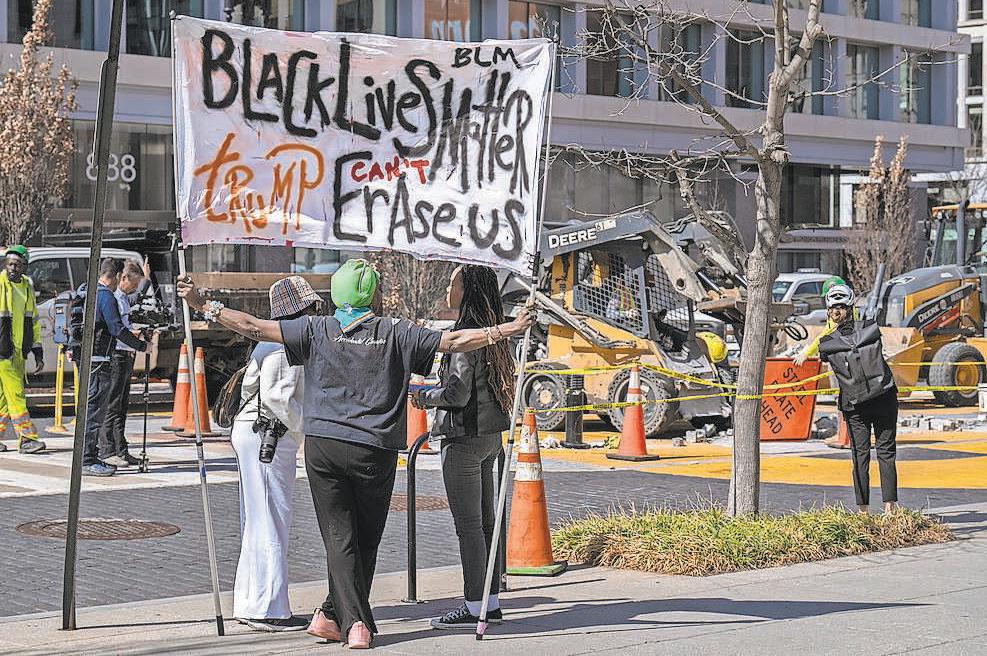
is back in the White House and Republicans control both houses of Congress. Bowser, a Democrat, ordered the painting and renamed the intersection Black Lives Matter Plaza in June 2020. It came after days of chaotic protests at that location following the murder of George Floyd by a Minneapolis police officer; Bowser had clashed with Trump over her handling of the protests. But now Bowser has little power to fend off encroachments on D.C.’s limited autonomy. Bowser said last week on X that, “The mural inspired millions of people and helped our city through a
Continued on D2
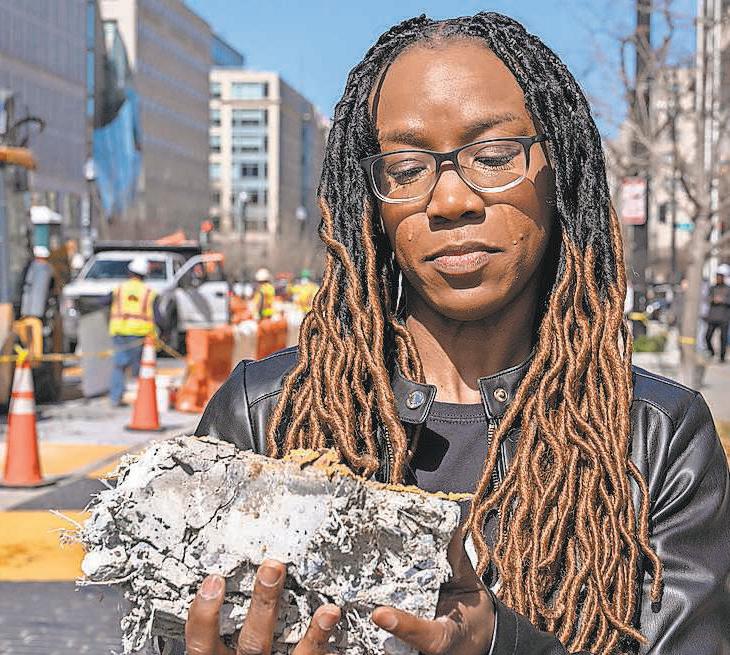
By Deborah Bailey
Editor
Special election primary voting took place in Prince George’s County March 4. Both the county executive seat and a spot on the Prince George’s County Council are open.
Democrat Aisha Braveboy and Republican Jonathan White won the county executive races in their respective parties and will face each other June 3 in the special general elections.
Braveboy led a crowded field garnering 43,266 votes, 46 percent of the total vote tally for all candidates. Vying against 8 other democratic candidates, Rushern Baker and Calvin Hawkins were her closest competitors, receiving 17,965 votes and 15,911 votes respectively, according to vote totals reported from the Maryland State Board of Elections.
Airforce veteran Jonathan White rallied to victory in the Republican camp with a smaller vote total of 1338 or 37 percent of the vote total in his primary followed by Jesse Peed who trailed early
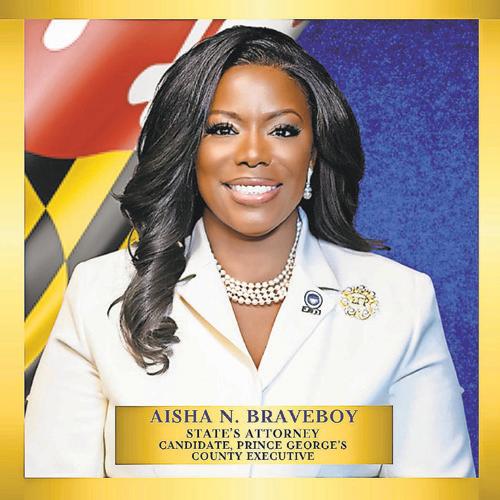
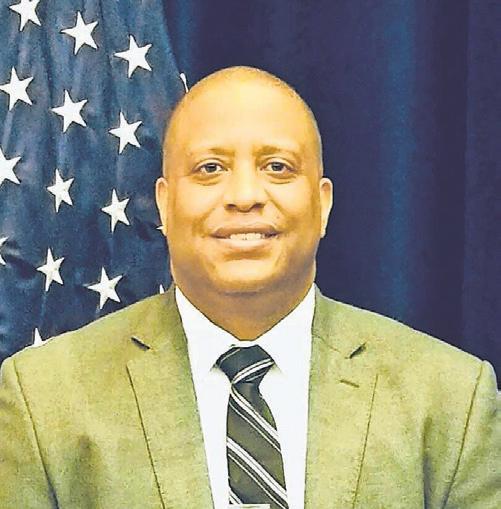
in the vote count but ended the primary with 1221 votes, 34.5 percent of total votes.
George McDermott who led early on election night ended the evening in 3rd place with a total vote count of 980.
Braveboy celebrated her primary victory at Metro Points Hotel in New Carrollton in New Carrollton. “If you’re a resident of Prince George’s County, your vote matters,” she exclaimed to the crowd gathered.
Braveboy’s campaign was boosted when Governor Wes Moore (D-MD) formally endorsed her candidacy in
mid-February, shortly before the start of early voting in the Prince George’s County special election.
“She’s going to put in the work for years to come so people understand this is Prince George’s time,” Moore said following her victory.
Voters like Kelsen James, who cast his ballot at the Laurel recreation center, said the Moore endorsement made a difference.
“I’m pretty much a Wes Moore fan and he endorsed Ms. Braveboy and that’s how I voted,” James said.
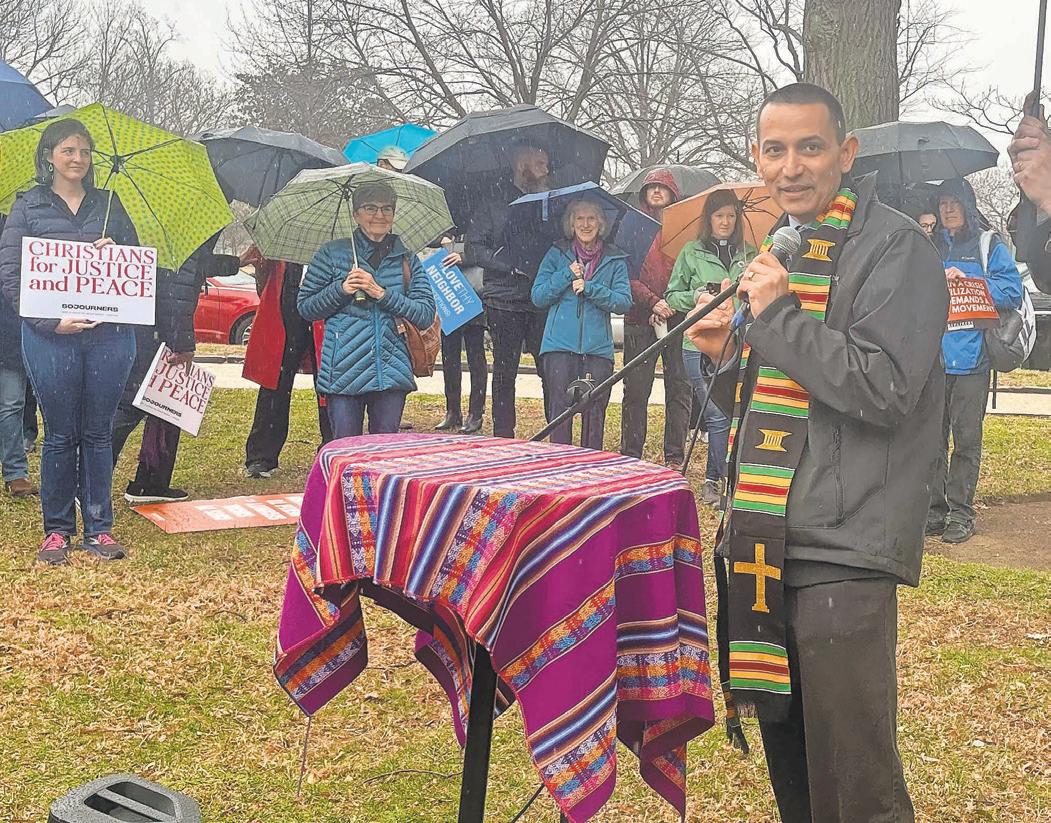
and political advocacy.
spearheaded the coalition of faith organizations
on March 5.
By Megan Sayles AFRO Staff Writer msayles@afro.com
A coalition of faith-based organizations stood outside of the U.S. Capitol on March 5 to demand that Congress defend against the 47th president’s assault on the Constitution and vulnerable communities. The group endured the rain and wind to condemn the president’s efforts to end birthright citizenship, freeze federal funding, shut down the U.S. Agency for International Development (USAID) and abolish the Department of Education (ED).
The vigil was part of a larger ongoing demonstration called “Faithful Witness Wednesdays,” which will continue to take place outside of the historic building every Wednesday in March. If demands are not met, the coalition plans to extend the vigils.
“The nations will be judged on whether or not we fed the hungry, whether or not we clothed the naked and whether or not we welcomed the stranger.”
James mentioned that he also knew about Braveboy’s work as Prince George’s County States Attorney, but made up his mind after Moore backed the candidate.
As for the county council seat, Shayla Adams Stafford won the democratic primary race to represent District 1 with 1,214 votes or 46 percent. She was followed by Ryan Middleton, who gained 30 percent of the votes among district one voters.
Fred Price was the only republican who ran for the district one seat and will face Stafford in the special general election this Spring.
The special election was held to fill the permanent seat for the Prince George’s County Executive after Senator Angela Alsobrooks won her seat as one of Maryland’s two U.S. Senators. She was sworn in and began serving in that role on Jan. 3.
Early voting for the Prince George’s County special general election will begin May 28 and run through June 2. Special election day in Prince George’s County is June 3.
“Historians and political scientists argue that modern democracies don’t die suddenly due to a coup or violent takeover— though democracies around the world are dying—but to a leader, often democratically elected, who consolidates power and proceeds to erode democratic norms and institutions,” said the Rev. Adam Russell Taylor, president of Sojourners. “In our context, both our courts and, yes, Congress are the guardrail. They are the bulwark to prevent that from happening.”
The 47th president has been met with litigation as a result of his recent executive actions. Multiple lawsuits and court injunctions have been filed to challenge the actions of the new Department of Government Efficiency (DOGE), the halting of foreign aid, the enforcing of diversity, equity and inclusion (DEI) bans and more.
Taylor explained that the court proceedings will take a considerable amount of time. He urged Congress to stand against the 47th president and exercise its constitutional powers.
“We know there’s going to be an appeal process, and that is going to be a long process. Meanwhile, far too many are unnecessarily going to be harmed and hurt in our communities and around the world,” said Taylor. “For members of

By D. Kevin McNeir Special to the AFRO
In August 2024 former U.S. Surgeon General, Dr. Vivek Murthy, issued an advisory declaring parental stress a public health issue in a report entitled, “Parents Under Pressure.”
In the advisory, Murthy called for a fundamental shift in American values and recommended that we prioritize the mental health and well-being of parents and advocate for more policies, programs, and individual actions that support parents and caregivers.
“Raising children is sacred work and the well-being of parents and caregivers is crucial for the well-being of children and future generations,” he wrote.
Murthy further acknowledged the stressors most often faced by parents including financial strain, time demands, children’s health and safety concerns and parental isolation and loneliness.
And while he did not specifically single out Black parents, Dr. Murthy did indicate that “mental health conditions disproportionately affect some parents and caregivers, including those facing racism and discrimination.”
Murthy’s research focused on parents with children 18 years old and younger. But does parental stress continue to impact parents even after their children become adults?
In an article published in The AFRO, May 19, 2024, we asked three Black men, all recent recipients of undergraduate or graduate degrees, if they had experienced stress in their educational pursuits because of racism and discrimination and what tools they used to achieve their goals. This week, parents were asked if they have struggled with parental stress or faced mental illness in their efforts to guide and protect their sons, both during their childhood and beyond those formative years.
Single father worries less these days, but still worries
Duane Sedgwick, 44, a maintenance engineer in Rockville, Md., said when it came to his son, Duane, he was determined to “keep him close.”
“I learned carpentry, plumbing and similar skills – even fixing bikes, cars and other things around the house – by trial and error,” he said. “I’ve always been a hands-on kind of person, and my son inherited that trait. That’s what has allowed us to spend so much time together, but my son has taken it to greater levels. He’s more talented than me.”
Sedgwick said he’ll never forget the joy he felt when his son received his mechanical engineering degree from Texas Christian University in Fort Worth, Texas.
“His life and what he does with it is up to him now, but when he graduated, I felt like it was the biggest accomplishment of my life. He’s the first in our family to graduate from college,” he said. “What makes it even more special for me is that I didn’t even graduate from high school–I learned trades. I made money honestly using my hands.”
Sedgwick admits that he, at times, has been overwhelmed with the effort it took to keep his son on the straight and narrow.
“I drove my son and his friends to D.C. and Baltimore, to basketball practices and after school events because I wanted to know who he was spending time with and to make sure he was safe,”
Continued from D1
Congress, particularly those who are followers of Jesus, I want to end with Jesus’ words: ‘What does it profit to gain the whole world and forfeit your own soul?’”
Sojourners, a Christian organization dedicated to political advocacy, spearheaded the “Faithful Witness Wednesdays” initiative. Other faith-based organizations at the vigil included the Baptist Joint Committee (BJC), National Council of Jewish Women (NCJW), United Methodist Church (UMC) and the United Church of Christ (UCC).
Bishop Julius C. Trimble, general secretary of the general board of church and society for UMC, said the event signals to the president that religious groups will not look the other way while communities are harmed.
“The administration needs to know that the faith community is not just going to quietly sit by as people are hurt, people lose their jobs and people lose access
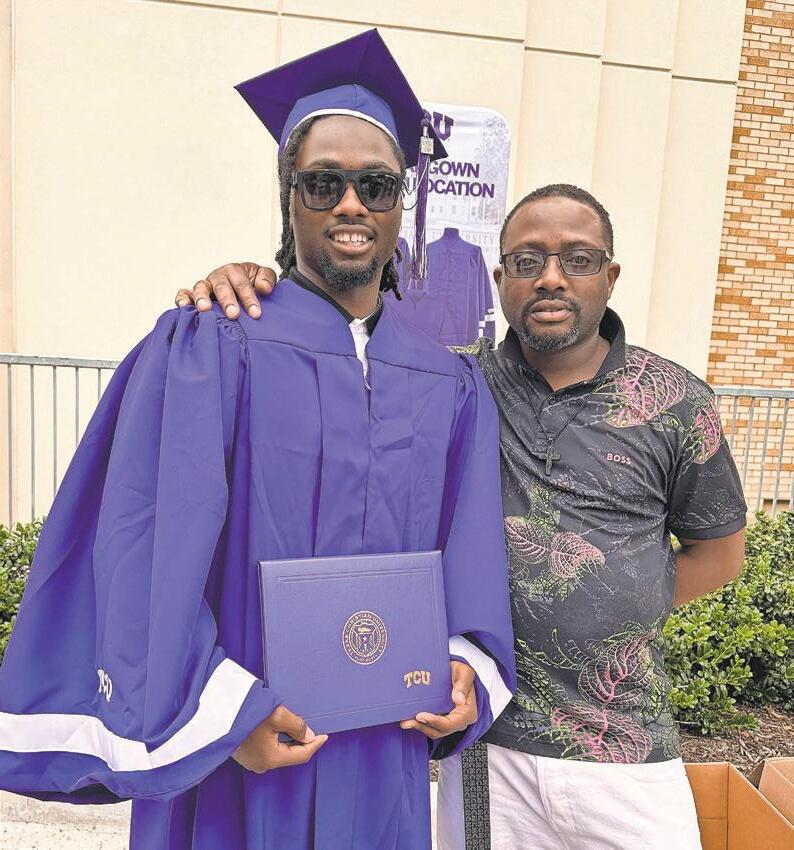
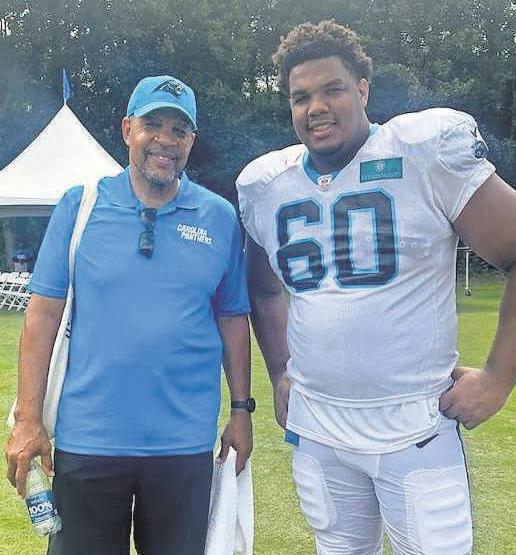
“Raising children is sacred work and the well-being of parents and caregivers is crucial for the well-being of children and future generations.”
he said. “I know the statistics about Black boys–and I was not going to let the streets influence him or take him away from me.”
Still, Sedgwick said parents can only do so much. The parental stress hasn’t gone away, even though his son is now fending for himself in Minneapolis, Minn., as a structural engineer.
“One of my son’s best friends was shot and killed while they were attending a house party back in high school,” he said. “They were sitting next to each other on a couch. The bullet wasn’t meant for my son, but it could have hit him. It could have ended his life. He’s had to deal with that ever since, but so have I.”
Keeping his son busy has been Alan Wilson II’s strategy
Alan Wilson II, 64, who lives in St. Louis, Missouri, said he bonded with his son, Alan III, now 26 by cutting down on idle time.
“I got him into sports when he was very young and like me, he took to it quickly,” said “That was my way of keeping him busy – occupied in positive situations and keeping an eye on him, too.”
to food assistance or health care, so that they can cut taxes for the billionaires,” said Trimble. “We believe this is a time for faith communities of all religions and no religion to speak up because the budget is a moral document. It represents whether or not—as Abraham Lincoln said—we’re going to lift all of the artificial weights from its citizens or we’re going to put more burden on the most vulnerable.”
Exit polls revealed that 63 percent of Protestant or other Christian voters cast their ballot for the 47th president last November. Nearly 59 percent of Catholic voters did the same.
Trimble advised Christians to take a look at the example set by Jesus and in scripture.
“What does the Lord require but for us to do justly, love mercy and walk humbly with God?” said Trimble. “The nations will be judged on whether or not we fed the hungry, whether or not we clothed the naked and whether or not we welcomed the stranger.”
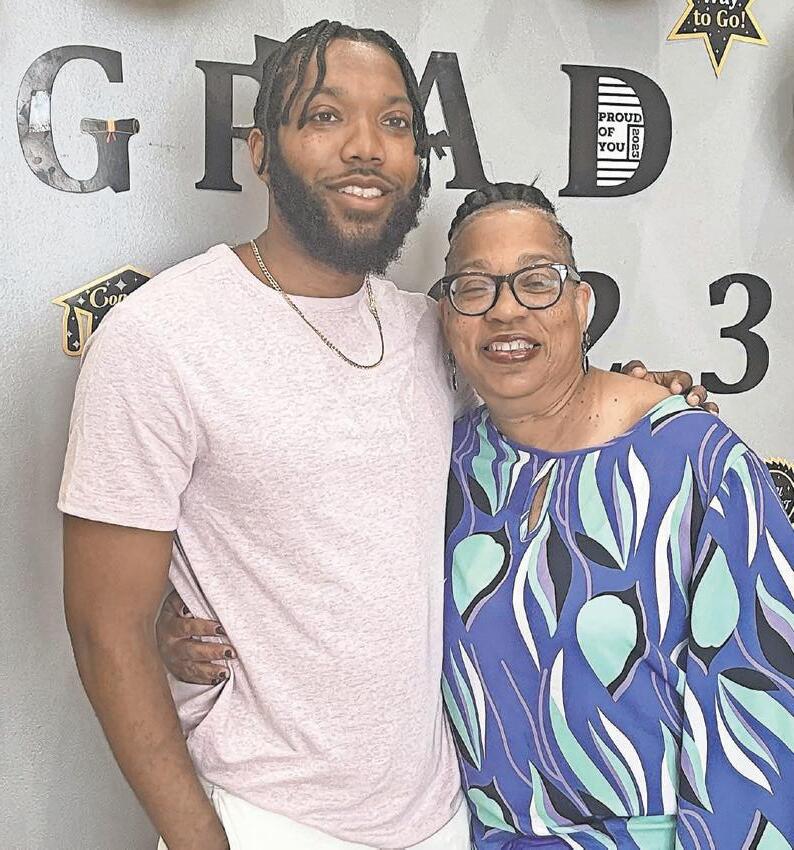
Wilson said because St. Louis reflected his hometown of Detroit in many ways, he and his wife moved out of the city and into the suburbs shortly after they began to raise a family.
“Environment has a major impact on the opportunities your children experience, and we wanted to remove some of the dangers and temptations as much as possible,” he said. “Sure, he does the social things that young men his age do, but I’m not worried that he’s going to get involved in the wrong kinds of things or get involved with negative kinds of people.”
Wilson said he’s proud that his son, who graduated from Quincy University in Illinois where he studied computer science and criminal justice, has found his niche after a few years pursuing his dream to become a professional football player.
“He’s a football coach and trainer for youth, college athletes and pro athletes and he’s good with people,” Wilson said. “And he’s gained a reputation for being honest, trustworthy and likeable. And he’s used to dealing with people of all races and backgrounds. So, I don’t worry about him – not much, anyway.”
Still, Wilson acknowledged that because of his son’s size and stature – at six feet, six inches tall and about 300 pounds – he sometimes worries others will view him as a threat.
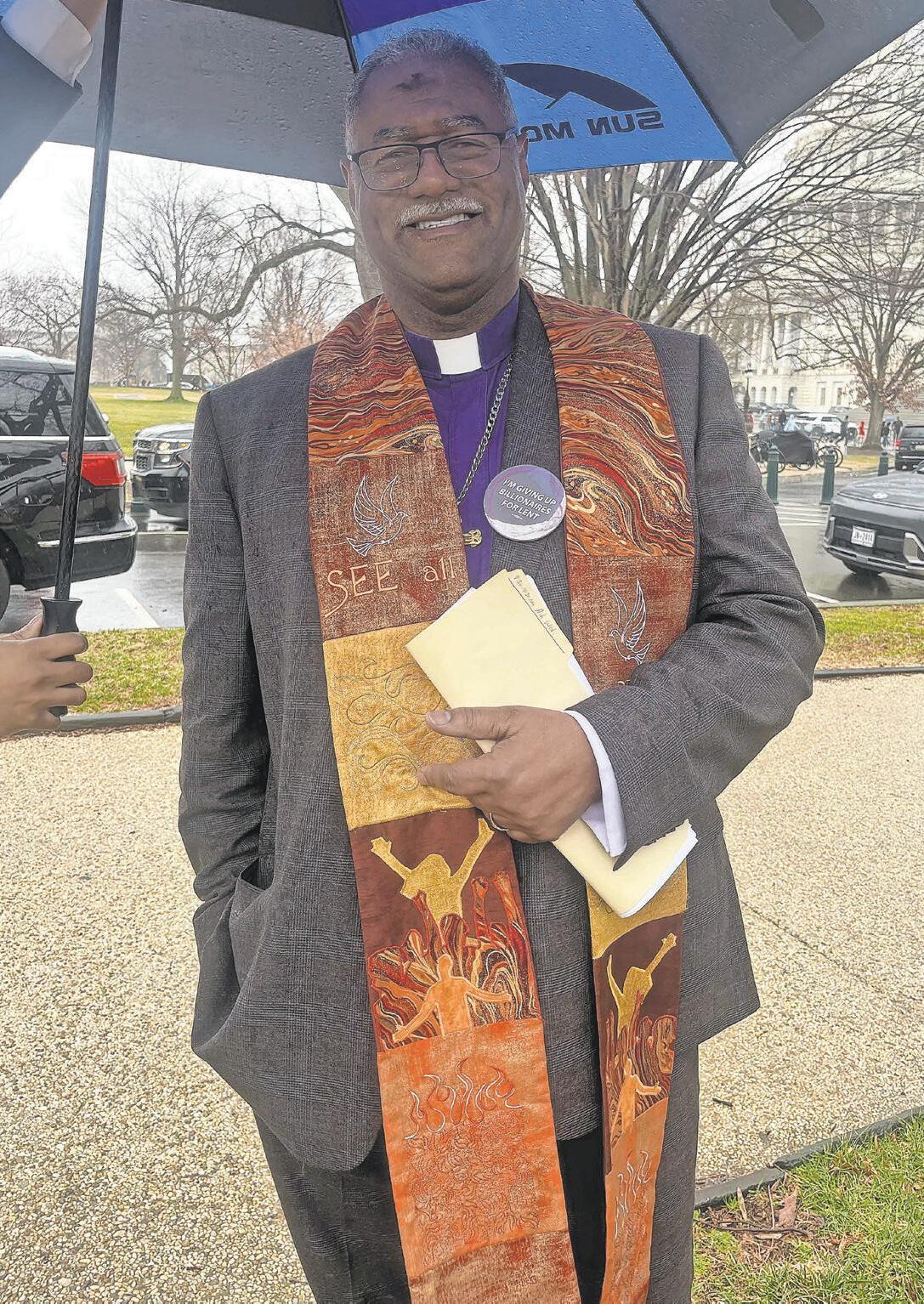
“He’s a big, Black man and my biggest concern has been that he’ll face a situation with a policeman who looks at his size and immediately stereotypes him,” Wilson said. “Another fear that I can’t shake is if he’ll run into another Black male who wants to prove himself and take on the big guy. I guess I just have to have faith that my son will know how to handle himself in those kinds of situations.”
Candace Jenkins always wanted a son, but she knew she could never be ‘dad’
After her divorce, Candace Jenkins, 64, a native of Detroit, Michigan, said she knew it would not be easy to raise her two children alone. So, she looked for other positive males to lend their guidance when her former husband, who lived in another state, was unavailable.
“I knew what it was like to be a little girl, so raising my daughter was easy. But when I had my son, as excited as I was, I had no misconceptions that I could play the role of his father,” Jenkins said.
Jenkins said she watched a lot of her peers get caught up in the stereotype of feeling the pressure of becoming “supermom.” She refused to go down that path.
“My children have learned a lot about life from me and they’ve learned a lot from their father,” she said. “And I think we must be honest: children need both parents. We both have our roles to play. Even after our children are adults, like mine are now, we continue to worry about them. The parental stress– especially for those of us with Black boys– never ends. It doesn’t end if we have daughters. That’s part of what it means to be a responsible parent,” she said.
Jenkins said her job as an attorney in Detroit’s juvenile court system helped her see the world in a very different light.
“My son Jared has an MBA and is now out on his own in Chicago,” she said. “He’s thriving and I am very proud of him. But my parenting style changed a lot after I saw the kinds of challenges that a lot of other families face because of their environment. When I looked at the cases that came across my desk and realized how important parental influence, or the lack thereof can be, I put even more time into my children’s lives.”
Jenkins recalls cases where children stayed out all night, fought their parents or got involved in illegal activity. She said she’s grateful she’s never had to face similar events.
“I can say that my children have both done all the things that society expects of youth,” she said. “But more important, they’ve done everything that I have hoped and expected them to do. They’ve finished school, they’re Christians with spiritual beliefs and values and they’re making their way on their own.”
Jenkins said her biggest advice to other parents is to remember that their children are unique individuals and have their own lives to live.
“We can share our experiences with our children, but we can’t expect them to follow in our footsteps,” she said. “They have to make their own mistakes and choices. But as a Black parent with adult children, I emphasize that we are not equals.”
I’m an advocate of the old ways of parenting, she said. “I make sure I do things that are worthy of their respect. And then I demand and expect their respect.”
Continued from D1
painful period, but now we can’t afford to be distracted by meaningless congressional interference. The devastating impacts of the federal job cuts must be our number one concern.”
Among those who gathered to witness the work March 10 was Megan Bailiff, CEO of Equus Striping, the pavement marking company that originally painted the letters.
Bailiff called the dismantling of Black Lives Matter Plaza, “historically obscene” and said its presence was, “more significant at this very moment than it ever has been in this country.”
The far right celebrated the shift online, with conservative provocateur Charlie Kirk visiting the site to hail, “the end of this mass race hysteria in our country.”
In Trump’s second term, Bowser has worked to avoid conflict and downplay any points of contention. She traveled to Mar-a-Lago in Florida to meet with Trump after the election and has publicly emphasized their points of agreement.
Trump recently revived a frequent campaign talking point about wanting a federal “takeover” of the nation’s capital, describing Washington as being riddled with crime, graffiti and homeless encampments. Bowser has refused to comment on reports that the White House is preparing an executive order targeting Washington. She publicly said that the greatest threat to the so-called Home Rule autonomy was “some of the people in Congress.”
Congressional Republicans have repeatedly threatened to interfere in city affairs in large and small ways. A measure currently before Congress, named the BOWSER Act, seeks to completely revoke the Home Rule Act of 1973, which grants the capital city limited autonomy.
Associated Press (AP) Journalist Nathan Ellgren contributed reporting to this article, which was originally published by AP.
By Mekhi Abbott Special to the AFRO mabbott@afro.com
The Howard University Esports Association represented Wizards District Gaming in NBA 2K’s new Nothing But Internet tournament. Wizards District Gaming is part of Monumental Sports and Entertainment’s esports program.
NBA 2K kicked off their Nothing But Internet tournament series with the Class Crowns Tournament, a college and university esports competition. The inaugural three-day tournament series began on Feb. 25 and was streamed exclusively on the NBA2KLeague’s Twitch TV channel.
“The next official 2K League season doesn’t start until the fall, but during this sort of hiatus, the League is going to be hosting some online tournaments throughout the spring,” said Andrew McNeil, vice president of esports at Monumental Sports and Entertainment. “Knowing that Howard University’s right up the street from us here and they’ve got an awesome sports program as well as NBA 2K players, we reached out to see if they were interested in representing Wizards District Gaming in this tournament.”
Monumental invited the Howard esports team to District E, their esports event and training center, for the tournament. Jevanie Davis serves as the team captain for Howard University’s 2K esports team. Malcolm Weekes, a freshman legal communications major and member of the Howard esports team, was appreciative of the opportunity to represent Howard in this innovative event.
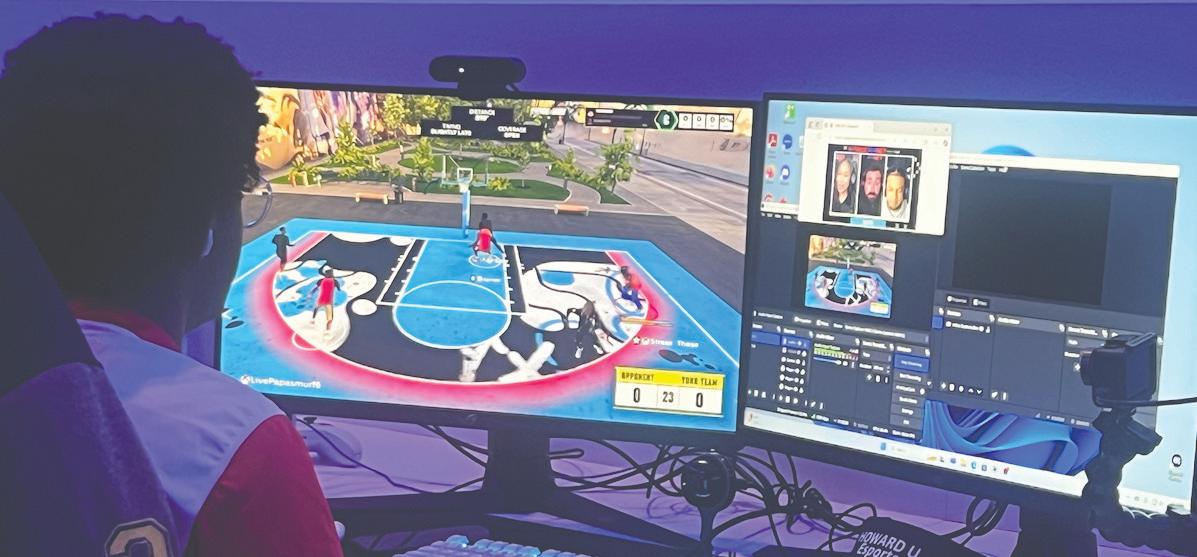
“It’s a really big opportunity for me, the team and for Howard in general to be able to partner with Monumental gaming to participate in an event like this because it’s a lot of exposure. There’s cameras everywhere, we were able to get a lot of content from this,” said Weekes.
“We’re young, we’re Black and we’re gifted, and we’re going to get done what needs to get done. Gaming is included in that.”
Weekes also spoke about how the event could be an opportunity for more people at Howard University to learn more about esports.
“Being at Howard, most people don’t know about gaming or may have certain stigmas about gaming competitively. But this is a good way to show people that this is an unique opportunity to get involved around campus and build community,” said Weekes. Monumental was one of the first mainstream sports organizations to heavily invest into esports, beginning in 2015. Part of Monumental’s mission is to serve as a catalyst to foster amateur gaming in the D.C. Metropolitan region.
The Class Crowns Tournament included
“It’s
a really big opportunity for me, the team and for Howard in general to be able to partner with Monumental gaming to participate in an event like this because it’s a lot of exposure.”
eight schools that span across the United States and Toronto. Howard faced the University of Maryland’s esports team in the tournament and lost in that round.. The University of Maryland advanced to the championship round, where they lost to Celtics Gaming, but both esports teams qualified for the championship tournament in June. NBA 2K’s Nothing But Internet esports tournament series will have three more unique events at the end of March, April and May. The championship series will be contested from June 24-26.
By
While I only had one childhood and can’t exactly compare growing up in D.C. to anywhere else, I can confidently say I wouldn’t have wanted to spend my youth elsewhere. There’s something special about living in a city, and for it to be the nation’s capital is even more significant. In a place that blends bigcity energy with small-town intimacy, kids who grow up in D.C. can foster close community ties while accessing opportunities that broaden their worldviews. If you can actually afford to rent or buy a home in D.C., here are some reasons I think you should raise your kids here:
There are people from all walks of life
While certain parts of D.C. are still segregated by race, education level and income, it’s still a diverse city. Now — more than ever — children can benefit from learning, listening, and growing alongside people with different backgrounds, traditions, and perspectives. If your neighborhood is particularly homogeneous, you can take your kids to events that celebrate other cultures or to restaurants that serve food from across the globe. Intentionally enroll them in groups with multicultural participants — whether that’s a sports team, afterschool program, or enrichment class. Constant exposure to diverse groups of people can make them more thoughtful, open, and compassionate adults. And isn’t that what the world needs right now?
D.C. has some of the best museums and historical institutions in the country
One of the best ways for kids to explore different cultures is by visiting places with accurate, factual information and programs curated just for them. Fortunately for D.C. residents, the Smithsonian Institution has 17 free museums
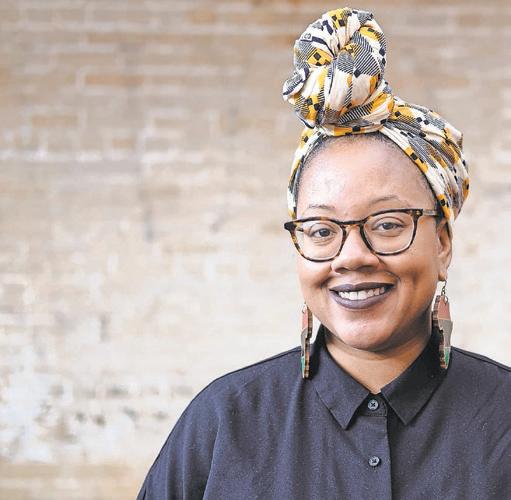
federal government town. There are a wealth of industries operating in the city, and many of them offer internships to students. By the time they graduate high school, your kid could have dabbled in multiple career fields, putting them at a competitive advantage when applying for college or entering the workforce.
in the area, plus the National Zoo. Many of these museums are destination field trips for children who travel hours to get here. For D.C. youth, it’s a quick bus, train, or car ride. In addition to the Smithsonian, D.C. has a wealth of other (mostly free) museums that dive into everything from Gogo Music to Historically Black Colleges. For many of my D.C. native friends, it wasn’t until they took a trip to another city and got hit with museum price tags that they realized how good they had it growing up.
D.C. has a wealth of academic and career opportunities for kids
If you live in the District, you know it’s more than a
And with about a dozen colleges and universities in the city, your kid could take college courses in high school, which I was able to do in 12th grade. Some students even earn associate’s degrees alongside their high school diplomas. Specialized nonprofits also host summer camps, weekend programs, and certificate classes that help young people prepare for adulthood.
It’s easy to get around D.C.
Whether you’re transporting your kids to school, an extracurricular activity, or an event, it helps if you can get there relatively easily. The more accessible places are, the more likely you’ll expose your kids to them. Depending on where you live, D.C. is walkable from one neighborhood to the next. The city also has a well-connected — albeit frustrating — public transit system.
As your kids grow up, the options for them to walk or catch the Metro will not only

free up your time by not having to chauffeur them around, but it will instill a sense of independence and responsibility that’s hard to cultivate when
you don’t live in a metropolitan area. I started catching the Metro in middle school, and it gave me a boost of confidence, plus critical thinking skills to
navigate not just my surroundings, but the many roads that life continues to lead me down. This article was reprinted with permission from The 51st.
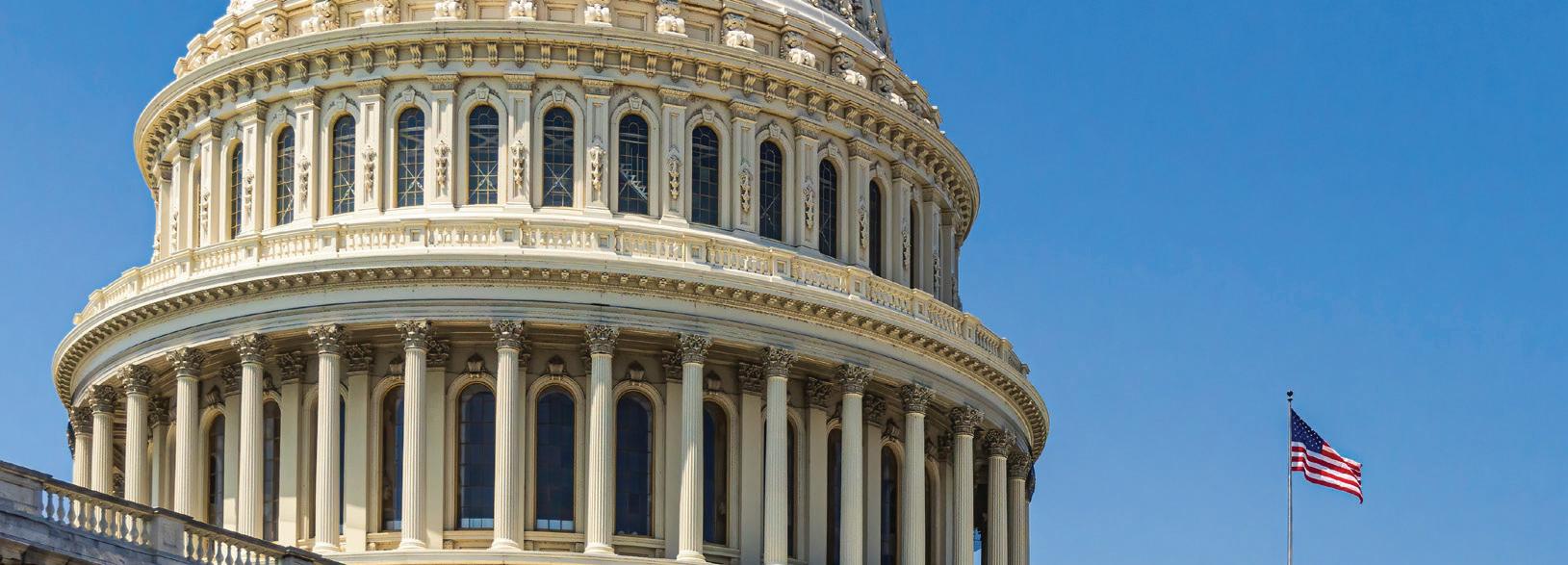
Enroll Today in Quality Affordable Health Insurance
DC residents losing employer health coverage qualify for a DC Health Link private insurance plan.
• 27 plans to meet every need & budget
• Free expert enrollment help
• Plans as low as $13/month, depending on household income
DON’T MISS YOUR CHANCE TO ENROLL
You must sign up within 60 days of when your employer health coverage ends.

By Latita Faulk Special to the
The 19th Annual “Blacks in Wax” production took place on March 7 at the Thearc Theatre in Washington D.C., providing a transformative experience for the scholars of Southeast Tennis and Learning Center. The program is more than just a performance- it’s an educational, creative and cultural journey that pushes them to explore talents that they never knew they possessed.
Southeast Tennis and Learning Center serves as the model for successful public-private partnerships, enabling life-changing, impactful opportunities to our community.
The afterschool program prides itself in maintaining the highest standards and offering quality programs that educate and inspire children, all while they learn to play tennis.
This year’s program featured young people performing on stage, taking on roles such as Martha Reeves, lead singer of Martha and the Vandellas, and former U.S. President Barack Obama.
